
Special Thanks to. Group Programmes Unit,
United Nations Department of Global Communications



United Nations Department of Global Communications



CSO Representative at the United Nations Department of Global Communications (UNDGC)
Member of the United Nations Academic Impact (UNAI) Korea

Web: www.hopetofuture.org | Address: 4F., Dana Bldg., Bongeunsa-ro 176, Gangnam-gu, Seoul, Republic of Korea 06125 Tel: +82-2-6952-1616 | Email: webmaster@hopetofuture.org
Managing Director
Jinhoan Choung | max@hopetofuture.org
Editor-in-Chief
Hyeonkyung Ha | ha_hannah@hopetofuture.org
Assistant Editor
Changju Lee | Seoul National University
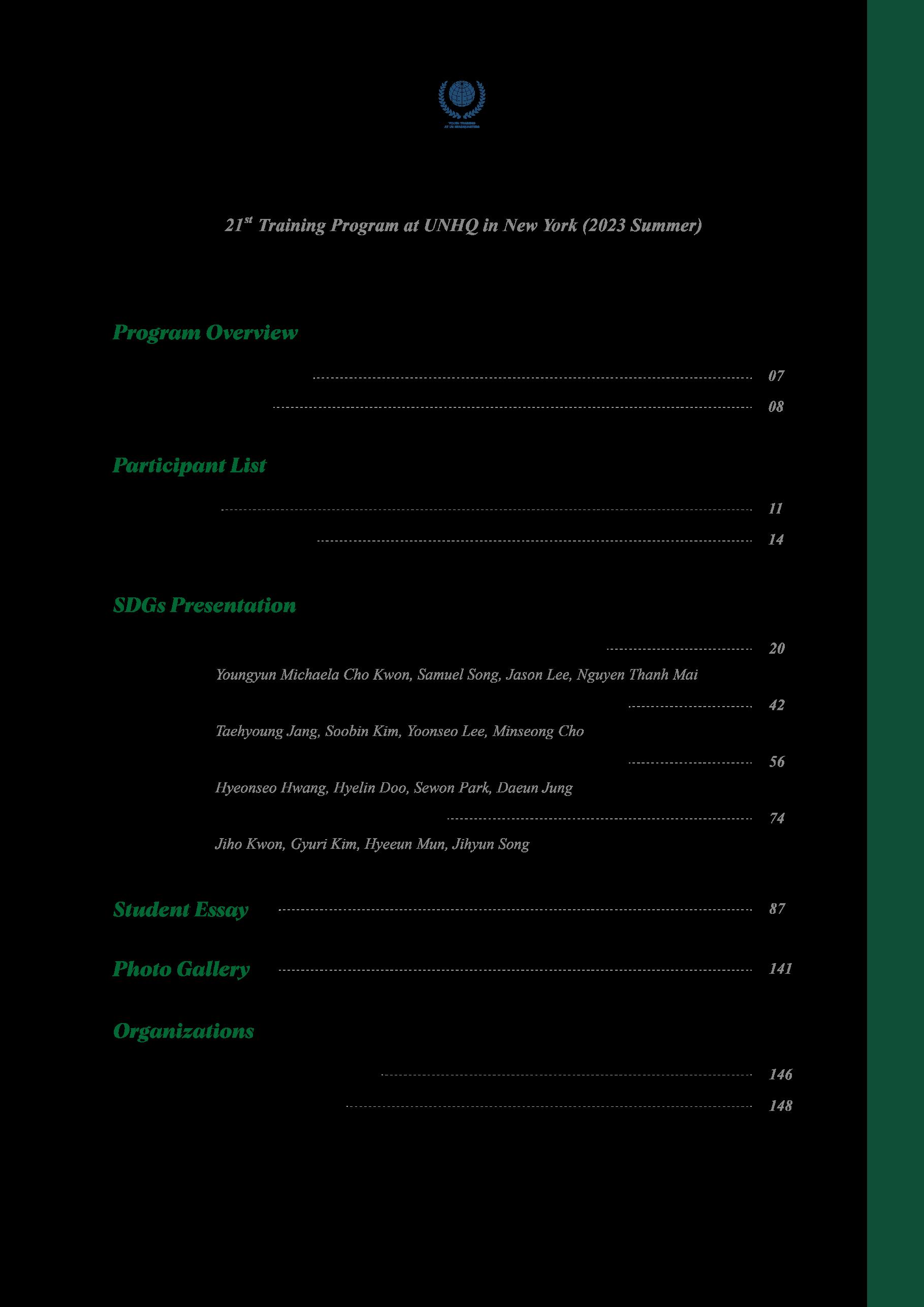

2023 Summer (August 4 – 12, 2023)
The United Nations has consistently underscored the pivotal role of youth empowerment and active engagement in addressing pressing global challenges.

Among the paramount initiatives in this context is the United Nations Youth Strategy, inaugurated in 2018, which aptly acknowledges the indispensable contribution of young individuals in realizing the transformative aspirations embedded within the Sustainable Development Goals (SDGs). This visionary strategy operates as a conduit for empowering youth and advancing their involvement in decision-making forums across the spectrum, ranging from grassroots communities to international arenas.

The essence of the UN Youth Strategy resonates with the broader United Nations Agenda, encompassing multifaceted dimensions of global progress and harmony. By fostering the participation of youth, this strategic framework not only bolsters the agency of young leaders but also fortifies the foundation of sustainable development and international cooperation. Empowering youth to actively shape policies, advocate for change, and propel innovative solutions aligns seamlessly with the broader mission of the United Nations, perpetuating a dynamic and inclusive global landscape.
The 'Training Program at UN Headquarters in New York' is an immersive and dynamic initiative meticulously crafted to empower and engage the global youth within the ambit of the United Nations' far-reaching agenda. In the face of an increasingly intricate and interconnected world, this program is meticulously designed to equip the forthcoming generation of leaders with the essential knowledge, proficiencies, and interconnected networks indispensable for effectively grappling with these complex challenges.
Executed at the heart of the United Nations Headquarters in New York, resoundingly attests to the proactive realization of the core tenets propounded by the UN Youth Strategy. Beyond serving as an academic milestone, this program distinctly serves as a pivotal conduit, uniquely poised to arm the imminent leaders with the requisite knowledge, skills, and networks indispensable for concretely
advancing the Sustainable Development Goals. Through an immersive delve into the inner mechanisms of the United Nations, this initiative fosters an in-depth cognizance of the intricate global dynamics at play and correspondingly amplifies the participants' capacity to bring about impactful change within their respective local communities.
Hosted by Hope to the Future Association, a civil society representative associated with UN DGC, the program primarily centers on the salient global concerns addressed by the UN and its member states. This carefully tailored initiative offers a comprehensive curriculum meticulously delineating the Sustainable Development Goals and the multifaceted undertakings of the UN, seamlessly delivered by eminent UN officials and subject matter experts. Through interactive workshops, lectures, and networking opportunities, participants will develop a multi-perspective understanding of the UN's role in addressing global challenges, as well as hone their critical thinking, public speaking, and leadership skills.
Particularly, the 21st training program seizes the moment to scrutinize the United Nations' fidelity to its articulated objectives: the preservation of international peace and security, the safeguarding of human rights, the facilitation of humanitarian aid, the advancement of sustainable development, and the upholding of international law. By encapsulating the essence of youthful energy and inventive thought as instruments for actualizing the transformative vision encapsulated by the United Nations Agenda, this program epitomizes a broader movement. The outcomes engendered herein are a testament to the immense potential embodied by the youth demographic, poised to sculpt a world that mirrors the collective aspirations encompassed by the SDGs and the overarching mission of the United Nations.
At the heart of the '21st Training Program at the United Nations Headquarters in New York' lies a resolute focus on the Sustainable Development Goals (SDGs), an evolutionary framework conceived to transcend the achievements of the Millennium Development Goals (MDGs). These SDGs encompass a sweeping vision, drawing on the triumphs of the past while galvanizing the global community to transcend poverty in all its facets.
Central to the SDGs' distinctiveness is the clarion call for collective action, extending across nations, from the economically challenged to the affluent, to champion prospe-

-rity whilst nurturing our planet's wellbeing. Acknowledging that poverty eradication is inextricably intertwined with robust strategies that stimulate economic growth and embrace an array of societal requisites including education, healthcare, social safeguards, and employment prospects, the SDGs also confront the pressing issues of climate change and environmental conservation. Though not legally binding, the SDGs entrust governments with the mantle of responsibility, charging them to establish national frameworks that embody the essence of the 17 Goals. The onus of monitoring and evaluating the advancements towards these

Goals rests primarily with individual countries, demanding the acquisition of precise, accessible, and punctual data.
This Agenda is far more than a mere blueprint; it's a clarion call for people, planet, prosperity, peace, and partnership. It's a resolute endeavor to fortify universal peace within the realm of greater freedom. Akin to this initiative, we recognize that vanquishing poverty, in all its dimensions, is our paramount global challenge, an essential prerequisite for sustainable advancement.
Unified in collaborative partnership, countries and stakeholders alike commit to actualizing this plan. With unyielding determination, we strive to emancipate humanity from the clutches of destitution, and to mend and safeguard our ailing planet. To catalyze this transformation, we pledge to adopt audacious steps, pivoting the world towards an enduringly sustainable and resilient trajectory. On this collective odyssey, we affirm that none shall be left behind.
The 17 Sustainable Development Goals and their 169 corresponding targets stand as a testament to the grandeur and aspiration of this universal Agenda. These Goals are designed to not only build upon the legacy of the Millennium Development Goals but also to fill the gaps left


by them. They are intricately woven, inseparable, and poised to balance the triad of sustainable development: the economic, social, and environmental dimensions.
Crucially, the youth of today stand as the torchbearers of these aspirations. Their energy, creativity, and passion hold the potential to infuse new life into these Goals. As we navigate the intricacies of this Agenda, we must recognize the indispensable role of youth in catalyzing change, igniting innovation, and driving progress. It's their spirit of advocacy, their willingness to question, and their capacity to inspire that will shape the trajectory of these Goals. As we stride forward, let us harness the vigor of the youth, amalgamating it with the wisdom of experience, and together, embark on a journey of sustainable transformation that knows no bounds.
Written by Hyeonkyung Ha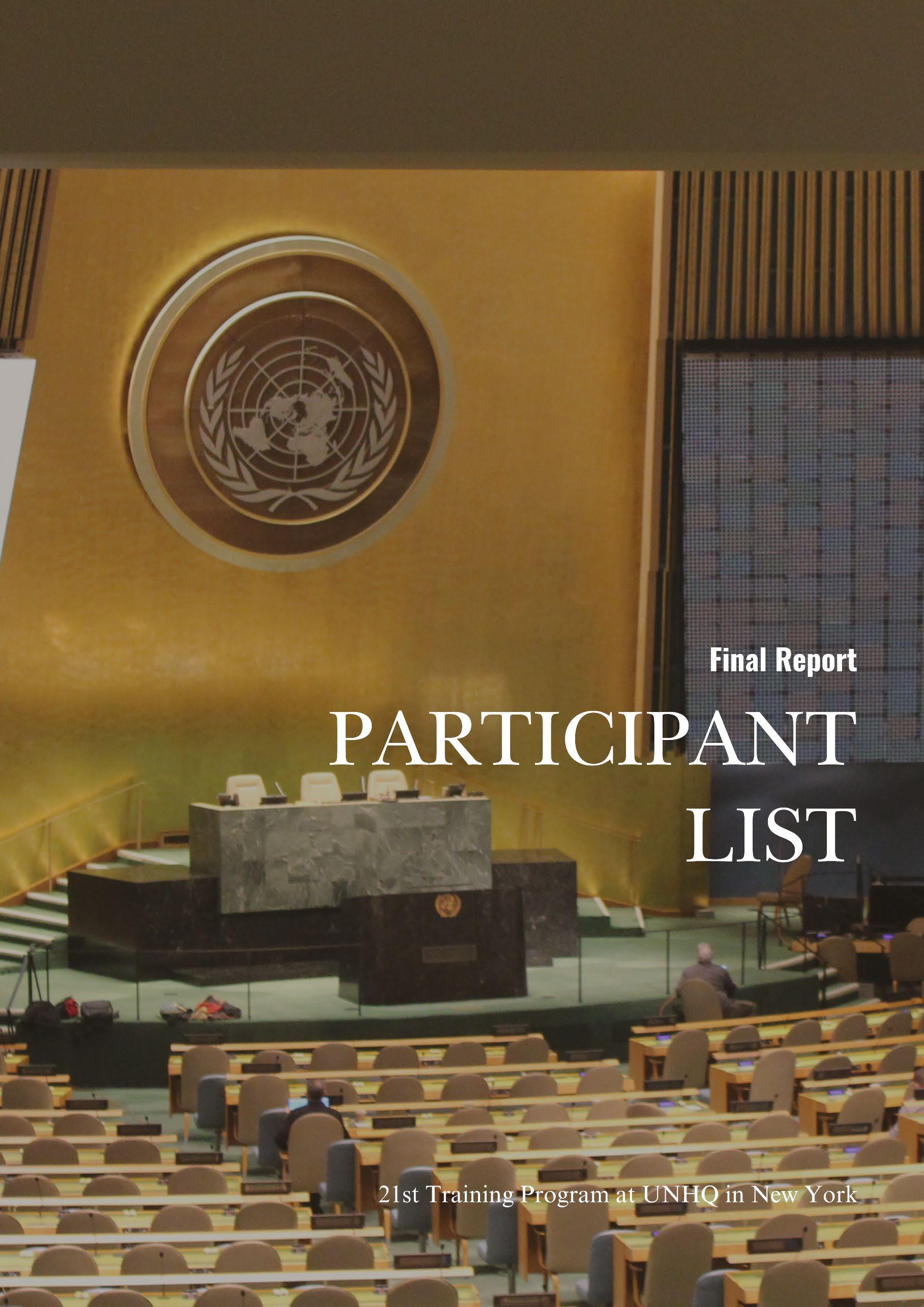

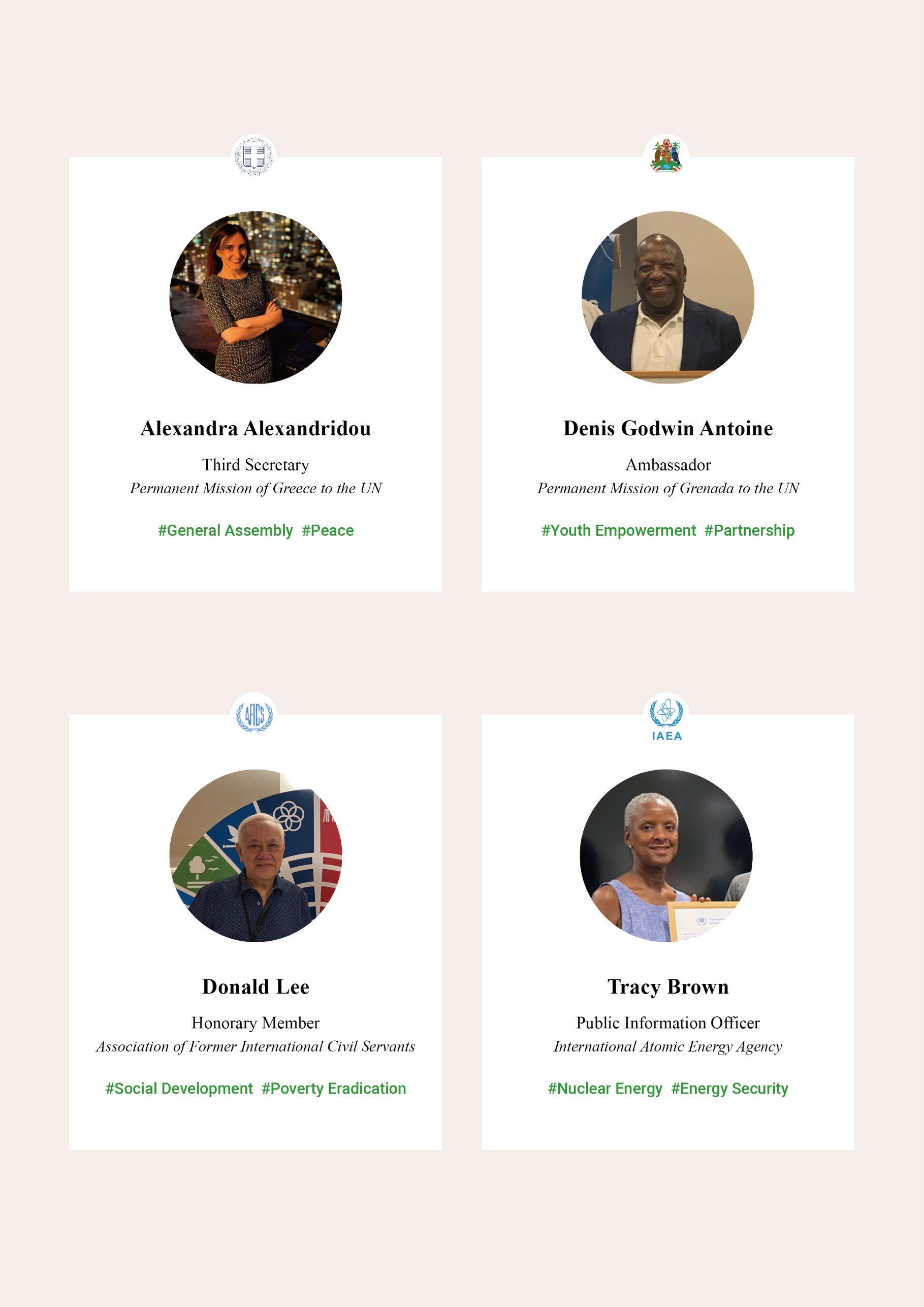





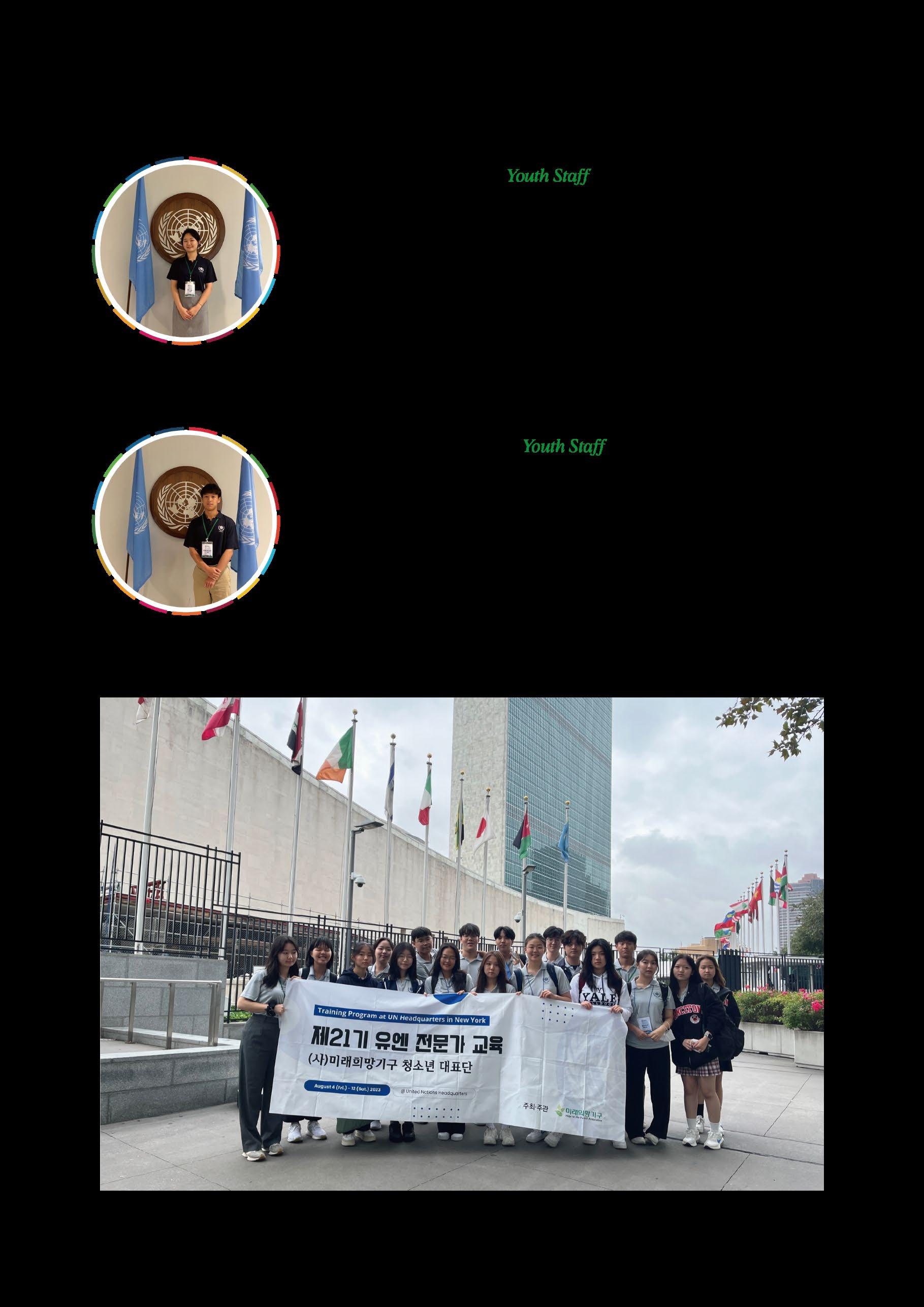

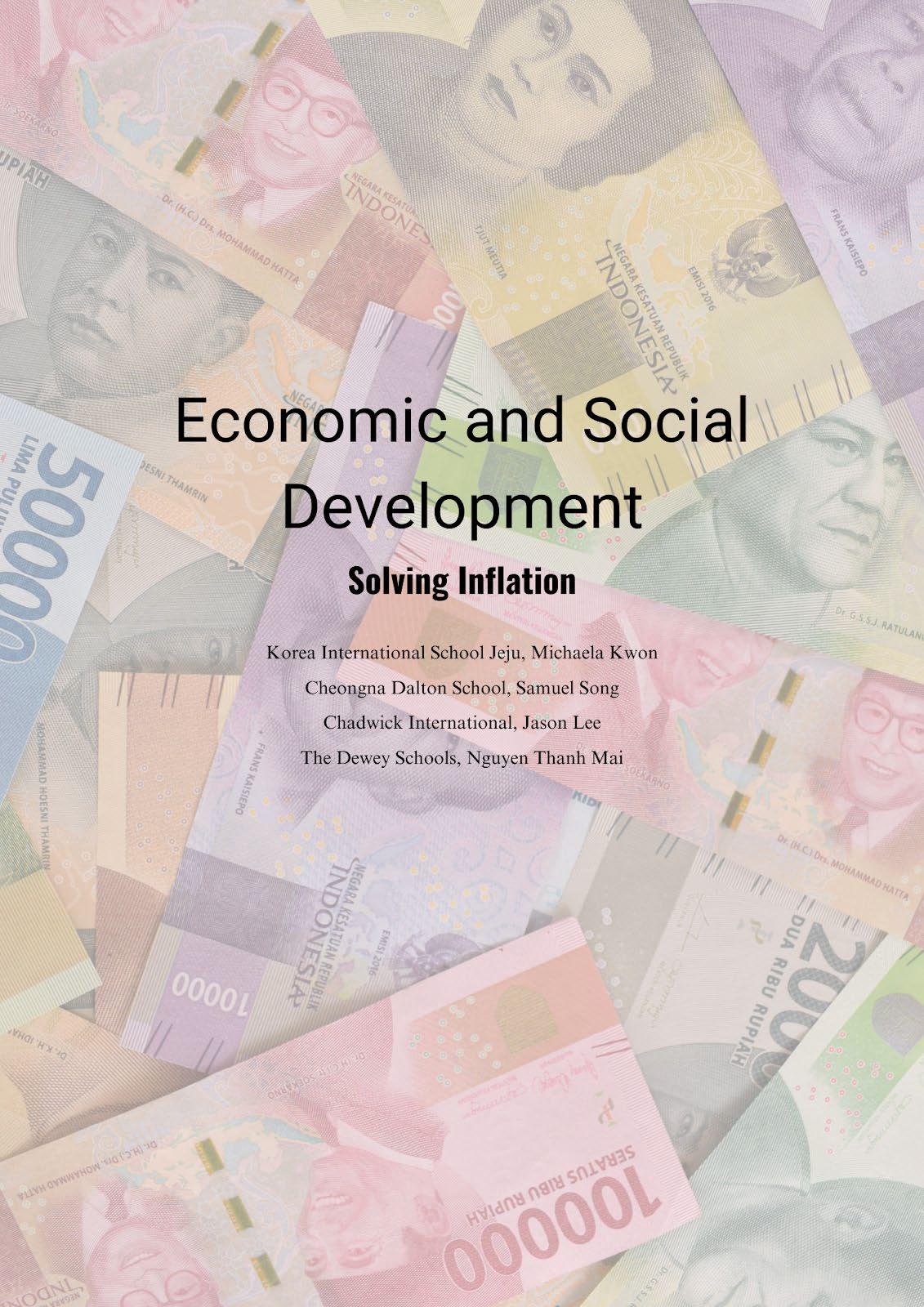
I. Introduction
II. Inflation case studies
A. Venezuela
B. Korea
C. The US

A. Eroding Purchase Power
B. Disproportionately Impacts Lower-Income Consumers
C. Inflation Keeps Deflation at BayYouth Action
D. Inflation Lowers Debt Service Costs
E. Inflation Lifts Growth & Employment in the Short Term
F. Increased Inequality
IV. Solutions to Inflation
A. Proposed Solutions
B. Potential Solutions
Inflation is an economic phenomenon characterized by the persistent rise in the overall price level of products and services in an economy over time. When inflation occurs, the purchasing power of money decreases, so the same quantity of currency can now purchase fewer goods and services than before.
Typically, inflation is measured using a variety of consumer price indices that track the average price changes of a predetermined basket of commonly consumed products and services. These indices reveal the evolution of prices over time and serve as indicators of inflation rates.
Among the factors that can contribute to inflation are:
Demand-pull inflation: This occurs when the demand for goods and services outpaces their supply. When demand exceeds supply, businesses may increase prices to balance the market.
Cost-push inflation: This type of inflation is driven by rising production costs, such as increased wages or raw material prices. Businesses pass these higher costs on to consumers through higher prices for their products.
Built-in inflation: Also known as wage-price inflation, this occurs when workers demand higher wages to keep up with rising prices, and businesses then increase prices to cover the higher wage costs.
Monetary inflation: When a central bank increases the money supply significantly, it can lead to more money chasing the same amount of goods and services, driving up prices.
Supply shocks: Sudden disruptions in supply, such as natural disasters or geopolitical events, can lead to shortages and subsequently higher prices for affected goods.

Moderate inflation is considered normal and even advantageous for the economy, as it can spur spending, investment, and economic expansion. However, high or hyperinflation, in which prices soar out of control, can have severe negative effects, such as eroding savings, distorting economic decisions, and undermining economic stability.
Inflation erodes the value of money, thereby diminishing the purchasing power of consumers' income. In order to purchase the same products and services, people must spend more money, which lowers their standard of living.
It is difficult for businesses and individuals to plan for the future when inflation is high or unpredictable. This can result in delayed expenditures and investments.
As a result of inflation, consumers are able to purchase fewer products and services with the same amount of money than before. This consequently lowers their overall quality of living. As a result of the unpredictability of price movements, businesses confront uncertainty in their planning and investment decisions, which could potentially retard economic growth. In response to inflationary pressures, central banks raise interest rates and borrowing costs, which impacts the cost of mortgages, loans, and credit card debt for individuals and businesses. Additionally, inflation erodes the value of savings and investments, causing individuals to seek out assets that are more resistant to its effects. As employees seek higher compensation in response to rising prices, wage pressures may induce businesses to raise prices further to cover increased labor costs. Inflation consequently redistributes wealth by benefiting debtors while disadvantaged creditors and savers. As high inflation weakens a nation's currency, international trade dynamics may shift, affecting the nation's competitiveness and import costs. In a broader societal context, persistent inflation can cause economic instability, strain government finances, and even spark social and political unrest, highlighting the significance of effective inflation management for the health and stability of the economy as a whole.
To manage and control inflation, governments and central banks employ monetary policy instruments such as interest rate adjustments and open market operations, as well as fiscal policies such as government expenditure and taxation. The objective is to maintain a stable and moderate inflation rate that bolsters economic expansion while averting its negative effects.
Central banks play a crucial role in implementing monetary policy instruments. For instance, adjusting interest rates can affect borrowing costs and consumer expenditure. When central banks raise interest rates, borrowing becomes more costly, reducing consumer spending and corporate investment. Open market operations, which involve the purchase or sale of government securities, affect the money supply and market liquidity, thereby influencing spending patterns.
Additionally, fiscal policies contribute to inflation control. Governments can reduce excessive demand through expenditure cuts and tax increases. Reduced government expenditures reduce total demand, thereby mitigating price inflationary pressures. In addition, increasing taxes reduces consumers' disposable income, causing them to spend less and reducing inflationary pressures.
In this endeavor, supply-side policies are equally essential. Investing in infrastructure and boosting productivity through labor market reforms can increase production capacity, thereby alleviating supply constraints and lowering cost-push inflation. Promoting competition can also result in competitive pricing and an increase in supply, which contributes further to price stability.
The ability of central banks to effectively communicate their inflation targets and policy intentions can help influence public expectations. Establishing a sense of predictability can impact purchasing and investment decisions, as well as wage negotiations, ultimately leading to more favorable inflation outcomes.
What countries are picked and why are they important?
I have chosen three distinct countries – Venezuela, South Korea, and the United States – for their unique characteristics and economic standings. Venezuela represents a developing nation with a history of economic turmoil and past hyperinflation. Meanwhile, South Korea is a country that was recently recognized as a developed country in 2022 by UNCTAD, becoming the developed country from developing country throughout decades (Yun-hyung). The primary focus on South Korea revolves around its developmental trajectory and the associated implications, setting it apart from the other two countries. Lastly, the United States, a global economic powerhouse, serves as an illustration of how a robust and affluent nation can grapple with the impacts of inflation. As the US was one of the countries that are heavily affected by COVID-19 and recent wars, the inflation of the US demonstrates the problems that developed countries possibly possess. This examination of inflation rates can shed light on potential solutions that align with SDG 8 – aiming for decent work and economic growth.
Although the case studies of Venezuela, South Korea, and the US wouldn’t produce exhaustive information and conclusions on inflation and require vast amounts of research, the general trend of those three countries, of which this essay is mainly concerned, would let us observe the general trend of inflation.
In summary, these three countries, each possessing a distinct economic status and experiencing different types of inflation, serve as illustrative examples to compare and contrast the challenges they face. Moreover, their inflation causes and possible solution to inflation could be related with SDG 8 – decent work and economic growth – because inflation stalls economic development and has close relationship with economic growth.

Venezuela, once a prosperous nation in Latin America with the world's largest oil reserves, encountered hyperinflation starting in 2013. The country's heavy reliance on oil exports, constituting more than 90% of its export earnings, left it vulnerable to economic shocks (Yang).”
Venezuela’s petroleum-dependent economy started to boom as oil prices rose in 2004, but, in 2014, in which oil prices fell, Maduro printed more money to make up the budget deficit (Vox). Hugo Chavez, a former president before the election of Nicolas Maduro, enacted various social programs to help poverty and inequality, creating the basis of hyperinflation and exacerbating the budget deficit of Venezuela. The cumulative effect of Chavez's deficit spending and Maduro's monetary policies led to escalating debt levels and further printing of money to compensate for falling oil revenues.
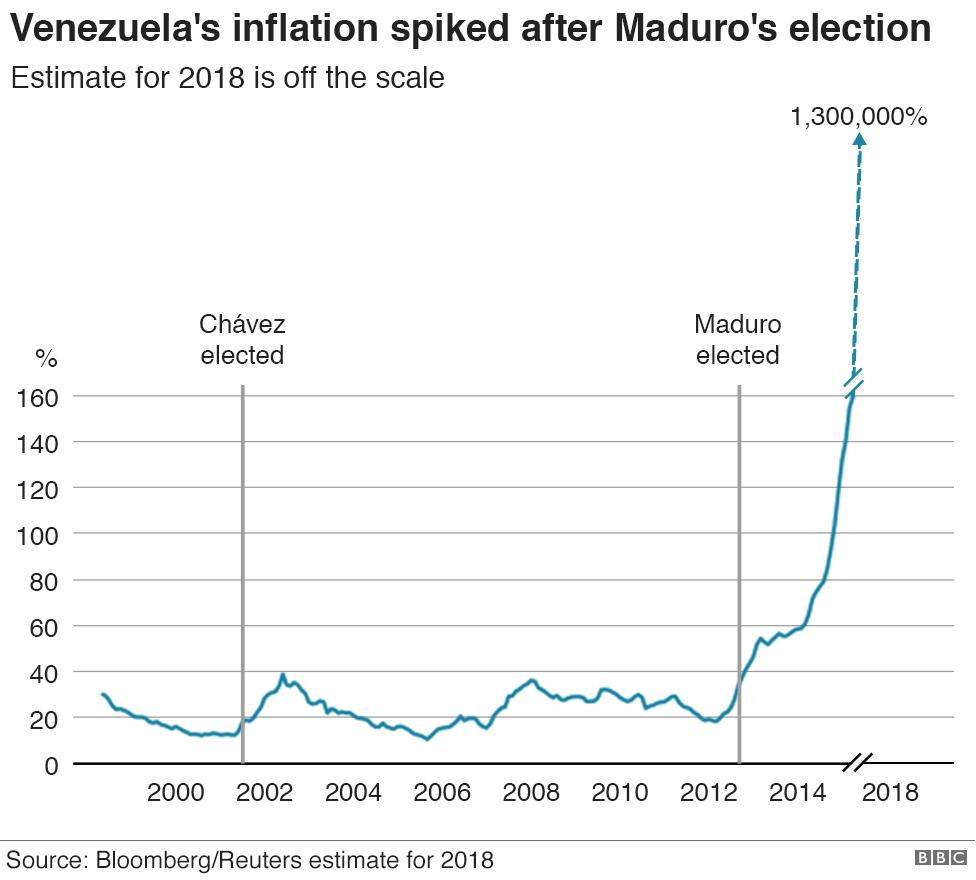
Moreover, because of the government’s control of the currency exchange in its border, also known as fixed exchange rate, laid the groundwork for the devaluation of the Bolivar relative to the US Dollar (USD).
Around January 2021, Venezuela’s inflation rate started to decrease significantly, a phenomenon called “deceleration,” or the slowing down, signifying the better economic situation of Venezuela. The main reason is that Venezuela’s “de facto dollarization provided oxygen to struggling businesses after the government loosened currency controls in 2019 (Reuters).” Despite this improvement, the inflation rate, as indicated below, remains distressingly high, underscoring the nation's ongoing hyperinflation and its multifaceted socio-economic challenges.

The impacts of the economic crisis can be found in various forms. Around 32 percent of the population already had food insecurity and over 50 percent of doctors and nurses fled to other neighboring countries, such as Colombia, Ecuador, the US, and so on, increasing the health insecurity in its borderline (Rendon). The decreasing population of working age, professionals, and children exacerbated the social and economic problems of Venezuela, impending Venezuela’s future developments. Additionally, the situation has worsened during the Covid-19 pandemic. The migration that most Venezuelans did, often to Brazil or Columbia, are not allowed due to COVID-19, forcing countries to close borders and putting Venezuelan migrants back to their countries (Reuters).

As of 2023, political repression and mistreatment persist within Maduro's regime, with at least 875 political prisoners unjustly incarcerated between 2014 and June 2022 (Human Rights Watch). Social inequality and manipulation remain rampant, reflecting the ongoing challenges facing Venezuela under the Maduro regime.
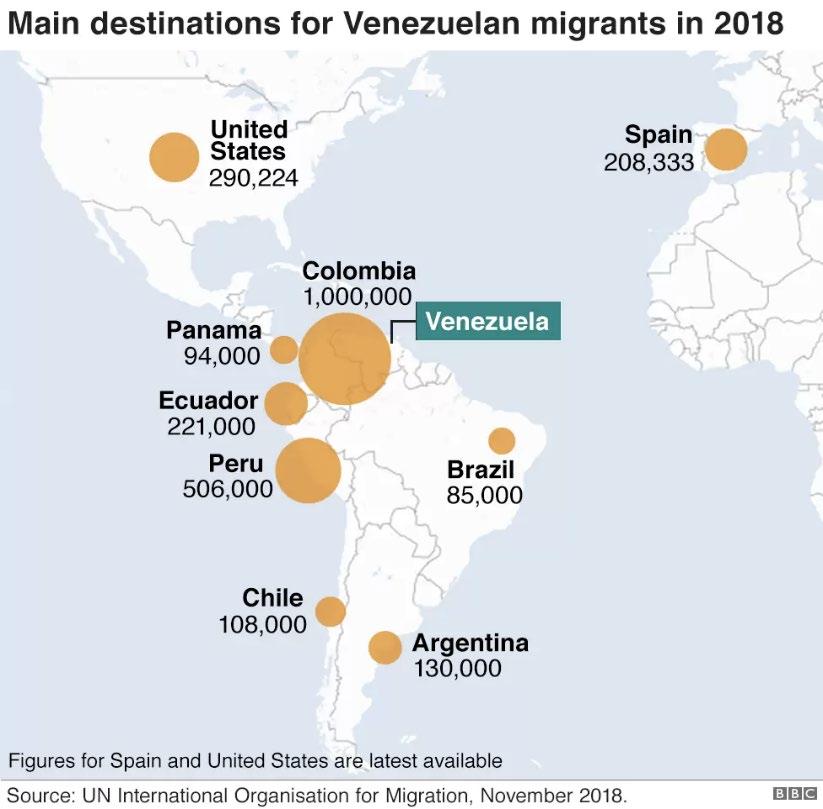


The extensive migration of Venezuelans to neighboring countries has gravely weakened labor and human rights within the nation, making the achievement of SDG targets 8.1, 8.2, 8.3, and 8.5 increasingly distant. The weakened economy of Venezuela due to hyperinflation, corruption, and other socio-economic problems are hampering the goals of SDG 8. Despite a modest reduction in the poverty rate from 65.2% to around 50% in 2022, the persistently high poverty rate underscores the ongoing challenges faced by Venezuelan citizens (Sequera).
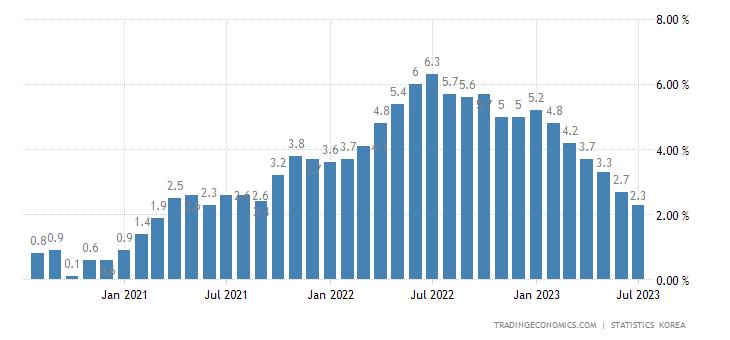
South Korea experienced relatively low inflation, as evidenced below, until 2021, when the global economy was disrupted by the COVID-19 pandemic. South Korea, though it quickly made a deceleration from big crises, such as COVID-19 and Russo-Ukrainian War, still suffered severely from inflation, partly because of collapsed supply chain and inactive commerce.
A deeper analysis of the causes behind the surge in inflation during 2021 and 2022 reveals that the collapse of the global supply chain and rising energy prices due to the Russo-Ukrainian War compounded inflationary pressures. The increased costs of energy and raw materials led to higher overall prices, heightening inflation (Dukpa and Yunjong). Recent data shows that South Korea's inflation rate has dipped below 3%, signaling a stable and robust economy.
While general inflation has subsided in South Korea since October 2022, gender inequality remains a pervasive issue within Korean society. This disparity is primarily attributed to the country's adherence to Confucian ideals, deeply ingrained stereotypes, and societal attitudes. As of 2023, Korea's gender wage gap is 32 percent, ranking 105th out of 146 countries, which highlights unequal gender pay in South Korea.
to Do.” OECD, 25 Oct. 2021, www.oecd.org/country/korea/thematic-focus/gender-equality-korea-hascome-a-long-way-but-there-is-more-work-to-do-8bb81613/.
Moreover, having the lowest fertility rate in the world, Korea is now getting more and more populated with the elderly and adults. The aging trend has led to increased relative poverty in South Korea, being the 4th highest country in OECD (Soungbin).
So far, inequality in South Korea is the most emerging issue as of 2023.

SDG 8 Connection
South Korea's transition to a developed nation necessitates a focus on SDG target 8.4, emphasizing efficient resource utilization and conservation. Additionally, SDG target 8.5 warrants ongoing attention due to the persistent issue of gender inequality in the country.

“After four decades of low U.S. inflation, high inflation has emerged as a central economic problem of the COVID era. As of September 2022, the rate of CPI inflation over the previous 12 months was 8.2 percent. This experience has produced an outpouring of analyses of why inflation has risen and where it might be heading in the future (Ball et al.).”
The United States was notably impacted by the COVID-19 pandemic and conflicts such as the RussoUkrainian War. Inflation was largely driven by "COVID-induced supply chain disruptions," leading to price increases across goods and energy sectors.
The implication of COVID-19 pandemic was most devastating to low-income employees and citizens. While high-wage workers’s employment decreased roughly by one percent, low-wage workers experienced an 11.7 percent decrease of employment during the COVID-19 (Hu). The wealth gap between the high-income citizens and low-income citizens had become sharper after COVID-19 and inflation rate, hampering the progress of the UN’s SDG 10, which aims to reduce inequality in society.

Although the US has to mainly focus on targets 8.4 and 8.5 by looking at the widened wealth gap between the poor and the rich, the US’s GDP generally rose after 2020, signifying the boost of the US's economy, as we can see in the figure below. As the US is one of the strongest countries in the world because of its dollar currency, which is considered as one of the most powerful currencies, and the biggest economy in the world, the US’s relationship with SDG 8 doesn’t require as much attention as developing countries, such as Venezuela and Korea.
The foundation–cause–of inflation is various. It can be caused by pandemics, changes in government policies, war and tensions, devaluation of the monetary value, and countless more elements that can influence or even trigger inflation in the economy. Among the countless causes of inflation, the effects on society it also numerous. Moreover, the influence of inflation is also affecting social aspects, in addition to the economic aspects.
Before proper research, the stereotypical thoughts about inflation, as being the cause of the degradation of the economy, result in prejudice–ensuring that inflation will only cause negative effects on both social and economic aspects. Nevertheless, the proper and steady growth of inflation prevents unsuitable changes in the economy in addition to providing beneficial impacts on social aspects.
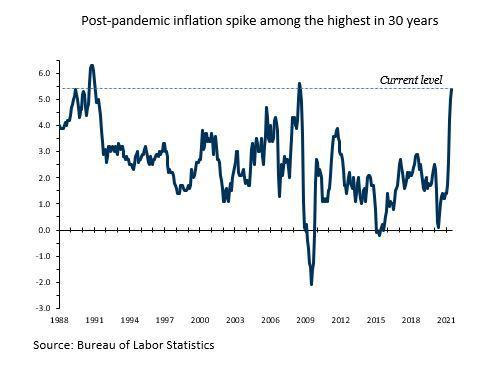
I researched the 6 main outcomes that inflation might cause in both social and economic fields. There are both positive and negative, and some have the trait of both. The consequences (and beneficial outcomes) are not always identical to one another, on the other hand, these 6 main outcomes occur frequently when inflation occurs in the economy.
A general increase in prices over time diminishes customers' purchasing power because a fixed quantity of money will eventually allow for less consumption. Whether there is 2% or 4% inflation, consumers still have less purchasing power. Simply put, they lose it twice as quickly and at a higher rate as a result. If long-term inflation doubles, compounding ensures that the entire price level will rise by more than twice as much. A basket of goods and services representative of total consumer spending is used to calculate inflation. The most widely used measure of inflation is the Consumer Price Index (CPI), although the Federal Reserve bases its inflation targeting on the PCE Price Index.
*Purchasing Power: The value of currency explained in the number of goods or value of services that one unit of money can buy
Compared to consumers with greater incomes, people with lower incomes tend to spend a larger percentage of their money on needs. This implies they have less protection from the loss of purchasing power brought on by inflation. Core inflation is frequently the focus of financial market participants and policymakers. Food and energy prices are not included in this measure of inflation because they are typically more volatile and less indicative of long-term inflation patterns. However, lower-income earners spend a disproportionately big amount of their weekly or monthly household budgets on food and energy commodities that are difficult to replace or forgo when prices rise. The ownership of assets like real estate, which has historically been used as a hedge against inflation, is also less common among the poor. On the other hand, The Consumer Price Index for Urban Wage Earners and Clerical Workers (CPI-W), which is an index of consumer prices for hourly wage earners and clerical workers, provides inflation protection for recipients of Social Security benefits and other federal transfer payments in the form of cost of living adjustments (COLA).
This has a connection to SDG 1, no poverty. Cause as the general price rate increases and set up a burden in front of the low-incomers, it will be putting a lot of pressure on the workers to purchase food and other necessities that will support them to have a healthy and glossy life. Resulting in poverty situations.

Over the long term, the Fed's target inflation rate is set at 2%. It can thus fulfill its obligations to maintain stable pricing and achieve maximum employment. Instead of emphasizing stable prices, it concentrates on moderate inflation because this helps the economy function, gives room for mistakes in the case that inflation is underestimated, and prevents deflation. Price declines as a whole have the potential to be far more unstable than inflation of the same magnitude. Lenders might charge interest to make up for the inflation which would likely reduce repayment amounts.
Additionally, by enabling them to make future repayments with inflated currency, it aids debtors in paying off their obligations. Deflation, on the other hand, increases the cost of debt payment in real terms because wages are expected to decrease along with prices. The fact that wages are sticky to the downside is one reason why moderate inflation (rather than deflation) is the norm. Layoffs are the most likely option for businesses facing a decline in demand because workers typically oppose attempts to reduce their pay during an economic slump. A wage freeze will result in a decrease in actual labor costs
if inflation is positive. The advantages of inflation are simply protection from deflation until price increases exceed the usual and anticipated rate, as inflation can get out of hand if it becomes high enough.
Governments and central banks have a strong motive to control inflation, as the aforementioned examples indicate. Over the past century, the strategy has been to control inflation using monetary policy. Policymakers can increase the minimum interest rate when inflation threatens to surpass a central bank's target (usually 2% in industrialized economies and 3% to 4% in emerging ones), which raises borrowing costs throughout the economy by limiting the money supply. As a result, inflation and interest rates frequently follow one another. Central banks can tame the economy's animal spirits or risk appetite and the ensuing price pressures by boosting interest rates as inflation soars. For a brand-new expansion project, the anticipated monthly payments on that bond or that corporate bond issue appear a little expensive. In the meanwhile, newly issued Treasury bonds will often offer higher risk-free rates of return, rewarding savings.

While individuals with fixed-rate mortgages and other loans gain from repaying these with inflated money, cutting their debt service costs after accounting for inflation, new borrowers are likely to incur higher interest rates when inflation rises. Consider borrowing $1,000 at a 5% yearly interest rate. The annual decrease in your inflation-adjusted loan balance will outweigh your interest charges if annual inflation rises to 10% in the future. Note that this does not apply to credit card debt, home equity lines of credit, or adjustable-rate mortgages (ARMs), which normally permit lenders to raise their interest rates to keep up with inflation and Fed rate hikes.
In the short run, higher inflation can result in quicker economic growth. The U.S. real gross domestic product (GDP) rose 3.2% annually on average between 1970 and 1979, well above the economy's average growth rate since. However, the 1970s are remembered as a decade of stagflation. High inflation makes saving less appealing since it gradually reduces the purchase value of money. Consumer spending and company investment may increase as a result of that possibility. As a result, unemployment frequently initially drops as inflation increases. The Phillips curve, which expresses the relationship, was developed in response to historical findings of the inverse link between unemployment and inflation. Higher inflation can, at least temporarily, increase demand while cutting inflationadjusted labor costs, resulting in job growth. However, the cost of excessive inflation must eventually be paid in the shape of a difficult recession that resets expectations, or else there would be prolonged economic underperformance.
*Phillips curve: An economic concept developed by A.W. Phillips stating that inflation and unemployment have a stable and inverse relationship.
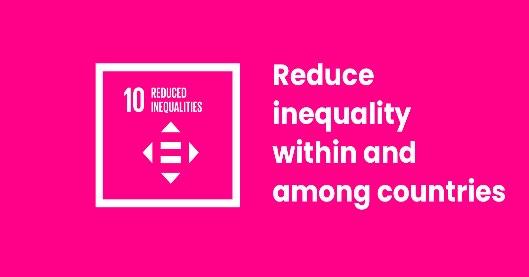
In the intricate fabric of economic dynamics, inflation emerges as a formidable factor with far-reaching effects. Its consequence of escalating the general survival price rate creates a heavy burden, particularly for those dwelling in the depths of relative and absolute poverty. This amplifies their struggle, as basic necessities become increasingly costly and their precarious financial stability further erodes.
The reverberations of inflation extend beyond price fluctuations, permeating the realm of income and wealth inequality. This widening rift between societal strata intensifies existing disparities and begets new divides. The surge in essential costs deepens the gap between two distinct groups, underlining the persistent inequality ingrained in our society.
The nexus of inflation, inequalities, and Sustainable Development Goals (SDGs) 8 and 10 is intricate yet compelling. SDG 8's emphasis on Decent Work and Economic Growth is strained by inflation's impact. The erosion of purchasing power and limited access to quality jobs resulting from inflation hamper the achievement of meaningful and sustainable employment for those already marginalized.
SDG 10, centered on Reducing Inequalities, takes on heightened significance within the context of inflation. The dire effects of inflation disproportionately afflict individuals in poverty, exacerbating their vulnerability and limiting their potential escape from destitution. To counteract this, targeted policies are essential. Adjusting minimum wages to align with inflation, designing progressive tax strategies, and reinforcing social safety nets emerge as key interventions.
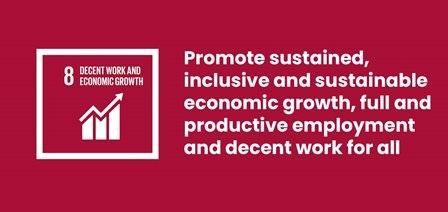

In conclusion, the interplay of inflation, inequality, and sustainable development is a complex narrative necessitating comprehensive solutions. Crafting a path toward inclusive economic growth and implementing measures to alleviate inflation's unequal impact is paramount. Through such endeavors, we advance towards a world where inequalities recede, poverty's grip weakens, and the aspirations of the Sustainable Development Goals find substantial realization.
These are the 6 main outcomes that inflation may cause to the social and economic aspects of the world. There are both positive and negative, on the other hand, even if the short-term effect of inflation can seem positive for humanity, it will get harmful for both the economic and social fields as it is explained by the Phillips curve. Within the research, I learned how inflation can be beneficial in some cases, mostly in the short-term, and different social aspects of the effects of inflation.
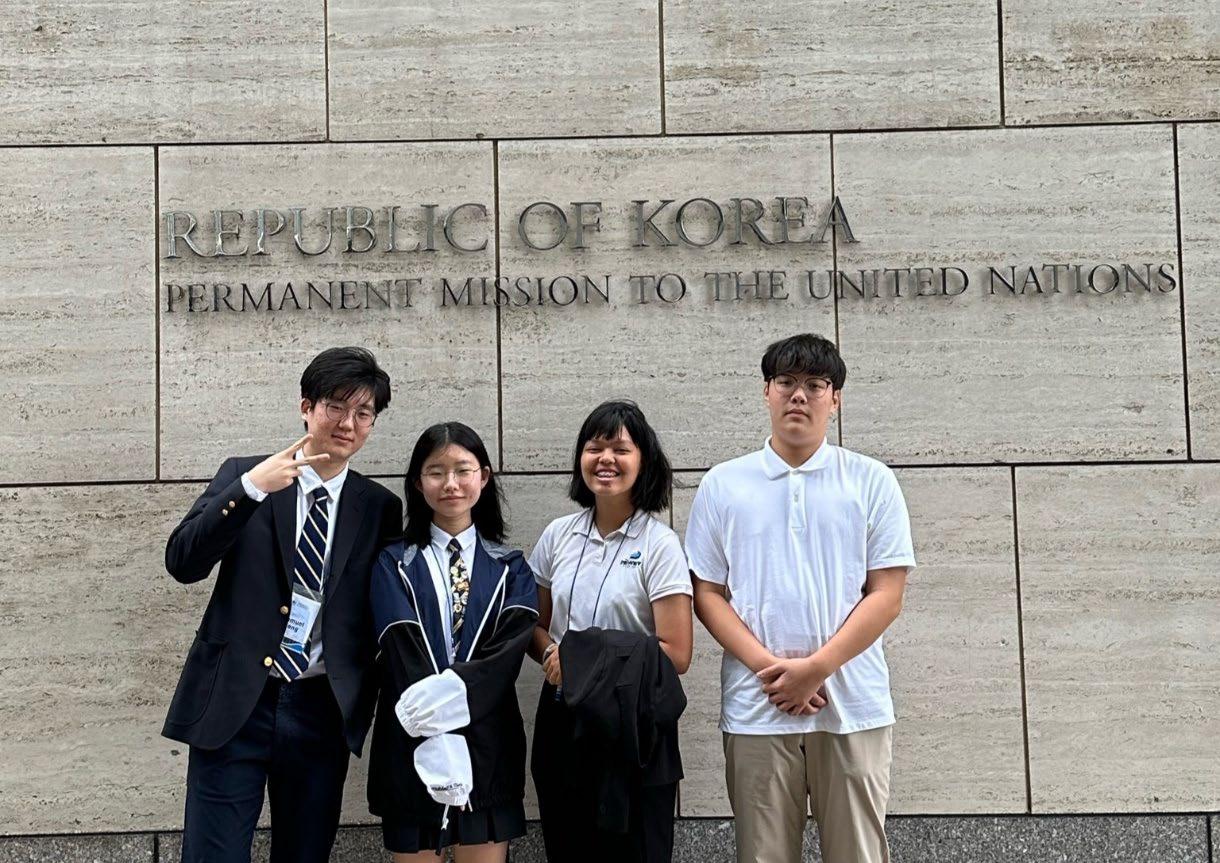
Since 2022, the Venezuelan government has been trying to stop inflation’s rise by anchoring the national currency’s exchange rate. While increasing the supply of foreign currency cash in local banks across the country, this attempt has largely limited the expansion of credit and public spending, which caused the bolivar to gradually decline in value.
Signed into law on August 16 last year, the Inflation Reduction Act (IRA) aims to minimize the rise of inflation by reducing the government’s budget deficit, lowering medicine prices, and investing into domestic clean energy production. In passing such an act, President Joe Biden wishes to diminish costs for lower-class families, create well-paying jobs for workers, and develop the economy from the bottom up & middle out. This act requires the ultra-wealthy & successful corporations to pay their rightful share, so that workers are paid fairly. This campaign is currently having positive impacts on the US economy, and America’s inflation rate is estimated to have lowered by 3.8% by the end of 2023.
After a period of political instability in the late 1970s, South Korea’s new government made price stabilization its number one economic goal, restructuring business firms in potential strategic industries to become less reliant on low-interest loans. They also allowed more imported goods, and expanded public skill training programs for high-demand jobs, but that is not what stood out most. What made this country’s inflation-curbing policy so strikingly different from other nations is building consensus within society in order to have social coordination between different stakeholders. To achieve this, they mobilized the entire public sector - all civil servants and officials were trained to become fluent advocates of the upcoming reforms, educational institutions held seminars on inflation, and local organizations like the Korea Development Institute worked with broadcasting stations to create documentaries that emphasized the urgency of tackling inflation. Aside from that, the government strengthened its many partnerships with the press, public figures, and businesses - key groups that would prove to be fundamental in introducing the reforms. Such a plan proved to be tremendously successful, reducing South Korea’s inflation rate by about 18% in a decade.

Our first proposed method is something that can be applied in businesses & corporations, and has been recommended by the Harvard Business Review - the 3Rs: Recalibrate, Reposition, Replace.
The first R of our business 3R model is recalibrate. This basically includes drawing insights from behavioral economics through surveys, and using the collected data to change price gaps in a way that makes customers feel inclined to pick the more profitable option. Another way to collect more profit is to introduce less-expensive alternatives or higher-end products, so that the current line seems affordable compared to the others.
The second R is repositioning the brand - in this method, businesses can alter their prices so that they better fit the real values of each product. If a product is currently overpriced, the business can reduce marketing expenditures, along with the price, for it to be more realistic towards the target customer’s
financial capabilities - this usually works for companies focusing on middle class workers or families. On the other hand, if a product is underpriced, customers will often expect a higher price during inflation spikes. Companies relying on low prices as their sole advantage can use these time periods as a key to help them enter a higher price tier, which ultimately results in more profits.
The third and final R is replacing the price model - a relatively new strategy that many businesses, especially start-ups made by influencers, have opted for, considering the quickly rising popularity of social media and pop culture in the 21st century. This plan basically includes introducing new pricing models such as subscriptions and product-as-a-service plans - something that businesses targeting young customers can use to their advantage.
For young individuals looking to change the world, here is a way that you can contribute to reducing inflation: the updated 3Rs - Recognize, reach, and restore.



The first R is recognizing the problem. The main issue that governments face is that they are unable to see what is truly happening, and hence are not motivated to take any action. That is why annual governmentled censuses are so important - the information they collect from citizens can be analyzed so that governments finally see first-hand what their people are facing every day. This gives them a clear perspective of the issues that need to be tackled. However, due to the political instability across the world these days, we might trust someone closer to us, like a fellow citizen. Hence, we can see that citizen-led censuses is a potential alternative, where the only difference is that the data is firstly collected by citizens, and then is transferred to the relevant governmental branches - it’s just one more step, but could be a big jump in data collecting as now governments finally understand what their people really want.
The second R stands for reaching out to stakeholders. When we have identified the key issues in society, now’s the time to dig deeper. College students, especially those working in data science or analytics, can help us conduct deep research & surveys to receive data on trends regarding inflation. This data will help us understand when the changes happened, what was the context behind it, and the people who caused the changes. This information is key to shaping our policies so that they are effective.
Last but not least, our third R stands for the final step: restoring the economy. When we have gathered all the information we need, it is time to finally take action. The first step of this is transfering the all the data from censuses, surveys, and questionnaires to the legislative departments, such as the US House of Representatives, or the Venezuelan National Assembly. Then, we must hold a meeting between that department and a selected group of informed citizens so that the needs of the people are fully understood. In the end, it is up to the policy-makers to do what they do best: come up with an effective strategy to combat one of the biggest economic issues faced globallyinflation. By then, voting procedures are the only thing left to do, and considering that trust has already been earned from the first steps of this process, that should not be a problem.
“How Do Governments Reduce Inflation? – Forbes Advisor INDIA.” Forbes, 2 August 2022, https://www.forbes.com/advisor/in/personal-finance/how-governments-reduce-inflation/. Accessed 9 August 2023.
“What is inflation: The causes and impact.” McKinsey, 17 August 2022, https://www.mckinsey.com/featured-insights/mckinsey-explainers/what-is-inflation. Accessed 9 August 2023.

“Inflation: What It Is, How It Can Be Controlled, and Extreme Examples.” Investopedia, https://www.investopedia.com/terms/i/inflation.asp. Accessed 9 August 2023.
“What Is Inflation: How it Works & How to Beat it.” Equifax, https://www.equifax.com/personal/education/personal-finance/what-is-inflation/. Accessed 9 August 2023.
D’Angelo, Matt. “What Is inflation?” Business News Daily, 10 April 2023, https://www.businessnewsdaily.com/3443-what-is-inflation.html. Accessed 9 August 2023.
“What is Inflation?” Federal Reserve Bank of Cleveland, https://www.clevelandfed.org/en/center-forinflation-research/inflation-101/what-is-inflation-start. Accessed 9 August 2023.
Ball, Laurence , et al. “Understanding U.S. Inflation during the COVID Era.” IMF, 2022, www.google.com/url?q=www.imf.org/en/Publications/WP/Issues/2022/10/28/Understanding-U-S525200&sa=D&source=docs&ust=1691638003986046&usg=AOvVaw23cHSyfMsaWzl8pZujGCbr. Accessed 10 Aug. 2023.
Carmody, Michelle. “What Caused Hyperinflation in Venezuela: A Rare Blend of Public Ineptitude and Private Enterprise.” The Conversation, 5 Sept. 2019, theconversation.com/what-caused-hyperinflation-invenezuela-a-rare-blend-of-public-ineptitude-and-private-enterprise-102483.
Dukpa, Kim, and Eo Yunjong. “Redirect Notice.” Www.google.com, 2022, www.google.com/url?q=www.kci.go.kr/kciportal/ci/sereArticleSearch/ciSereArtiView.kci?sereArticleSear chBean.artiId%3DART002863948&sa=D&source=docs&ust=1691637733231525&usg=AOvVaw3CncN wBAhSzt6Z5FbqUXCX. Accessed 10 Aug. 2023.
Hu, Ellie. “How COVID-19 Has Magnified Pre-Existing Inequalities in the US | Economics in Context Initiative.” Www.bu.edu, 2022, www.bu.edu/eci/2022/03/10/how-covid-19-has-magnified-pre-existinginequalities-in-the-us/#:~:text=Inequality%20in%20the%20labor%20market.
Human Rights Watch. “Venezuela: Events of 2022.” Human Rights Watch, 12 Jan. 2023, www.hrw.org/world-report/2023/country-chapters/venezuela.
Mario. “South Korea Posts Deflation for the First Time on Record.” Tradingeconomics.com, TRADING ECONOMICS, Oct. 2019, tradingeconomics.com/south-korea/inflation-cpi.
Rendon, Moises. “Covid-19 in Venezuela: How the Pandemic Deepened a Humanitarian Crisis.” Www.csis.org, 23 Sept. 2020, www.csis.org/analysis/covid-19-venezuela-how-pandemic-deepenedhumanitarian-crisis.
Reuters. “Brazil Partially Closing Venezuela Border, Allowing Trucks.” Reuters, 17 Mar. 2020, www.reuters.com/article/us-health-coronavirus-brazil-venezuela-idUSKBN2143ZS.
Rodgers, Lucy. “Venezuela: All You Need to Know about the Crisis in Nine Charts.” BBC News, 4 Feb. 2019, www.bbc.com/news/world-latin-america-46999668.
Sequera, Vivian. “Venezuela Poverty Rate Falls to 50.5% in 2022 -Study.” Reuters, 10 Nov. 2022, www.reuters.com/world/americas/venezuela-poverty-rate-falls-505-2022-study-2022-11-10/.
Smialek, Jeanna. “November Inflation Report: Price Gains Slow More than Expected.” The New York Times, 13 Dec. 2022, www.nytimes.com/live/2022/12/13/business/november-inflation-report.
Soungbin, Im. “Korea Ranks 4th in the OECD in Proportion Rate… “Squid Game” Is a Self-Portrait.” JoongAng Ilbo, 25 Oct. 2021, www.joongang.co.kr/article/25017831#home. Accessed 10 Aug. 2023.
Trading Economics. “Venezuela Inflation Rate.” Tradingeconomics.com, TRADING ECONOMICS, 11 May 2019, tradingeconomics.com/venezuela/inflation-cpi.
U.S. Bureau of Economic Analysis. “Gross Domestic Product.” Stlouisfed.org, 2023, fred.stlouisfed.org/series/GDP.
Vox. “The Collapse of Venezuela, Explained.” YouTube, 25 Aug. 2017, www.youtube.com/watch?v=S1gUR8wM5vA.
Yang, Hyunsoo. “Gender Equality: Korea Has Come a Long Way, but There Is More Work to Do.” OECD, 25 Oct. 2021, www.oecd.org/country/korea/thematic-focus/gender-equality-korea-has-come-along-way-but-there-is-more-work-to-do-8bb81613/.
Yun-hyung, Gil. “UNCTAD Classifies S. Korea as Developed Economy.” English.hani.co.kr, 2021, english.hani.co.kr/arti/english_edition/e_international/1002230.html.
Floyd, David. “10 Common Effects of Inflation.” Investopedia, 24 Apr. 2023, www.investopedia.com/articles/insights/122016/9-common-effects-inflation.asp#toc-5-inflation-raisesinterest-rates.
“Goal 1 | Department of Economic and Social Affairs.” United Nations, 2015, sdgs.un.org/goals/goal1.
Magazzo, Sarah. “How Does Inflation Affect the Job Market: Unemployment, Hiring & Salaries.” Mondo Staffing Agency, 2019, mondo.com/insights/how-inflation-affects-job-market-unemployment-hiringsalaries/.
McTeer, Robert. “Economic Growth without Inflation.” National Center for Policy Analysis, 9 Mar. 2007, www.ncpathinktank.org/pub/ba582.
Oner, Ceyda. “Inflation: Prices on the Rise.” IMF, 30 July 2019, www.imf.org/en/Publications/fandd/issues/Series/Back-to-Basics/Inflation.
Schmidt, John. “How Inflation Erodes the Value of Your Money.” Forbes, 11 Jan. 2023, www.forbes.com/advisor/investing/what-is-inflation/.
“SDG 8: Decent Work and Economic Growth : Glec Global.” GLEC KOREA, 4 Nov. 2021, gleader.org/sdgs/?q=YToxOntzOjEyOiJrZXl3b3JkX3R5cGUiO3M6MzoiYWxsIjt9&bmode=view&idx=8 738944&t=board.
Segal, Troy. “Does Inflation Favor Lenders or Borrowers?” Investopedia, 26 May 2023, www.investopedia.com/ask/answers/111414/does-inflation-favor-lenders-or-borrowers.asp.
United Nation. “Goal 10 | Department of Economic and Social Affairs.” United Nations, 2015, sdgs.un.org/goals/goal10.
United States. “Economic Growth - United Nations Sustainable Development.” United Nations, 2015, www.un.org/sustainabledevelopment/economic-growth/.

Armas, Mayela, and Richard Chang. “Venezuela's anti-inflation efforts dealt blow as currency tumbles.” Reuters, 23 November 2022, https://www.reuters.com/markets/currencies/venezuelas-anti-inflationefforts-dealt-blow-currency-tumbles-2022-11-24/. Accessed 7 August 2023.
“FACT SHEET: The Inflation Reduction Act Supports Workers and Families.” The White House, 19 August 2022, https://www.whitehouse.gov/briefing-room/statements-releases/2022/08/19/fact-sheet-theinflation-reduction-act-supports-workers-and-families/. Accessed 6 August 2023.
Rasure, Erika. “US Inflation Rate by Year: 1929-2023.” The Balance, 31 March 2023, https://www.thebalancemoney.com/u-s-inflation-rate-history-by-year-and-forecast-3306093. Accessed 7 August 2023.
Kwon, Yong. “Learning From South Korea's Fight Against Inflation.” The Diplomat, 11 February 2022, https://thediplomat.com/2022/02/learning-from-south-koreas-fight-against-inflation/. Accessed 7 August 2023.
Koenigsberg, Oded. “3 Strategic Options to Deal with Inflation.” Harvard Business Review, 18 January 2022, https://hbr.org/2022/01/3-strategic-options-to-deal-with-inflation. Accessed 6 August 2023.

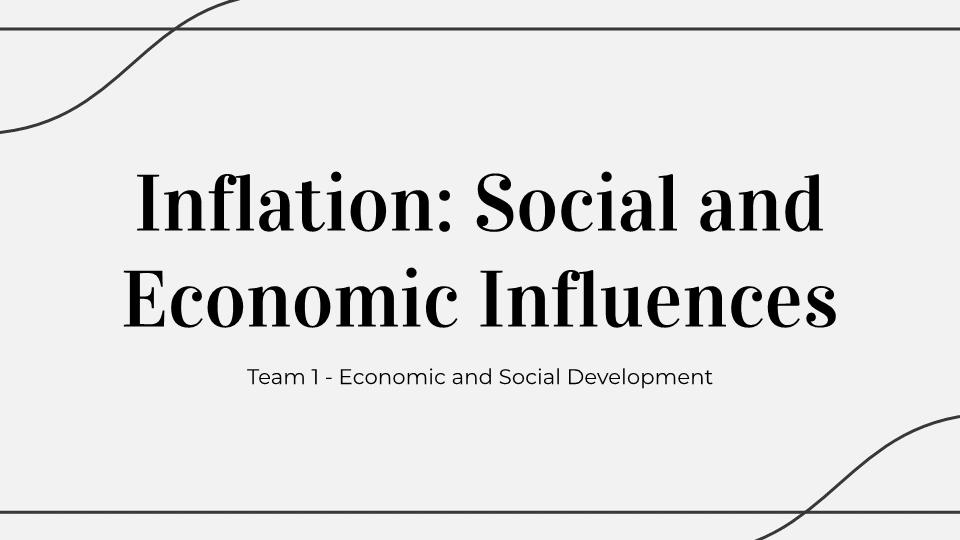
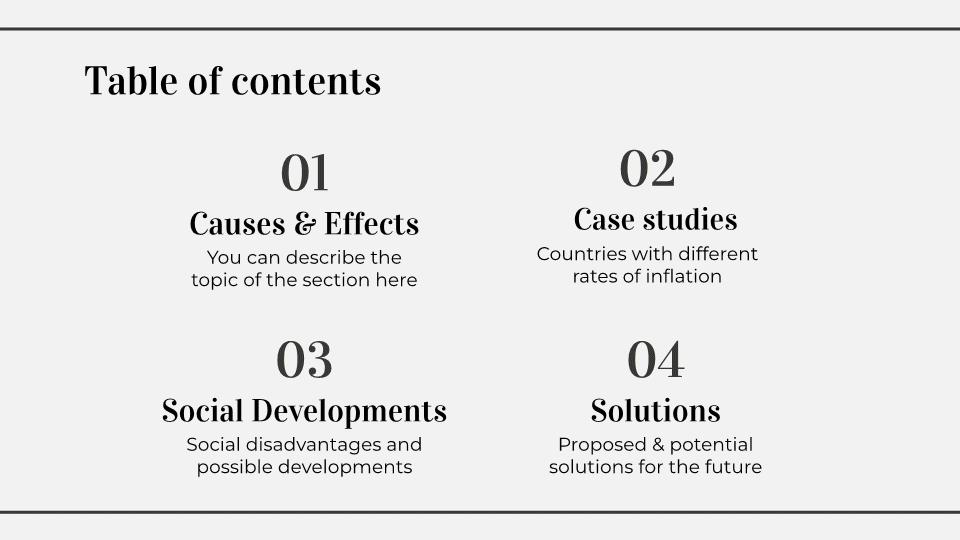
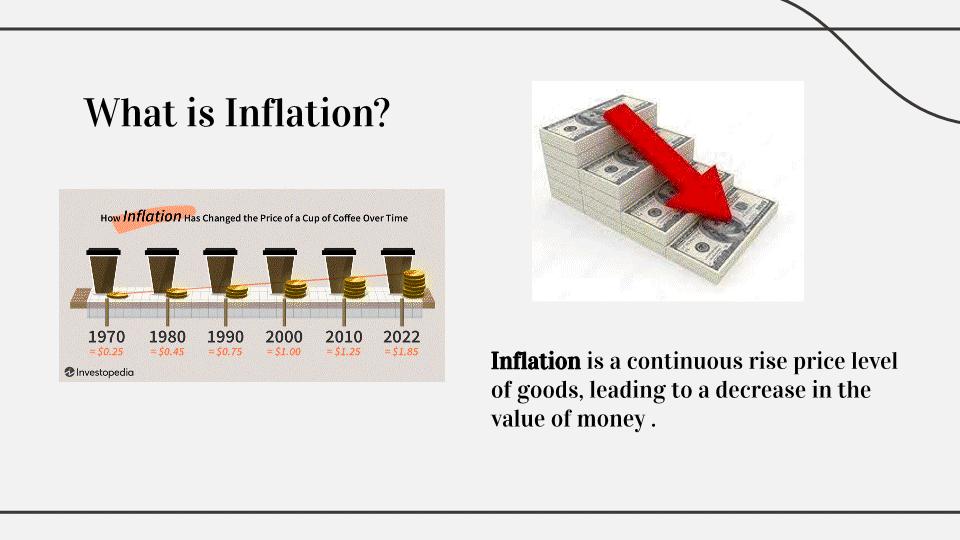
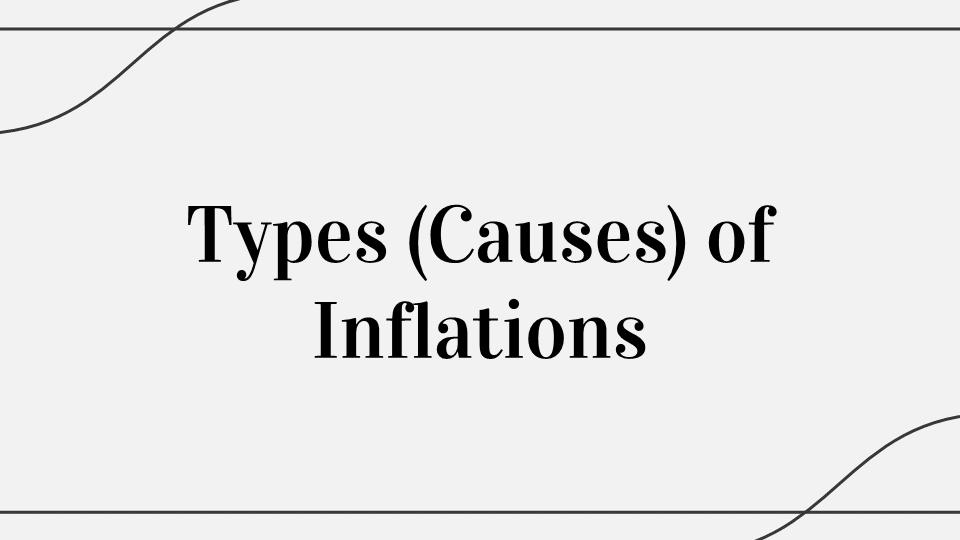


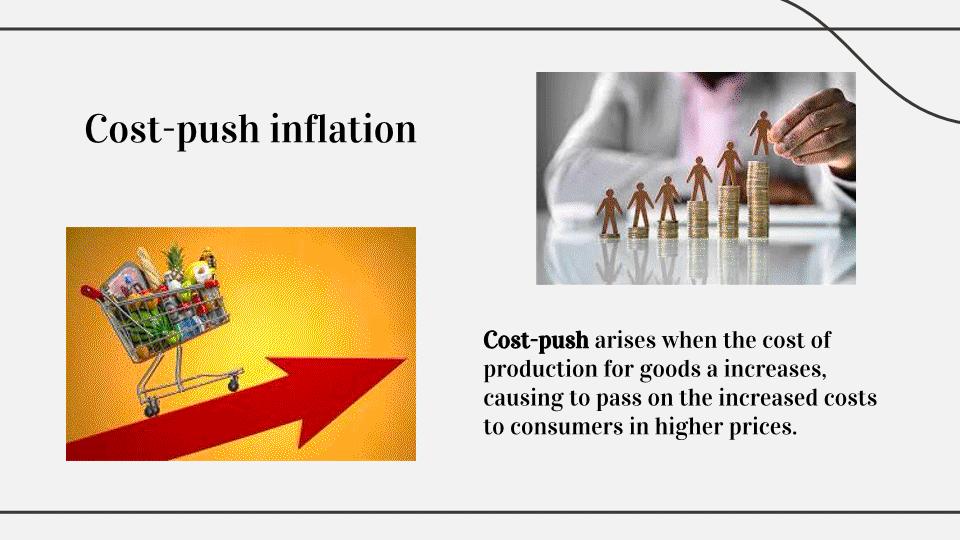
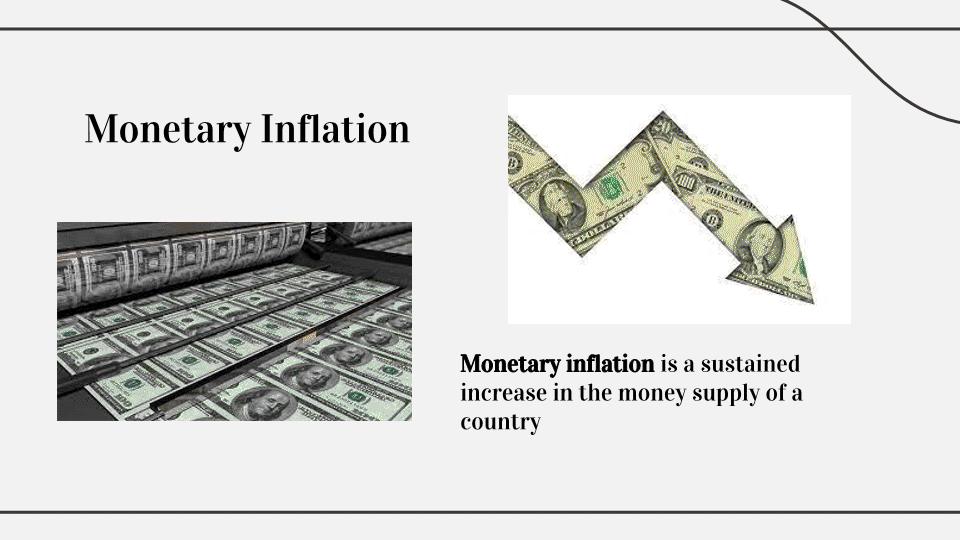

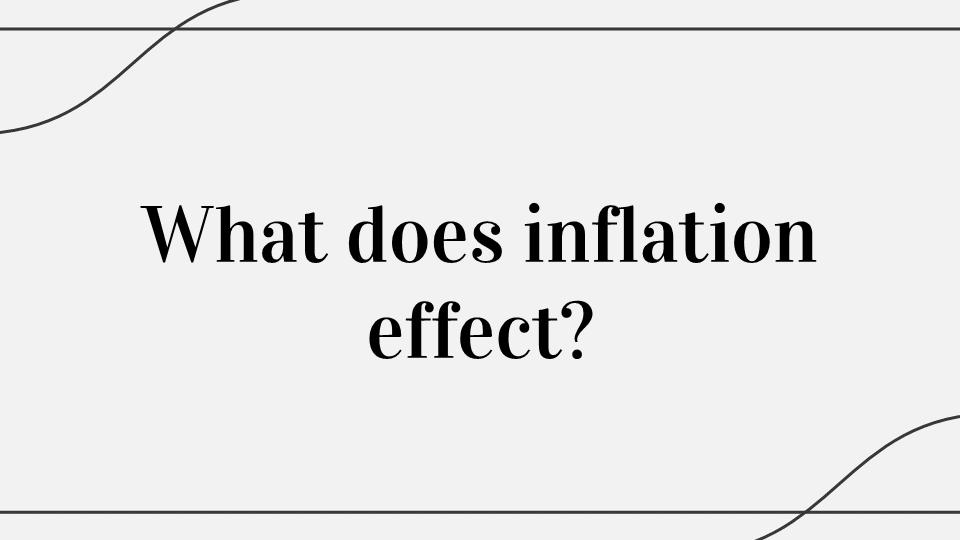




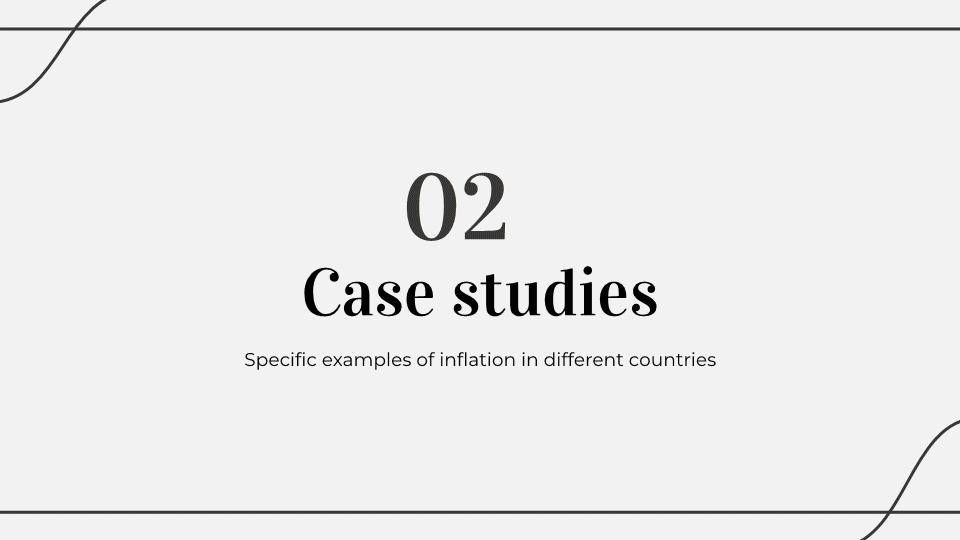
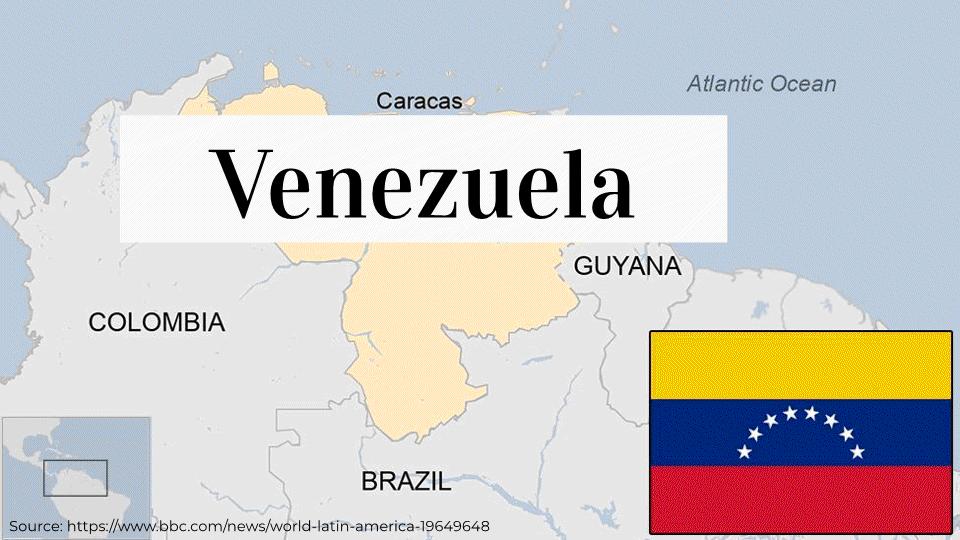


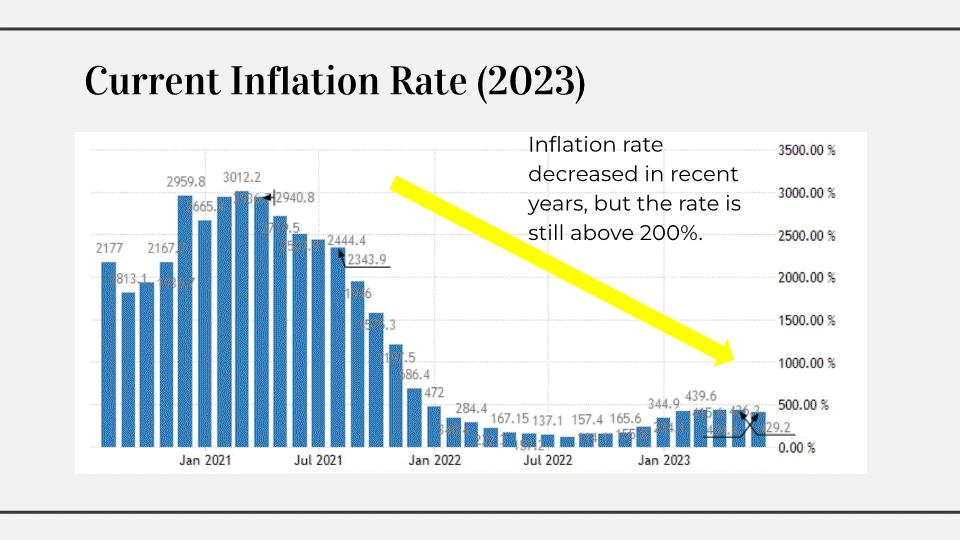



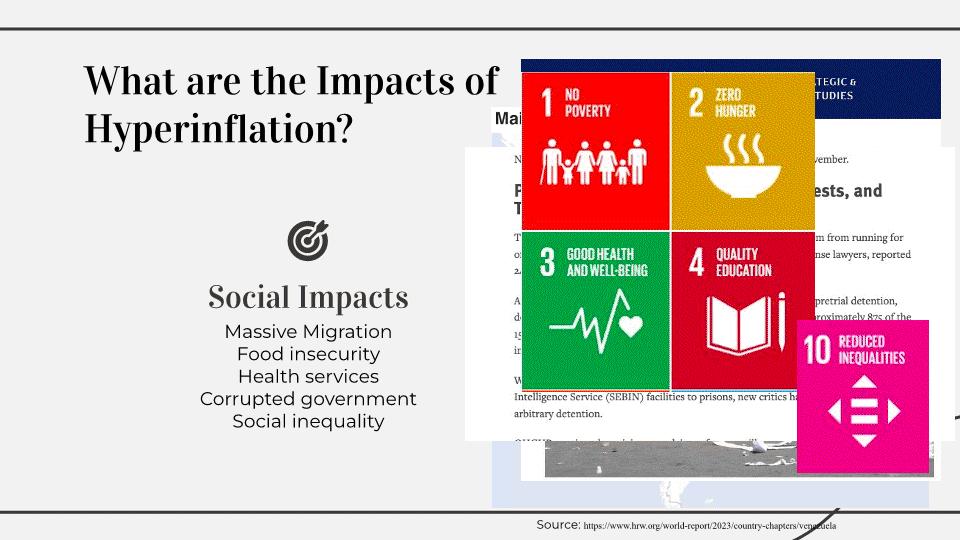
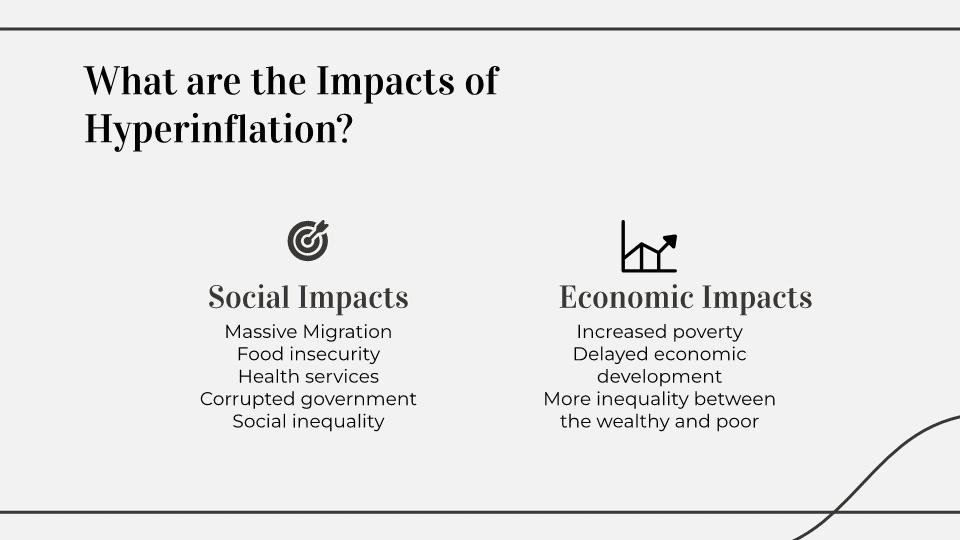
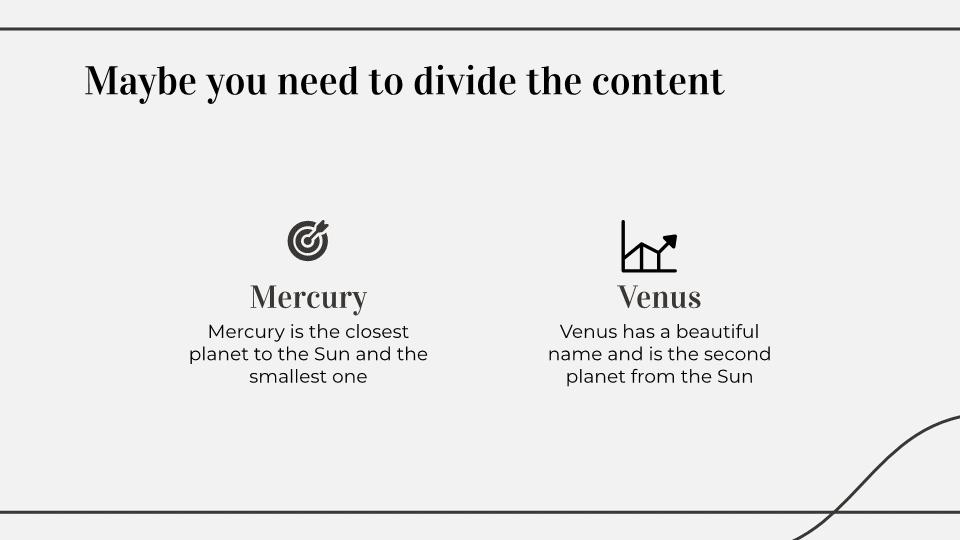


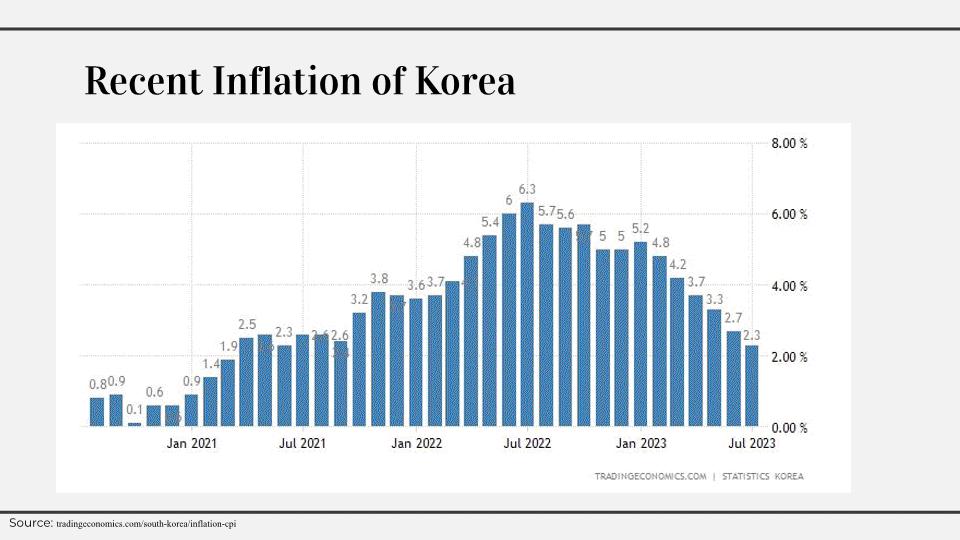
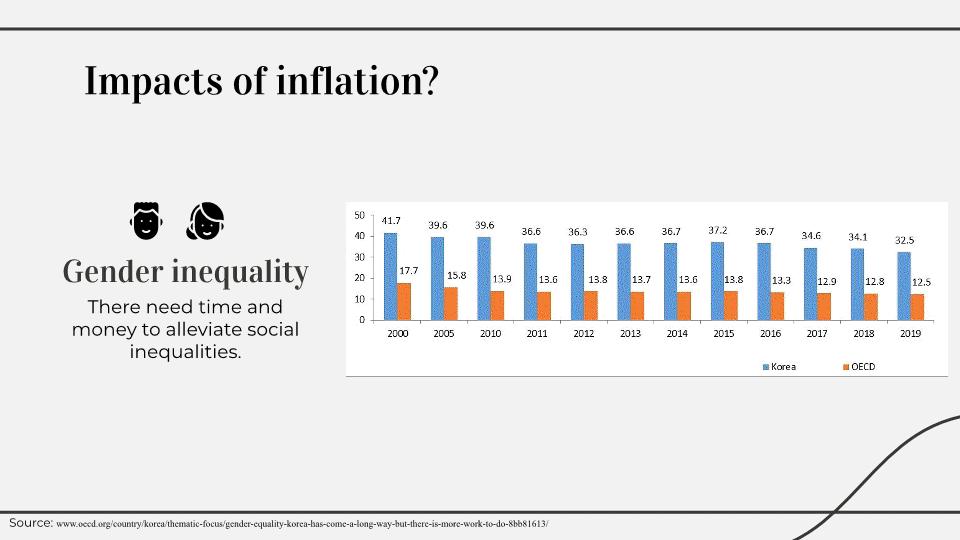

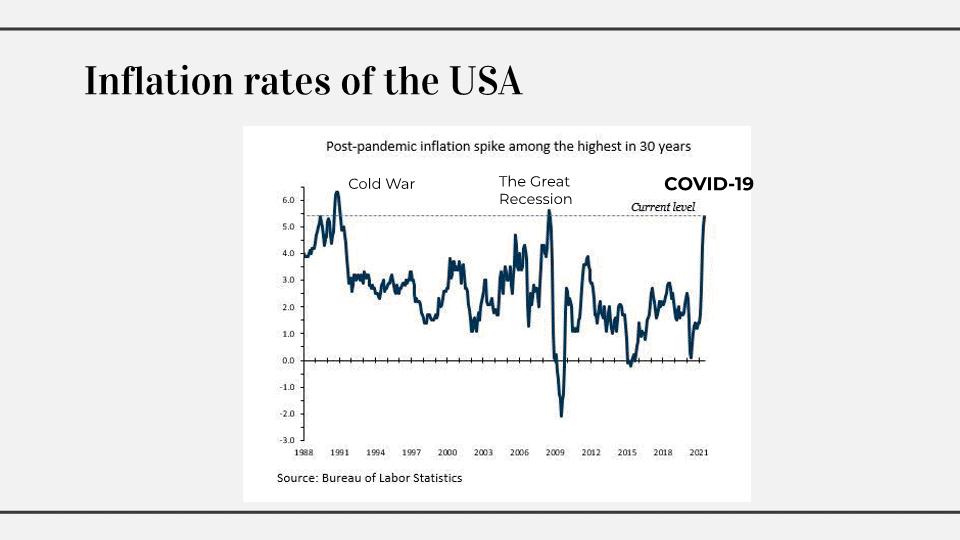
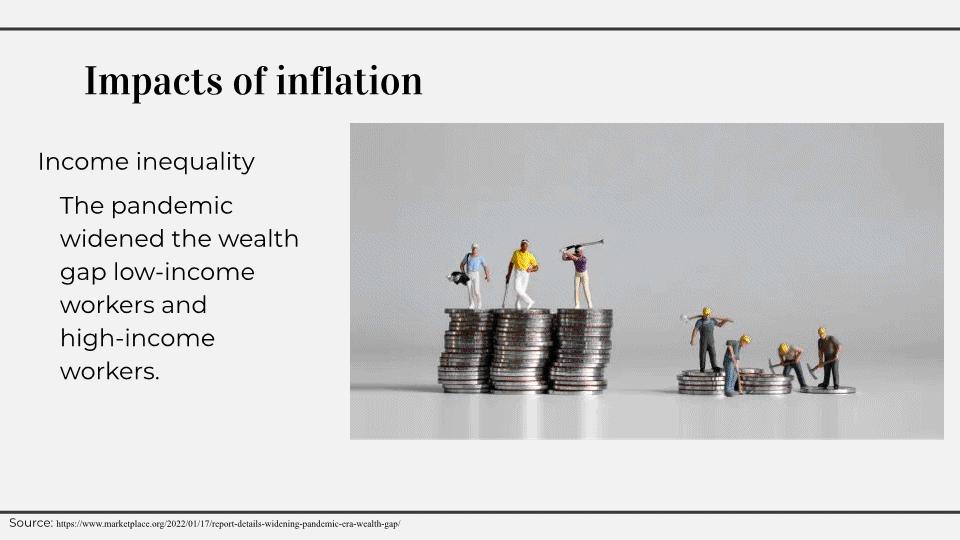




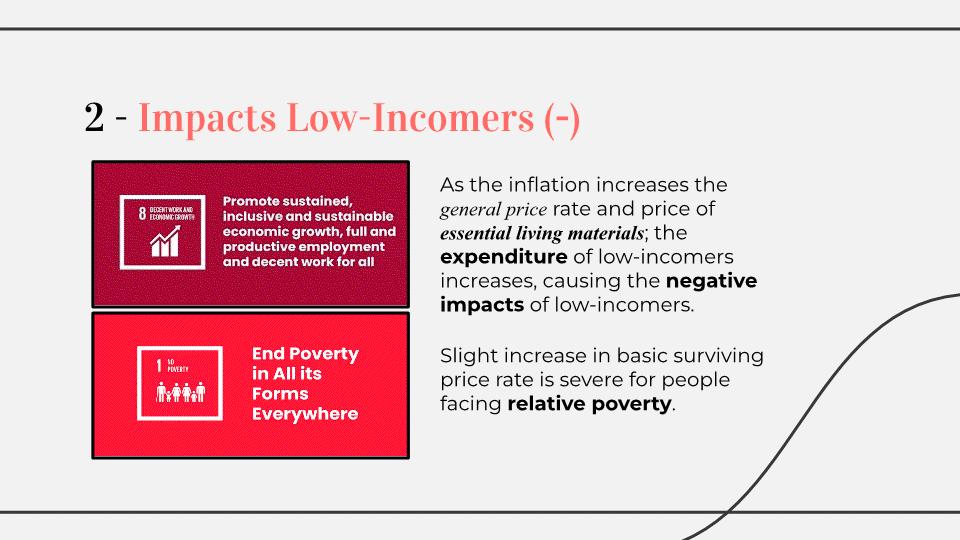


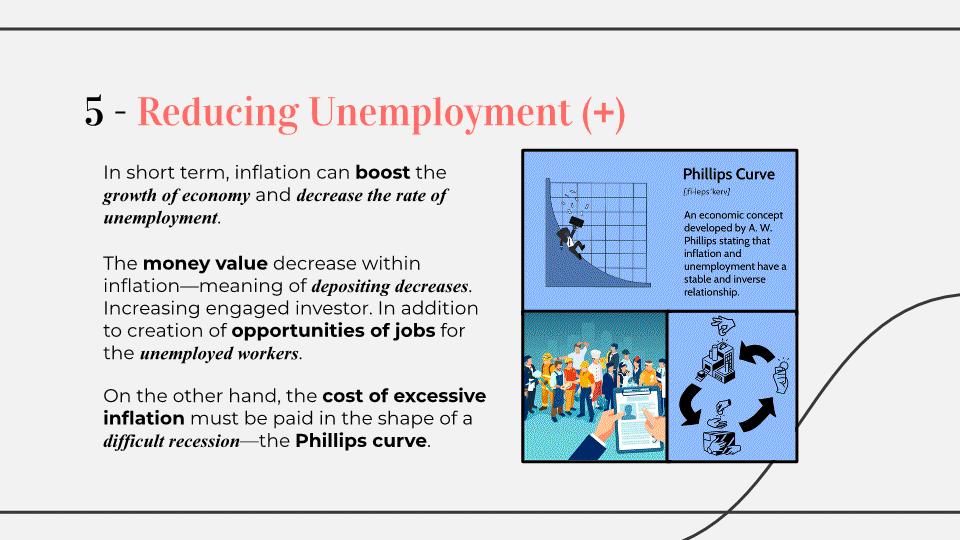
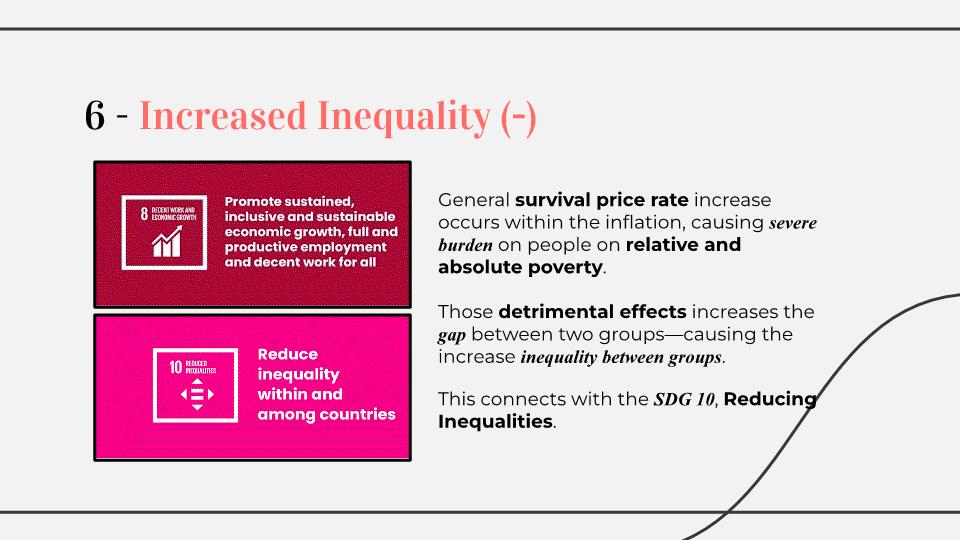
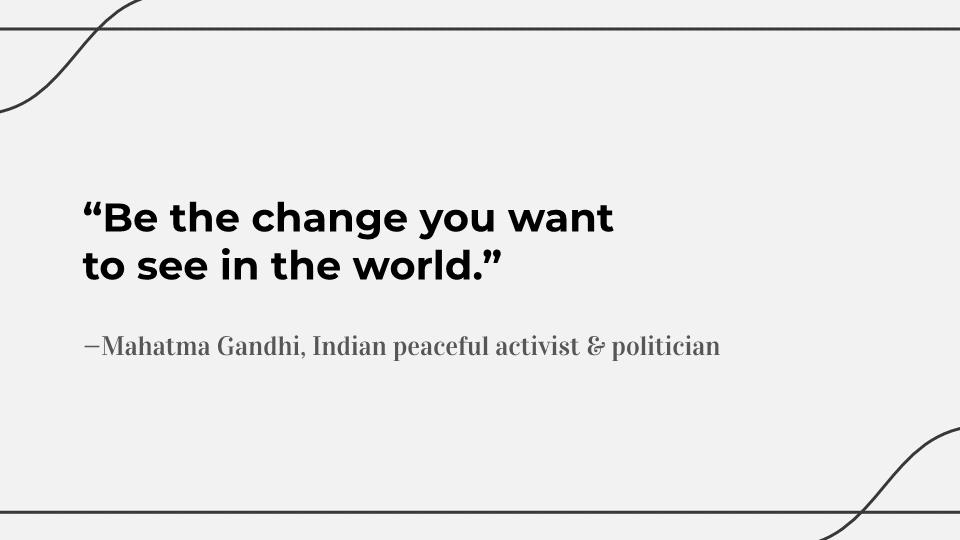
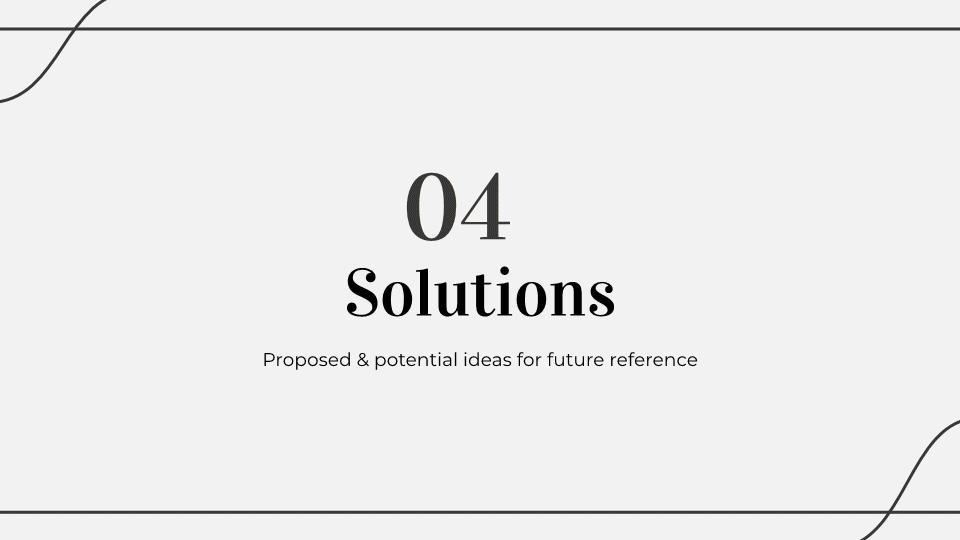
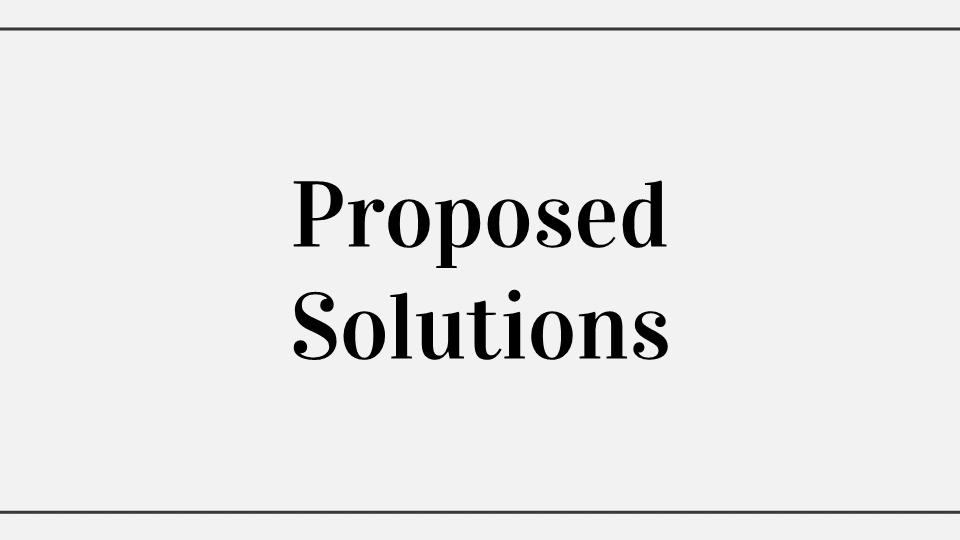


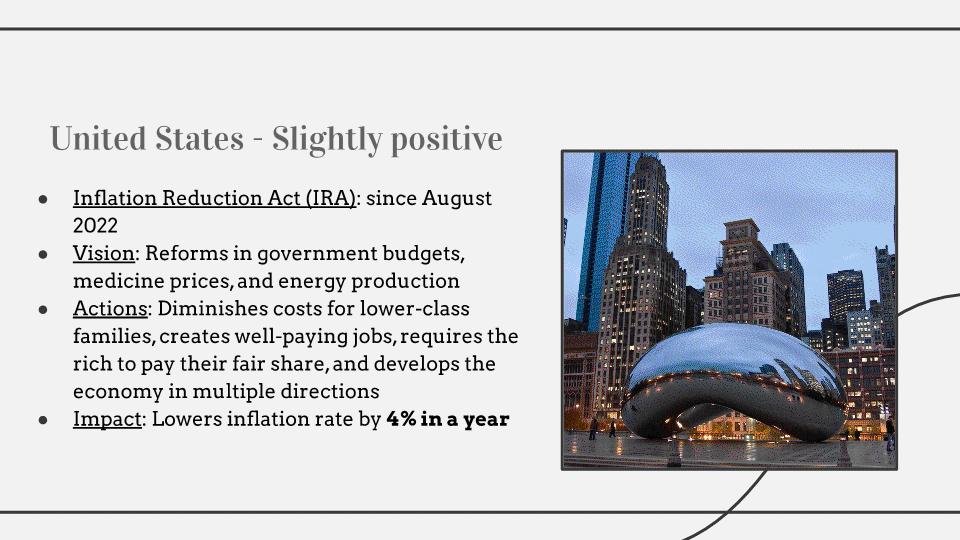

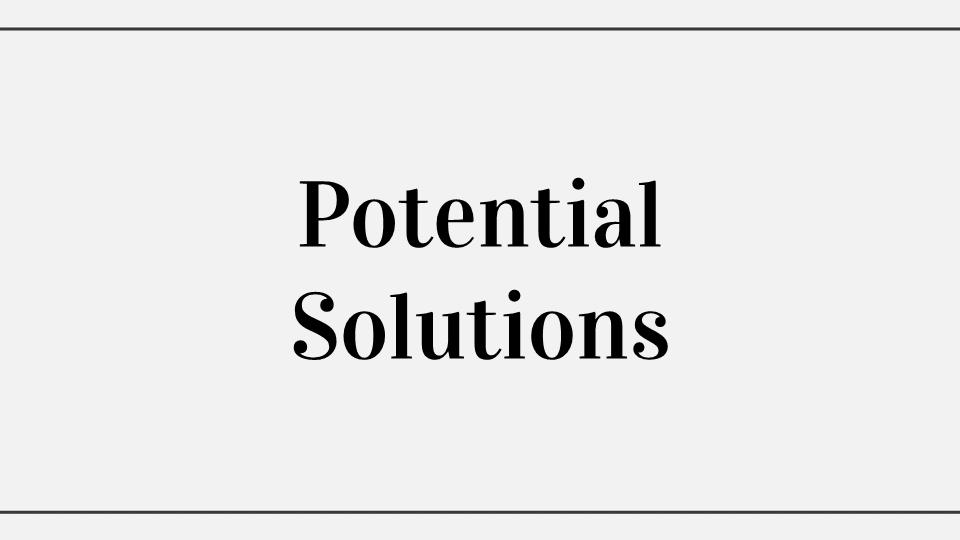


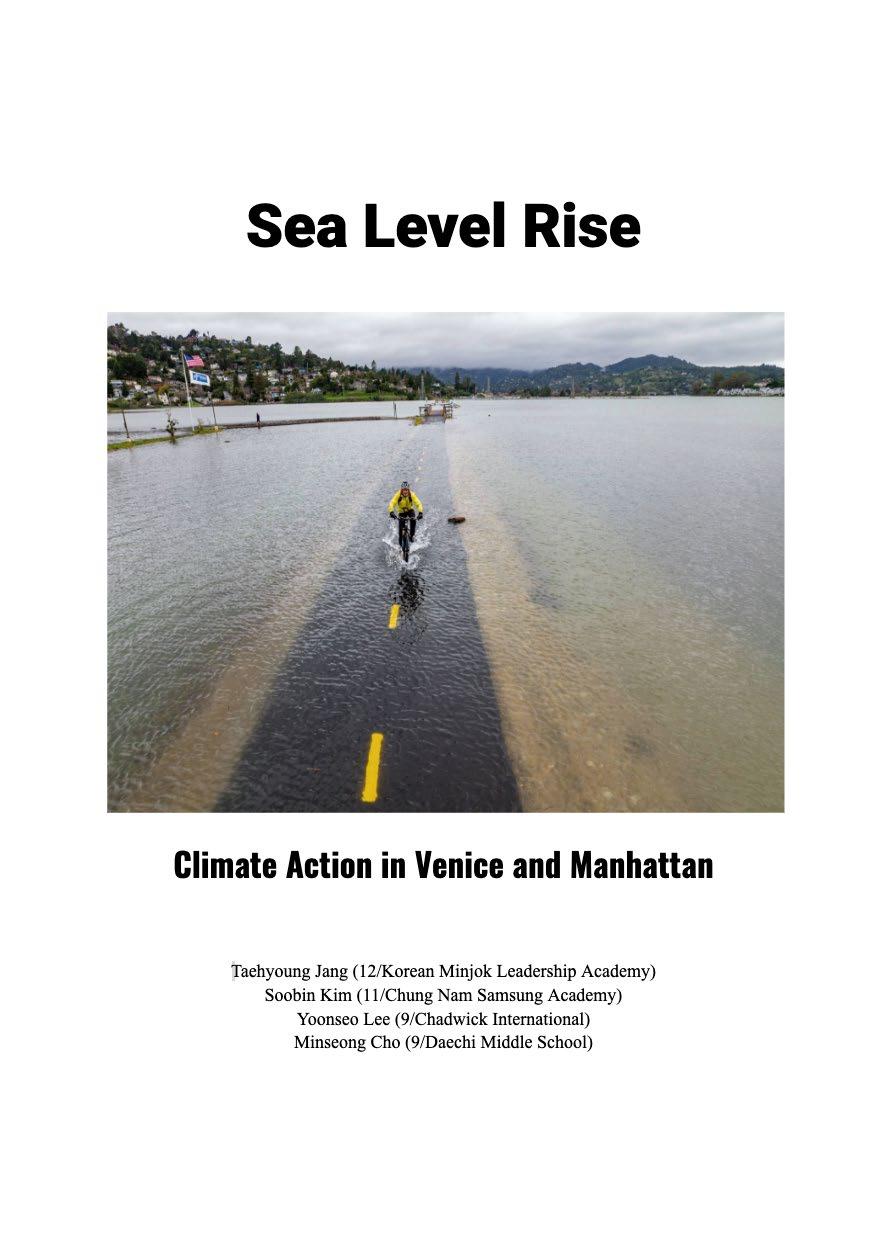
A. Definition of Sea Level Rise
B. Examples
C. About Global Warming
II. Cause of Sea Level Rise
A. Melting of Glaciers and Ice Sheets
B. Thermal Expansion
C. Implications about Sea Level Rise
III. Problems caused by Sea Level Rise in Venice and Manhattan
A. Increased Flood Risks
B. Damage to buildings, foundations, infrastructure, and subsurface structures
IV. Solutions
A. Manhattan-Big U project
B. Venice-project MOSE (Modulo Sperimentale Elettromeccanico)
C. Individual Contributions
The inundation of coastal cities due to rising sea levels has long been portrayed as the worst-case scenario that is about to come due to the climate crisis. Are there any of you who still don't know if climate change is causing sea level rise and if sea levels have really risen in the meantime?
Sea level rise refers to rising sea levels. It is also used to describe natural sea level rise or other aspects of Earth's history, but it generally refers to the eventual rise in seawater levels due to global warming caused by climate change.
Climate change is a major contributor to sea level rise. There is no dispute. Years of measurements by satellites that closely monitor sea level heights show that sea levels are not only rising but accelerating much faster than ever imagined. In Greenland, 22 gigatons of glaciers melted enough to cover the entire U.S. state of Florida by 5 centimeters in a single day.
In this presentation, we'll look at what sea level rise means, what it means, and more importantly, what to do about it and what solutions we need to do in the future.

Sea level rise is caused by global warming. Then let’s talk about global warming. Climate change is defined as climate change that is taking place over a long period of time in a given area. Over the past 100 pages, our planet has been warmer than at any time in history. The temperature of the earth has not changed by more than 1 degree in the last ten thousand years, but it is said that it has risen by 0.6 degrees in the last 100 years. This phenomenon of excessive temperature increase in the earth is called global warming.
Then what causes global warming? There are 3 big reasons for this.
First, Generating electricity and heat by burning fossil fuels causes a large chunk of global emissions. Most electricity is still generated by burning coal, oil, or gas, which produces carbon dioxide and nitrous oxide – powerful greenhouse gases that blanket the Earth and trap the sun’s heat.
Second, Manufacturing and industry produce emissions, mostly from burning fossil fuels to produce energy for making things like cement, iron, steel, electronics, plastics, clothes, and other goods. Mining and other industrial processes also release gases, as does the construction industry. Machines used in the manufacturing process often run on coal, oil, or gas; and some materials, like plastics, are made from chemicals sourced from fossil fuels. The manufacturing industry is one of the largest contributors to greenhouse gas emissions worldwide.
Third, Cutting down forests to create farms or pastures, or for other reasons, causes emissions, since trees, when they are cut, release the carbon they have been storing. Each year approximately 12 million hectares of forest are destroyed. Since forests absorb carbon dioxide, destroying them also limits nature’s ability to keep emissions out of the atmosphere. Deforestation, together with agriculture and other land use changes, is responsible for roughly a quarter of global greenhouse gas emissions.
But why global warming is dangerous for us? It is because global warming can cause Loss of species, Hotter temperatures, Not enough food, or other disasters.
In preparation for this presentation, we drew attention to the SDG 13 Goal. The main topic of this is to take urgent action to combat climate change and its impacts. Therefore, from now on we will go to a speech about how to solve the problem of sea level rise and the problem of global warming

With the rise of the average temperature as a result of Global Warming, the dominant cause of the rise of sea level is also occurred by Global Warming. According to the ascent of temperature, melting glaciers and ice, and thermal expansion, are the two major causes of sea level rise.
The melting of glaciers stands out as one of the primary drivers of the rising sea levels observed globally. The glaciers and ice sheets located in Antarctica, Greenland, and various mountain ranges around the world began to melt even before global warming intensified. However, as a result of global warming, the average temperature of the earth has risen, and the established period of melting has shifted from July to September to the subsequent spring. Which also diminishes snowfall that can satisfy the moderate amount of glaciers distributed on the mountain. According to the statistics, the snowfall index and region are recognizable in the same section. The difference between 2022 and 2023 is the snowfall region and amount had diminished, which shows the decrease in snowfall resulted from global warming. Additionally, this graph shows the dissolution of the amount of ice all over the world yearly over time.
As a result, the number of glaciers than essential glaciers eased, which leads to the diminution of glaciers. The melted ice from glaciers contributes to a significant volume of runoff that finds its way into rivers and eventually the oceans. This influx of freshwater into the ocean system raises sea levels,
adding to the overall sea level rise. Furthermore, the amount of liquefied glaciers is more massive than evaporated water, incurring a rise in sea level.
Melting glaciers are a global phenomenon, occurring across various regions, from the polar ice caps to mountain ranges. This widespread melting contributes to sea level rise on a global scale.
As mentioned earlier, the current global warming situation is deepened as time goes by. From 1951 to 2022, the globe's temperature increased by 0.89 Celsius.

Scientifically defined thermal expansion is the phenomenon that occurs when temperature changes. It exhibits the growth of the mass of a matter in the case of an increase in temperature. Basically, When water absorbs heat, its molecules gain energy and move more vigorously.
As the molecules move more vigorously, they tend to overcome the attractive forces between them. This results in an increase in the average distance between the molecules. In the case of liquids, like water, this increased molecular motion causes the substance to expand.
In the context of sea level rise, it's a consequence of the ocean absorbing heat from the warming atmosphere. The Earth's oceans act as a massive heat sink, absorbing about 90% of the excess heat generated by global warming. As the atmosphere warms, the oceans also heat up. This increase in ocean temperature leads to the expansion of water molecules, causing the volume of the ocean to increase. When seawater heats up, its molecules become more energetic and move further apart, causing the water to expand. This expansion leads to a rise in sea levels.
Once water expands due to thermal energy, it takes up more space. This expansion contributes to an increase in the overall volume of the oceans, which in turn leads to a rise in sea levels.
The approximate value of thermal expansion can be stipulated using the equation denoting the thermal expansion of a certain object. Before the brief explanation based on the equation, It requires that there are needs to be indicated that the figure deduced as being applied to the equation is discordant with the accurate value, which is a thoroughly perfunctory expression. This is conjugated as a means of direct demonstration of global warming and sea level rise.
The equation that shows the change in volume due to thermal expansion is ΔV = βVΔT, β is the coefficient of volume expansion, and water’s β is 210 × 10– 6
The equation here is the equation represents the change in volume due to the change in temperature. V is the volume of the matter of measurement, ΔT is the change in temperature, and the matter is water in the ocean which will be assumed as distilled water. By this equation, It is able to observe how much did 1 cubic decimeter of water expands when 0.89-celsius degree increases. The amount would be (210 x 10^-6) x 1x 0.89, which is 1.869 x 10^{-4} decimeter. It appears to be a small quantity, however, the whole amount of water only in the ocean is one billion three hundred thirty-five million cubic kilometers. It represents the mass of water in the ocean multiplied by about 249511.5 cubic kilometers since 1951.
While the expansion of a single water molecule may seem negligible, the cumulative effect of the vast volume of water in the world's oceans is significant. Even a small increase in temperature can lead to a substantial rise in sea levels over time.
Certainly, the link between rising global temperatures and sea level rise is a complex and interconnected phenomenon that unfolds over time. The gradual warming of the Earth's atmosphere due to human activities, primarily the emission of greenhouse gases, leads to a series of cascading effects that contribute to the expansion of seawater and the melting of glaciers and ice sheets.
the relationship between increasing average temperatures and sea level rise is a gradual and ongoing process driven by the thermal expansion of seawater and the melting of land-based ice. The persistence
of elevated temperatures ensures that these effects continue to accumulate over time, posing significant challenges to coastal communities and ecosystems.
Those effects are a slow but steady process and is ongoing as long as the oceans continue to absorb excess heat. In other words, if the average temperature persists the increasing tendency, of the sea level rise won’t disappear.

Venice, the capital of Northern Italy, Veneto, is widely known for its unique environment, architecture, and history, remains a major Italian port, and is one of the world’s oldest tourist and cultural centers. Manhattan, located in the Southeastern part of New York City, also holds some of the world’s most prominent commercial, financial, and cultural centers. In these two very different yet similar areas, the same struggle emerges – the rise in sea level and sinking land. Venice has sunk around 15cm over the last century and studies from Tom Parsons, a geologist from the US Geological Survey agency, and researchers from the University of Rhode Island suggest that New York might be sinking as fast as Venice. The average sinking rate is similar between the two areas as both sink 1-2 millimeters annually. The coastal areas sinking only 1-2 millimeters every year may not seem like an urgent issue and can be tackled in the future. However, experts have already estimated that there is a high possibility that Venice and Manhattan will both submerge underwater by around 2100, which is in less than 80 years. The difficulties that come along with sea level rise and land subsidence are already in progress and affecting the lives of many.
The first main issue with global warming and the escalating sea level rise is increased flooding risks. Flooding generally takes place during seasonal high tides, known as “Acqua Alta” or from storms that push water towards the shore. However, there has been an unusually increasing amount of flooding days with less extreme tides and wind, especially in coastal areas. This is a result due to a reduction in the gap between the average sea level and the general elevation of the land and is the reason for the rise in frequency, depth, and duration of the flood. Exceptional high tides happen around once every four years and are considered when the water level of the lagoon is over 1.4m from the average sea level. According to Statista, there was an average of 67 cases of floods and 3553 high tide events recorded. As of 2018, there was an estimate of around 300 cases of floods per year and high tides ranging from ones with limited impact to exceptionally high. Among all events where the water level surpassed 1.1m, 94 of them occurred in November 2019, and experienced the second-highest tide since 1872, reaching up to 1.8 m above sea level. These events have a relatively high frequency considering the fact that these events have a strong seasonal trend and are mainly focused during a certain period which is between October to March. The water ranges from covering 14 percent, all the way up to half of the island of Venice, and this statistic alone highlights the potential and scale of the damage that can be done.
The difficulties dealt from the rise in flood risks are the possible damage to buildings, foundations, infrastructure, and subsurface structures that directly affects the lives of residents. The effect of the flood on the city can be severe. The surface of the buildings may erode and undermine the foundation causing floors to crack and lead to a collapse of the building at worst, damage to historical buildings and their exterior, washing out road sections, reducing the support for concrete pavements, and more. Venice is one of the cities that is relatively vulnerable towards this issue compared to other cities, especially as it is known for its architectural structures and tourist spots. On November 19, 2019, the second highest tide with a depth of 1.8m submerged 80 percent of the city in water as mentioned before. Historic buildings and monuments were flooded, and businesses and homes became a mess. Due to this
event, followed by several other floods later in the year, Mayor Brugnaro announced that the damage to the buildings, businesses, and landmarks including the city’s hotels and tourist sectors being struck by constant cancellations, the total amount resulted in more than €1 billion, which is around $1.1 billion.
The rise of sea level and severe rainfall also results in the elevation of the water stored beneath the land and increases the risk of flood within the city. These types of floods are the ones that seep out of the ground slowly or are forced out by external pressure which will both proceed to damage the underground infrastructure in the process severely. However, although the overall situation has intensified over time, officials have stopped routine monitoring the groundwater of the five boroughs, including Manhattan, in 2013. Unchecked, rising groundwater can not only overflow and create flooding in the area, but also create sinkholes on land, and damage underground tunnels, utility equipment, parking lots, and underground structures. Around waterfronts, the salt in the ocean can flow into freshwater sources and cause corrosion and result in the spread of contaminants when the groundwater floods out of toxic sites.
The challenges of sea level rise and floods in Venice and Manhattan due to intense global warming demand awareness and immediate collaborative efforts to preserve their cultural and historical factors, and most importantly, ensure the safety of the locals and the visitors.

So, what are the two countries doing to solve such a problem? Easy. If they can’t control the tides, they might as well block them from harming the inner city. Manhattan is currently initiating the BIG U project, and Venice has installed project MOSE.

In 2012 Hurricane Sandy struck the lower part of Manhattan. The hurricane devastated not only the Financial District, which is a fundamental pillar of the world economy, but also 95,000 low-income, elderly, and disabled city residents. Infrastructure within the 10-mile perimeter was damaged or destroyed, transportation and communication were cut off, and thousands sat without power or running water. This disaster called for a solution to floods in the outer areas of Manhattan.
Through the Rebuild by Design competition led by the U.S. department of Housing and Urban Development's (HUD), the Bjarke Ingels Group(known as BIG) and several other architect companies joined to create a 10-mile protective ribbon around lower Manhattan. This is the BIG U project, and it acquired its name since the lower border of Manhattan signifies a U. This project protects Manhattan from not only storms, but also from the rise of sea levels we have talked about.
The BIG U project consists of three parts:

-bridging berm: The east river park region, which is the east coastal region of Manhattan, will be protected by a 14 feet height gap and a park area around the riverside to act as a bulwark against tides.
-BIG bench: The lower southeastern coast of Manhattan between the Manhattan bridge and the Brooklyn bridge will be protected by a series of flood walls and gates that would protect the area from flooding due to natural causes. When the walls are undeployed the areas can be used as recreational areas.
-battery berm: The lower west side(notably around the battery park and where the financial district is) will be implemented with an elevated promenade in order to preserve the peripheral areas from flooding. Also a maritime building below the ground will be constructed to act as a reverse aquarium during flooding.
During our trip we have visited New York to visit the united nations and several other locations, but unfortunately we have only traveled through the upper territories of Manhattan, so we weren’t able to see some of these constructions, but all final constructions are planned to be finished late 2024, so the world will soon be able to witness the result of such an innovation.
Project MOSE,named after the biblical figure Moses, is about building a wall of floodgates around the lagoon of Venice so that the sea levels around Venice could be maintained to a normal level. The idea itself was actually first introduced in 1992, but it is still yet to be fully operational. The constructions are anticipated to be finished late this year. The seasonal high tides that were earlier mentioned that called for such a solution are called the acqua alta, in italian ‘high waters,’ which is an exceptional tide peak that occurs periodically in the northern Adriatic sea(the sea right to Italy). Due to climate change this occasional phenomenon has become more frequent, and also because of rise of sea levels and the sinking of the city itself due to the pressure of the buildings, tourists, and residents, the city is facing serious flooding problems. In order to resolve this, project MOSE focuses on matching the surface level of Venice and the sea level surrounding it to a maintainable level.
The floodgates are placed in three regions of a barrier island called lido, not far from Venice. The long line that you see here is the island, and the circled areas are where the floodgates are placed.
So, how do they operate? Simple. When tides are low, they stay dormant underwater. However, when high tides or a seastorm emerges towards Venice, it is manually activated to block the tides and create a sort of dam across the ocean. Though there are some concerns that if sea levels continue to rise this solution would only be temporary as the sea levels rise higher than the floodgates, for now it is expected to prosper following its purpose for at least a decade.
Apart from these governmental actions, individuals can also be ready for flooding problems. The first step in protecting a home is knowing what the property’s flood risk is. Individuals can search their address at related websites to find their property or city’s flood risk.
Next, buying flood insurance is a smart bet for many homeowners. Flood insurance premiums can be reduced when the community takes action to decrease its overall risk and when individuals take steps to make their homes safer.
Also, homeowners experiencing repeated flooding can raise heating/cooling systems, plumbing, and electric meters currently on their basement or ground level to above flood levels. This can prevent future damage to expensive systems and could reduce flood insurance premiums as well.
Or raising the houses upshore could help. Houses can be raised above flood levels by using six-foot tall wooden stilts or concrete blocks. A small raise in height can do a lot of help in case of flooding, Lastly, for houses that are in areas of extreme flooding, one option is to relocate to higher ground.
But these are only short-sighted. Most importantly, in order to prevent the problem that sea level rise causes fundamentally, we should focus on saving the environment and focusing on the SDGs with sustained interest. We could donate or participate in environmental volunteer groups, reuse and recycle, or simply spread awareness.The gist is that if we don’t take action on saving the planet as a whole, these solutions will be useless no matter what after a fairly short time.

“Acqua Alta - Venice and Its Periodic Floods.” Www.introducingvenice.com, www.introducingvenice.com/acqua-alta#:~:text=The%20Acqua%20Alta%20is%20the
Archive, View Author, et al. NYC Is Sinking Make Lower Manhattan a “Modern Venice.” 18 May 2023, nypost.com/2023/05/18/nyc-is-sinking-make-lower-manhattan-a-modern-venice/. Accessed 10 Aug. 2023.
Cranley, Ellen. “9 Photos Show Flooding in Venice That Has Caused More than $1 Billion in Damages to the City’s Homes and Historical Sites.” Business Insider, www.businessinsider.com/flooding-cost-1billion-of-damage-to-venice-tourist-attractions-2019-12. Accessed 10 Aug. 2023.
Foot, John, and Denis E Cosgrove. “Venice | Italy.” Encyclopædia Britannica, 21 Jan. 2019, www.britannica.com/place/Venice.
Horowitz, Jason, et al. “Venice Is Saved! Woe Is Venice.” The New York Times, 1 Apr. 2023, www.nytimes.com/2023/04/01/world/europe/venice-moseflooding.html#:~:text=But%20the%20average%20sea%20level
“Is Venice Flooding Getting Worse?” Www.rmg.co.uk, www.rmg.co.uk/stories/topics/venice-floodingclimate-change-coastal-cities#:~:text=As%20Venice%20sinks%2C%20it%20becomes
“Italy: Historical High Tide Events in Venice 2018.” Statista, www.statista.com/statistics/1032438/historical-high-tide-events-in-venice-italy/. Accessed 10 Aug. 2023.
New York City Is Sinking, and It’s Not Alone. 1 June 2023, www.uri.edu/news/2023/06/new-york-city-issinking-and-its-not-alone/.
“Number of Flood Disasters Worldwide 1990-2021.” Statista, www.statista.com/statistics/1339730/number-of-flood-disasters-worldwide/.
“Rising Groundwater Threatens New York City Researchers to Study How Much.” The City, 18 Jan. 2023, www.thecity.nyc/2023/1/18/23559815/rising-groundwater-threatens-new-york-city
Rubin, Emma. “Is Venice Really Sinking?” European Wilderness Society, 30 Jan. 2023, wildernesssociety.org/is-venice-really-sinking/#:~:text=A%20question%20that%20is%20often.
Sinking Cities an Integrated Approach towards Solutions

Vella, James. “Is Venice Sinking and When Will It Happen?” Venezia Lines, 28 Sept. 2018, www.venezialines.com/blog/venice-sinking-will-happen/#:~:text=It%20is%20difficult%20to%20predict
“Venice’s Acqua Alta: A Survival Guide.” Walks of Italy, 16 Nov. 2012, www.walksofitaly.com/blog/travel-tips/flooding-acqua-alta-tips
“What to Do after a Flood or Flash Flood | Brownsville, TX.” Www.brownsvilletx.gov, www.brownsvilletx.gov/241/What-to-Do-After-a-Flood-or-FlashFlood#:~:text=Flood%20waters%20often%20undermine%20foundations. Accessed 10 Aug. 2023.
Yousuf, Imaan. “Empire State Building | Measurements & Facts | Britannica.” Encyclopædia Britannica, 12 Dec. 2022, www.britannica.com/topic/Empire-State-Building
Is Sea Level Rising? | National Ocean Service, Specify Current Causes of Sea Level Rise 20 Jan, 2023
https://oceanservice.noaa.gov/facts/sealevel.html#:~:text=The%20two%20major%20causes%20of,as%20g laciers%20and%20ice%20sheets
Climate NASA | NASA chases tendency in climate change , feb 2023 https://climate.nasa.gov/vital-signs/sea-level/ https://www.climate.gov/news-features/understanding-climate/climate-change-global-sea-level
Manhattan BIG-U Project | Rebuild by Design Dec 2021
https://rebuildbydesign.org/wp-content/uploads/2021/12/675.pdf
PROJECT PAGES: THE BIG U – Rebuild by Design
The BIG U | Architect Magazine
NOVA | Venice-project MOSE(Modulo Sperimentale Elettromeccanico)
NOVA | Sinking City of Venice | Weighing the Solutions | PBS
MOSE Venezia | Project
Sea Level Rise org | Solutions for individuals https://sealevelrise.org/solutions/




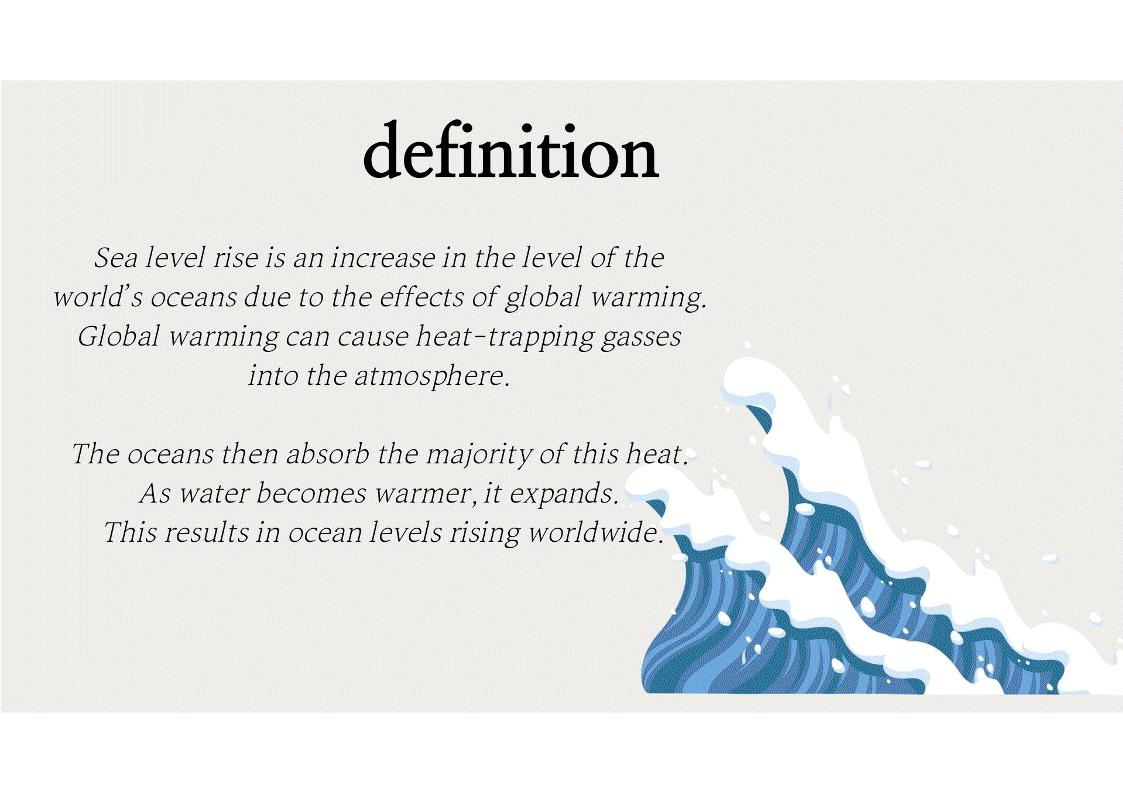
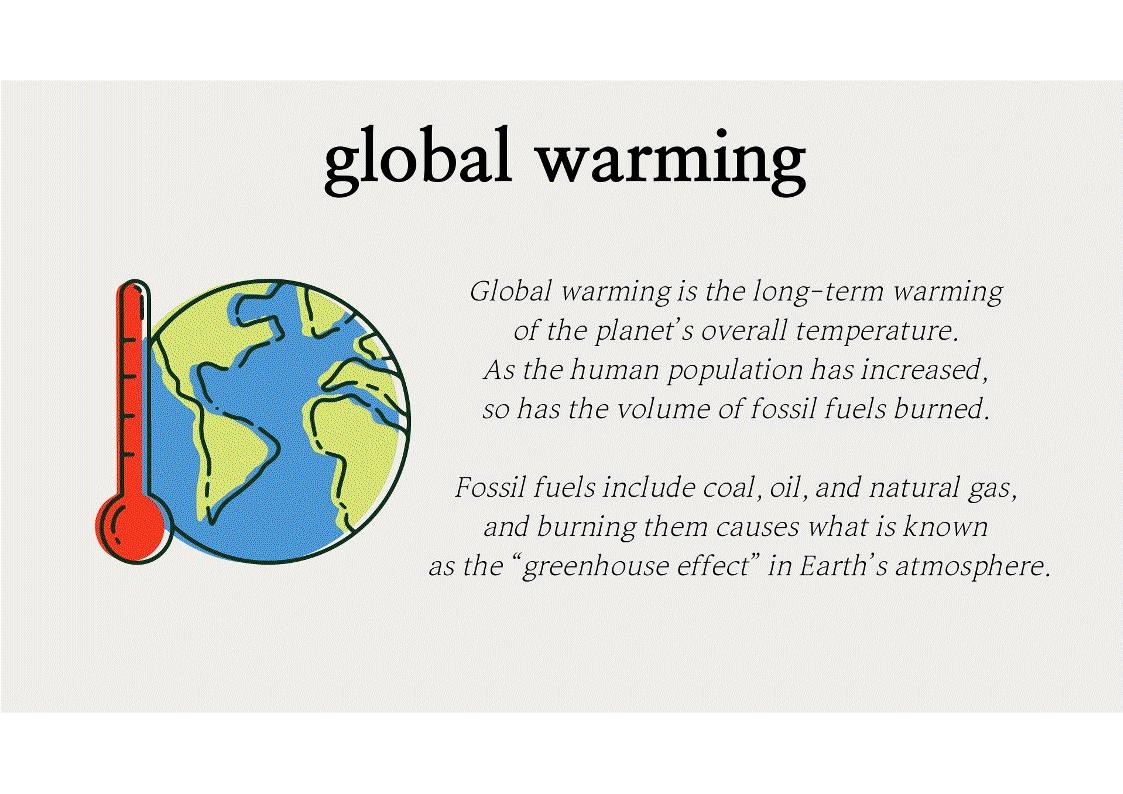



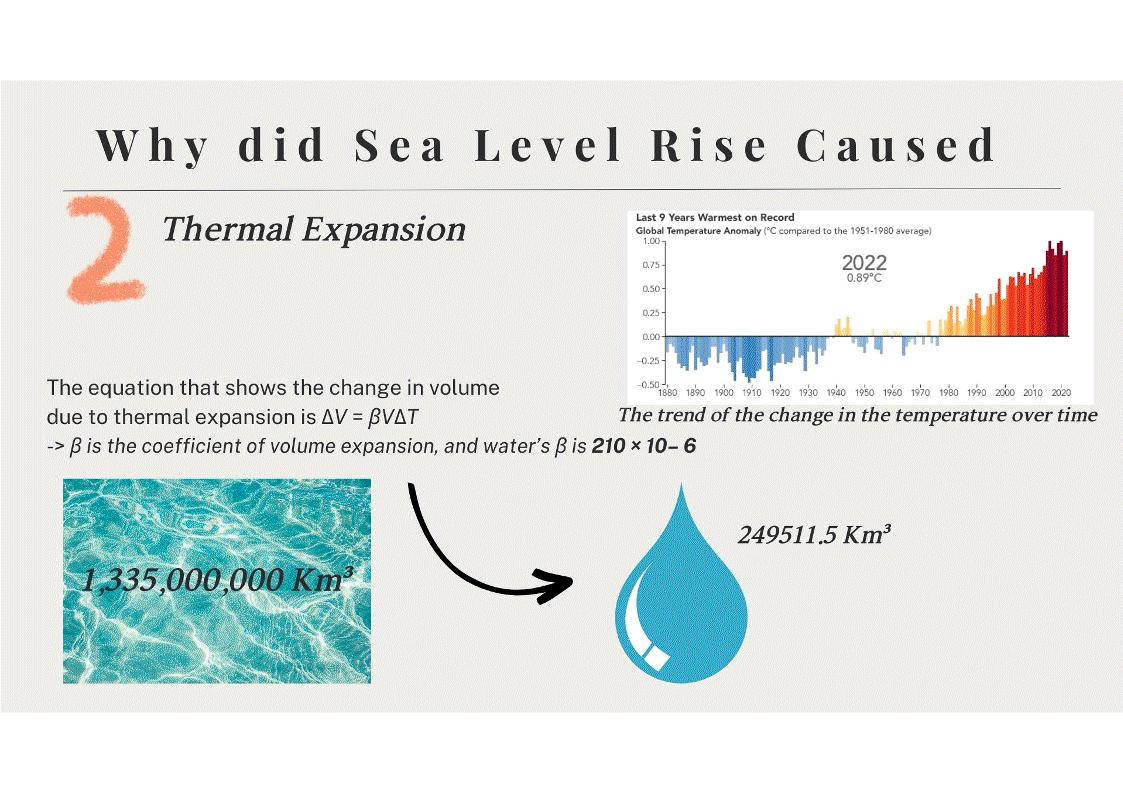

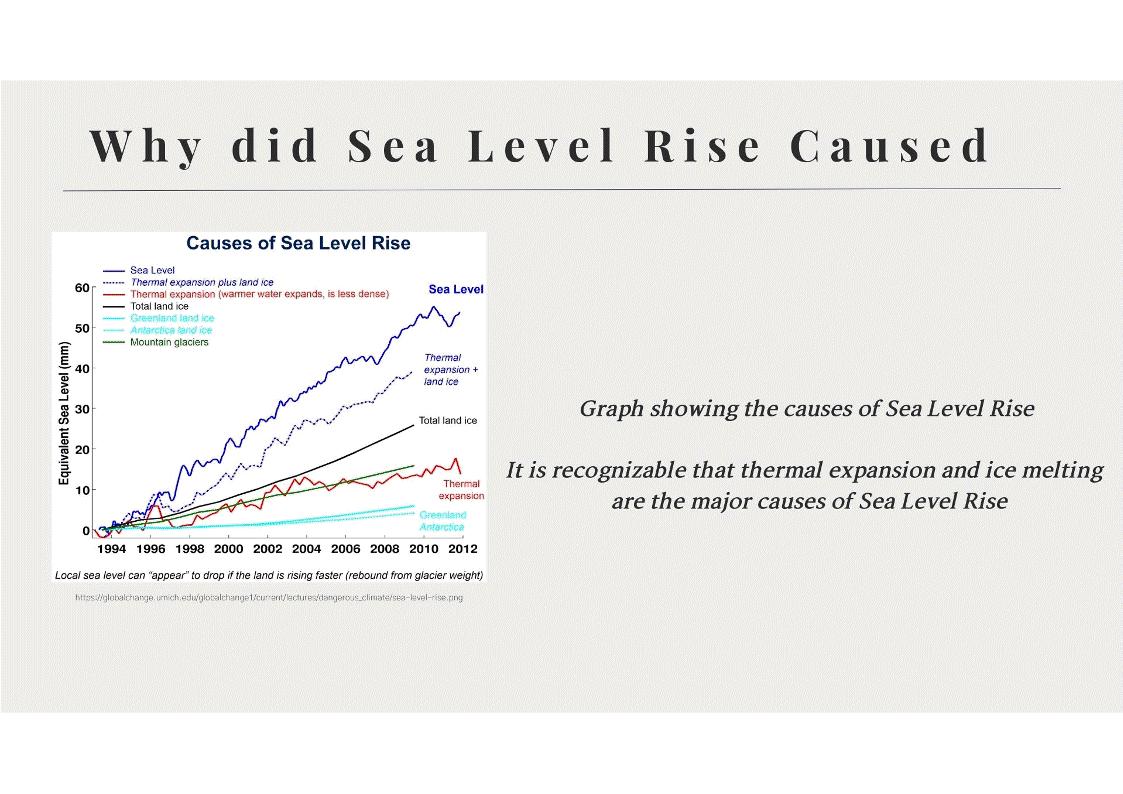

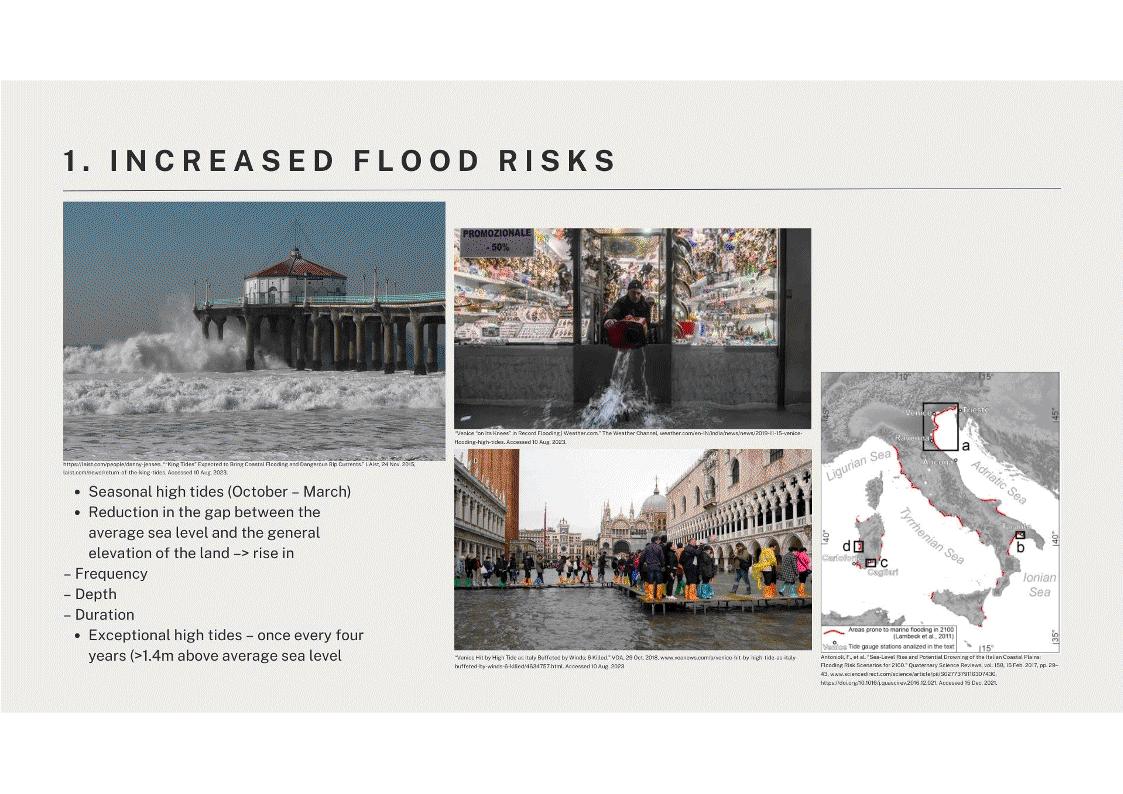

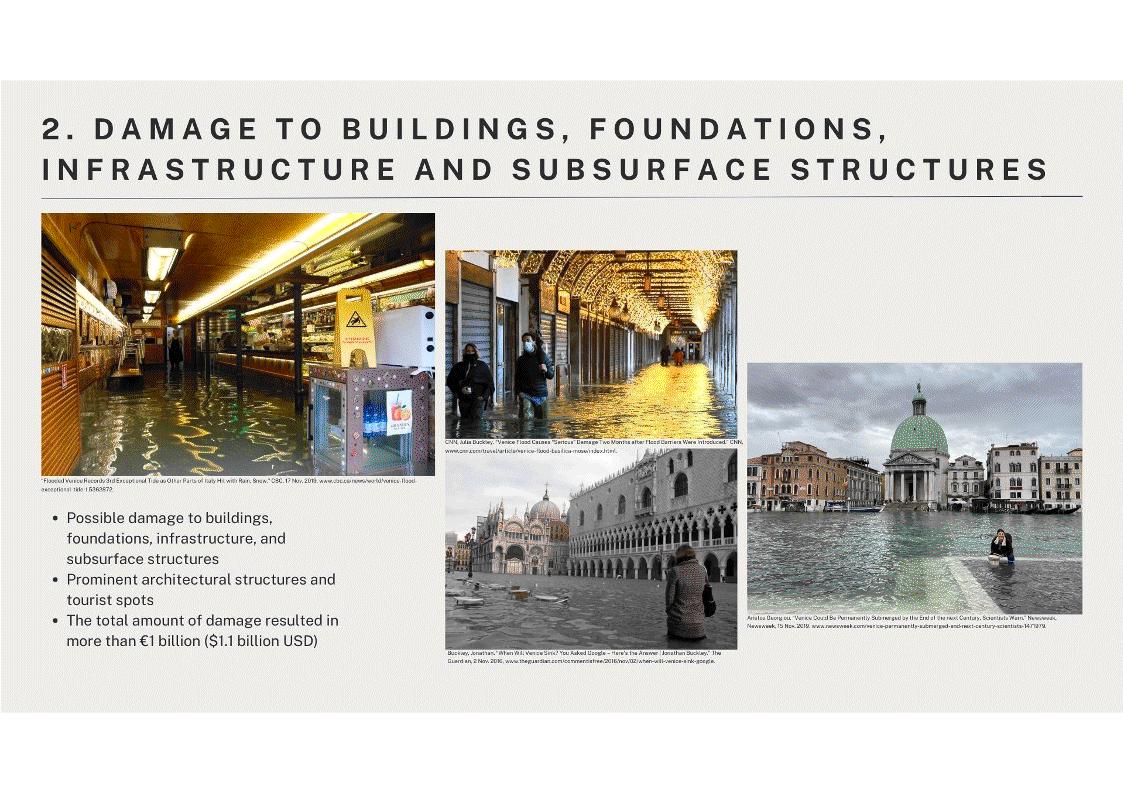

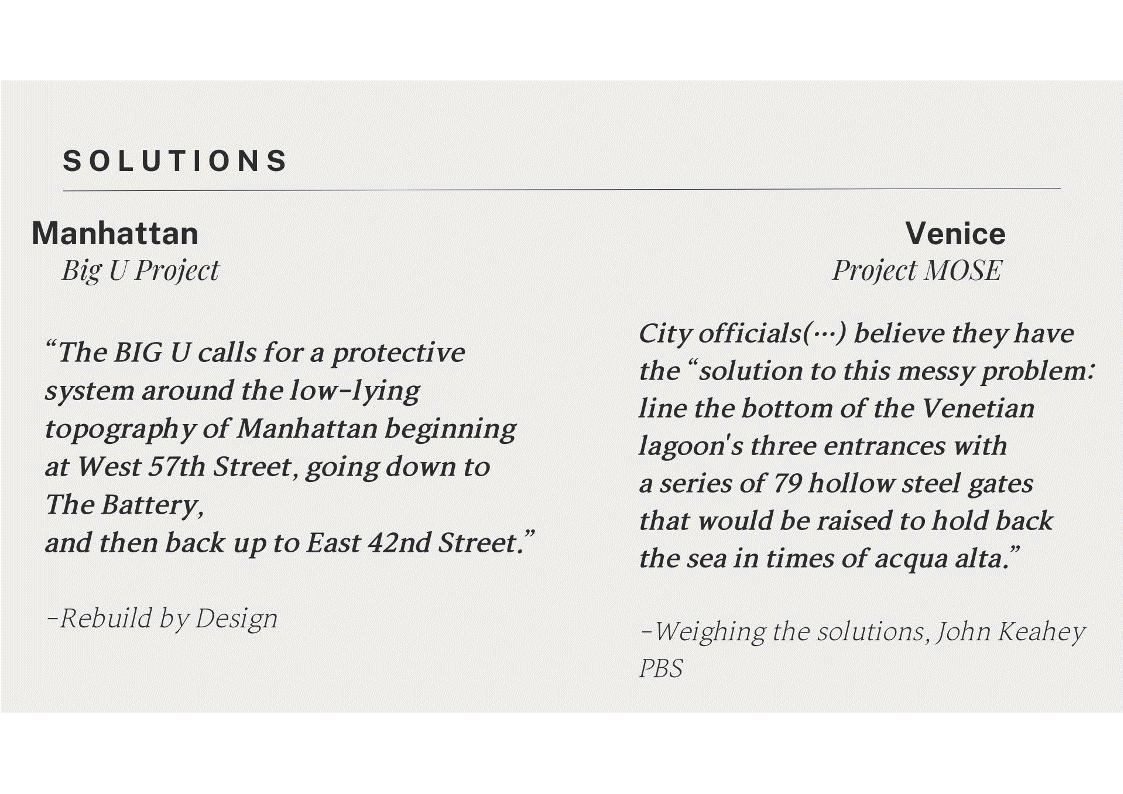
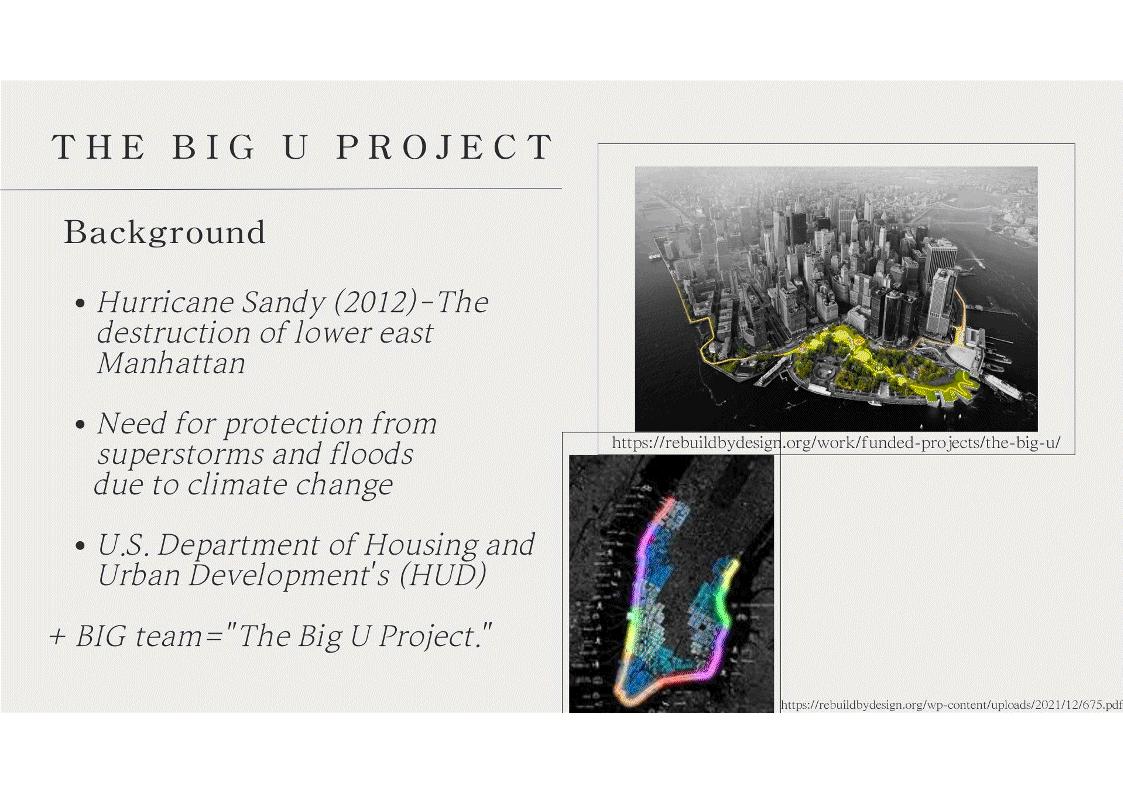

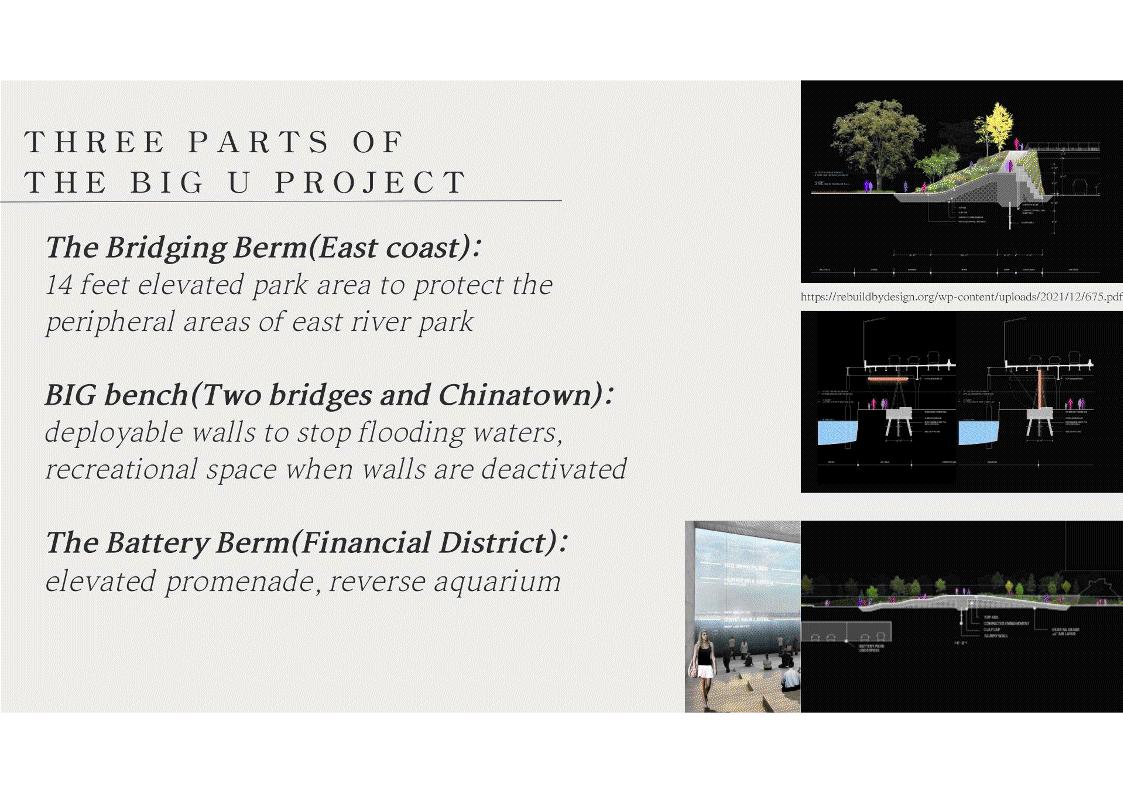
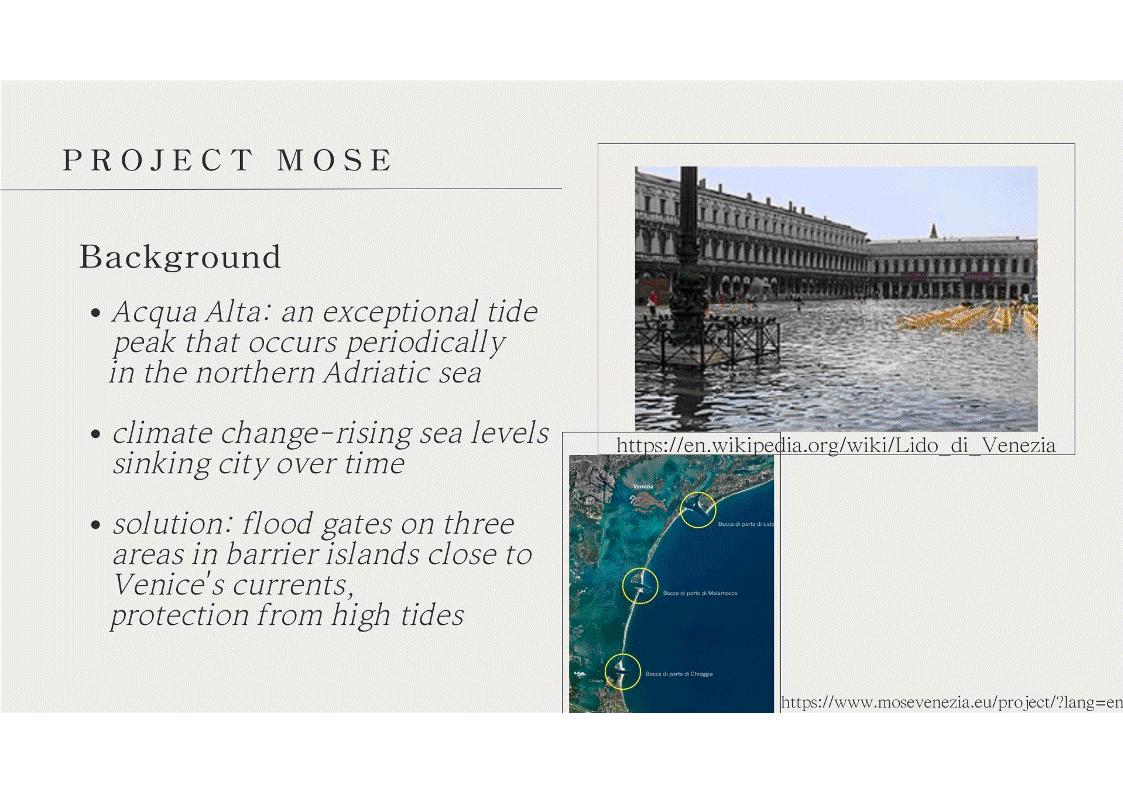

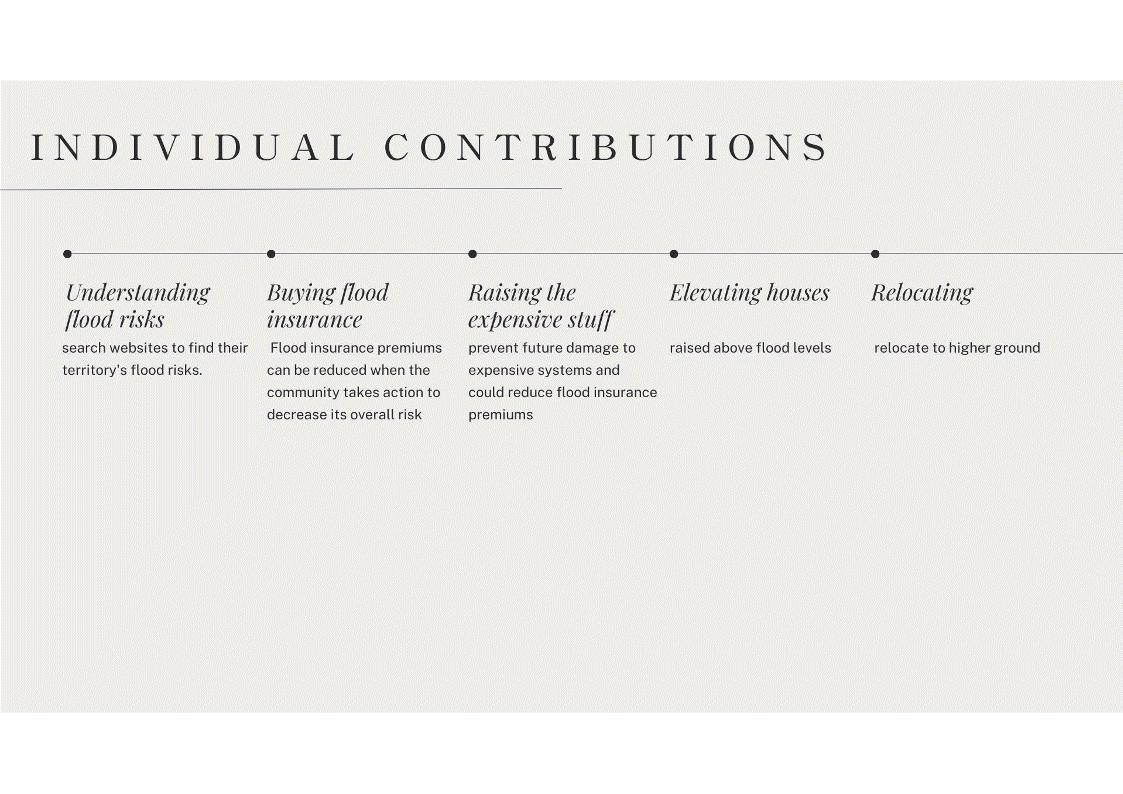
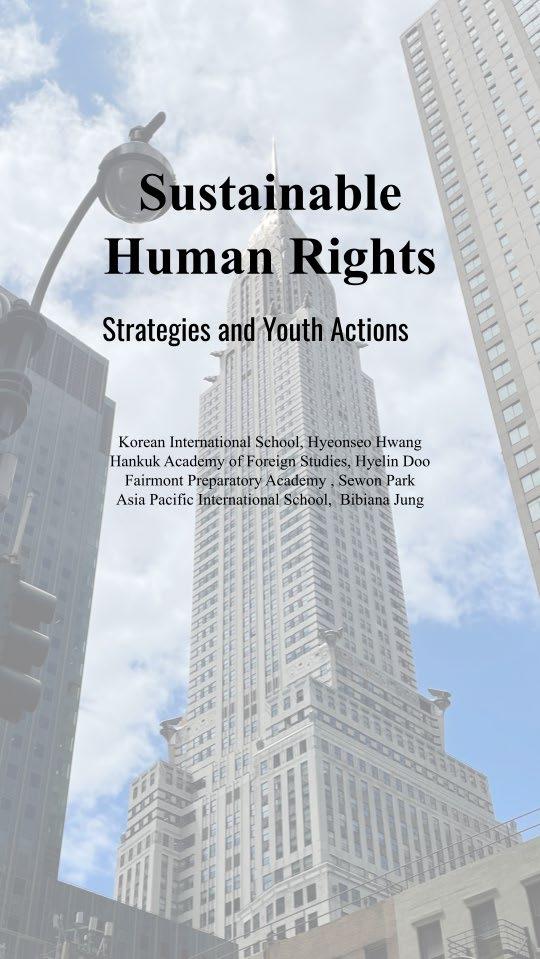
A. Greece’s decline in responsible consumption and production patterns
B. Causes and Action Plan
C. Greece’s future and youth action
A. China’s current situation on the SDG
B. Inequalities found in China and their cause
C. Possible changes to address the problem
D. Youth Action
A. Iran’s Current Problem: Gender Inequality
B. Relationship between Gender Equality and Human Rights
C. The Main Cause of Gender Inequality: Islam and Its Characteristics
D. Searching for a Solution through Reviewing Past Effort
A. Gender Inequality
B. Economic Inequality
C. India’s current Inequality situation & why?
D. How does Economic/Gender Inequality affect India?
E. Solutions
What is the relationship between SDG goals and human rights? In a broad way, human rights are fundamental when achieving the SDG goals, and in a narrow way, several goals, including goal number 5, “Gender Equality”, and number 10 “Inequalities within and Between Countries' ', are dedicated to improving human rights. With equality and non-discrimination at its heart, the 2030 agenda seeks “to realize the human rights of all”, and hopes to “leave no one behind”, in all three dimensions, which are social, environmental, and economic, firmly anchoring human rights principles and standards. Like this, the SDG goals and human rights are very tightly related.

Greece is ranked 28th among the 193 nations that participate in developing the Sustainable Development Goals. Overall, Greece appears to present a satisfactory rate in developing and maintaining its progress towards achieving the 17 SDGs. However, with the decrease of the quality of the 12th SDG, which is Responsible Consumption and Production, Greece had scored 78.4 for their
country score. The three main causes for this include Production-based nitrogen emissions, nitrogen emissions embodied in imports, and exports of plastic waste.
According to the Sustainable Development Report, it appears that Greece has been lacking the performance of Responsible Consumption and Production. Although Greece has enacted an array of strategies to support the patterns of consumption and production within their nation, it reported a value of 40.0 in production-based nitrogen emissions, a value of 22.9 in nitrogen emissions embodied in imports, and a 5.2 in exports of plastic waste, which are causing a downfall in the performance of the consumption and production patterns in Greece.



Increasing their awareness of these issues in particular, Greece has been making a commitment to achieve the objectives of the 12th SDG, Responsible Consumption and Production, which is to develop ways to promote energy efficiency and provide access to more services and a better quality of life. This is essential for the conditions of Greece due to the data reporting the amount of waste that Greece generates. According to the European Environment Agency (source), Greece produces about 5.6 million tonnes of municipal waste annually. Furthermore, the waste generation in Greece has increased 6% since 2015.
So what is Greece doing to develop a more sustainable environment regarding their consumption and production patterns? One of the ways is implementing eco-friendly and renewable resources. According to Real Greeks, one of the goals that Greece has set is to produce 60% of its energy from renewable sources by the year 2030 and implement policies to encourage wind and solar power. which why Today, you can see wind turbines, and solar farms are installed in remote areas.
Second, Greece is transitioning to a low-carbon economy. According to the IEA, Greece has been attempting to reduce greenhouse gas emissions, decrease its use of coal-fired generation, and reform its electricity and natural gas markets. It is shown that Greece is taking important steps in reducing their use of coal and toxic materials and speeding up the process for new renewable energy projects.
Finally, Transitioning to a circular economy mode for sustainable production and consumption patterns. A circular economy, by definition, is an economic system based on the reuse and regeneration of materials and or products. In Early 2018, Greece’s Governmental Economic Policy Council validated a National Aciton Plan to promote a circular economy. According to the National Circular Economy Strategy Greece, the long-term goals of the Action Plan includes preventing waste and improving recycling, promoting industrial symbiosis, supporting circular consumption patterns, enhancing multistakeholder partnerships, and monitoring progress towards a CE model through SMART indicators. By endorsing this plan, Greece is hoping to see the country’s economy become more sustainable.
Overall, Greece is enacting ways to achieve their goal of developing a more sustainable environment and strategies to improve the patterns of Responsible Consumption and Production. With the notable steps that Greece is taking, they appear to have opportunities to make great changes within their nation and increase their nation’s value. On the other hand, additional help may be needed, such as raising
awareness between the nation’s people and caring enough to come together to plan strategically for a better and healthier place for future generations. What we can do as rising generations of the future include recycling and reusing waste, adopting sustainable practices, minimizing food loss and waste as much as possible. Basically, what we are told to do since we are kids. It’s not the big and serious changes that can make the difference in the world, but often it is the little and simple steps that we remember to do that can really help out the planet that we are living in and make this world a healthier place to live in together.
According to “Sustainable Development Report 2023”, China ranked 63rd out of the 193 nations that are participating in the SDG, based on their overall score that measures the total progress towards achieving the 17 goals. The total score was 72.01 out of 100. Generally, their current progression is ongoing at a relatively good rate, especially showing many improvements in goal number 1, “No poverty”, and number 4, “Quality Education”. However, they also present major challenges to several goals, including “Reduced Inequalities” and “Partnerships for the Goals”. Goal number 10, particularly, showed a low average performance rate among the 17 goals, becoming a serious problem in the country.
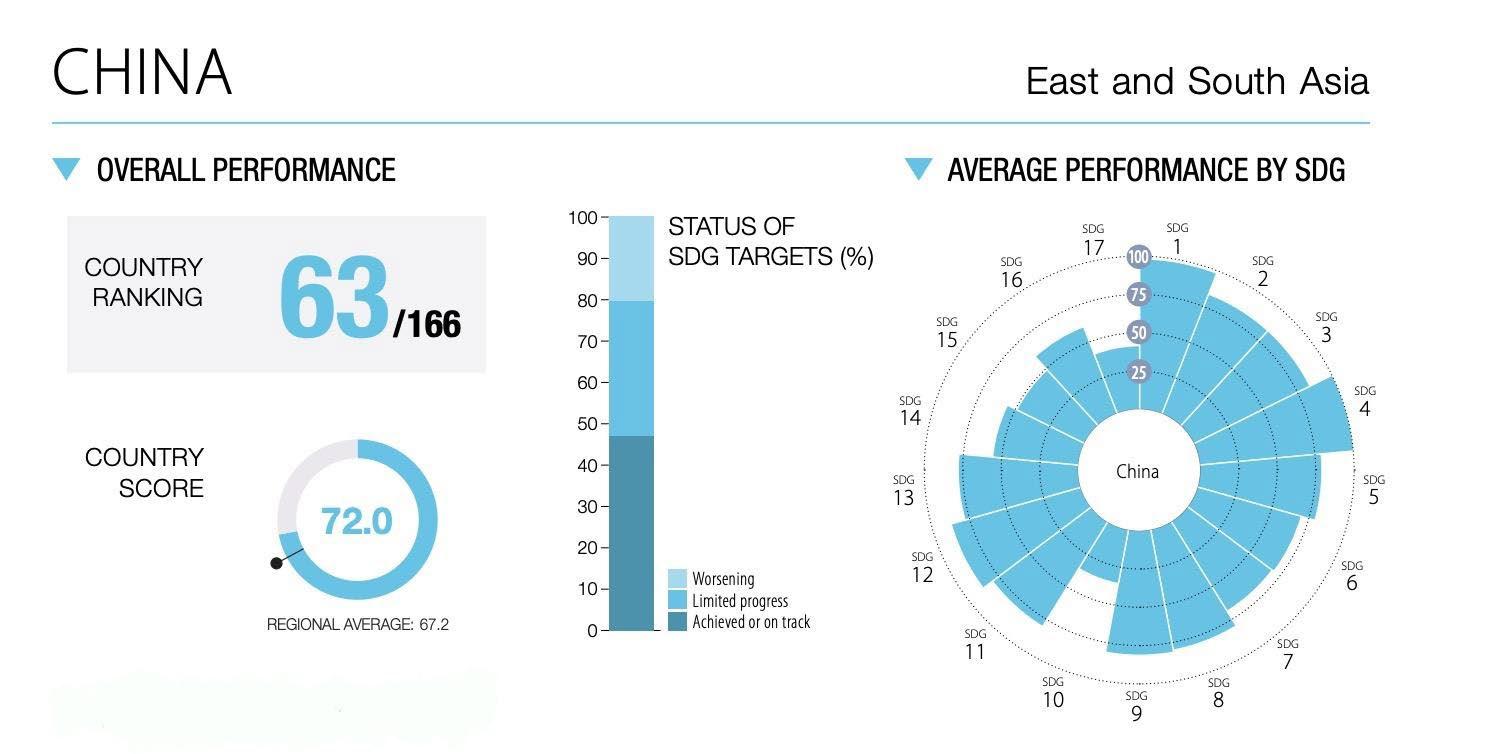

Inequality in China can be chiefly spotted in two categories; Economic Inequality and Inequality in Education. China’s economic inequality has always been an issue throughout the country, showing severe wealth gaps. Moreover, the pandemic situation worsened the matter, causing a decline in rural income. Additionally, with the covid-19 situation, the inequality in the labor force, which refers to the labor circumstances of having increasing informal jobs, is also stimulating the issue.
Some of the contributions that cause inequality in the industry are the ‘Hukou’ system and the tax system. The ‘Hukou’ system is China’s official document issued by the government, which is used for population registration.
The main problem with this system is that it requires each citizen to be registered in only one place of residence permanently, causing a gap between the advantage a person can get from their official documented residence. Due to this, people living in relatively rural areas aren't able to receive the benefits that are provided by the urban area, which tends to have more budgets, including financial support policies, and social services, making the people living in the rural area even worse, and helping the people in the urban area even more. Also, even if people move from one place to another, they aren’t able to get support from the moved region because of their permanent registration of the ‘Hukou’ system. Another reason is the tax arrangement. China’s current tax system is mostly indirect or transactionbased taxes, which pressures lower incomes more, compared to higher incomes, since they share more of their income on consumption, contributing to the wealth gap of the nation.


Another aspect of the inequality that can be found is the inequality in education. Although China tends to provide quality education, this quality can’t be seen nationwide. The quality of education depends heavily on the location, where the rural areas lack quality schools.

Furthermore, the location also affects people’s ability to learn. Since many rural areas in China lack medical centers and people, children in these areas are far more likely to suffer health problems, affecting their ability to learn. Education in China is also affected by an individual's family background. As mentioned above, China’s number of informal jobs is increasing, and due to this fact, several parents are having trouble giving their children costly quality education. This eventually leads to failure in succeeding in high-skilled jobs with high incomes, which is highly related to the economic inequality elaborated above.

To solve these gaps, several changes can be made. The first change is adjusting the ‘Hukou’ system. Instead of permanently registering individuals in a certain area, the government could consider allowing people to change their location registration, allowing them to receive different advantages depending on their district. By this, the inequality of aid people receive among the population in the same region would decrease, considering people who need it first, regardless of their documented location. As for the inequality in education, opportunity and care for quality education should be valued. The government should search for a way to find ways to provide more opportunities for people living in rural areas, so they can also access quality education to have a chance to get a high-income job, which can also address economic inequalities.
As for actions youth can make to help China narrow these gaps, there is spreading the awareness and importance of closing the inequality gaps in societies. Highly unequal societies can erode trust, produce less successful sustainable economic growth, and others. Therefore, spreading and communicating regard on this topic is important. Spreading awareness around the world about it not only helps a certain country develop and improve, but it can help enhance the whole world. Youth can participate in this action in many ways, but some of the action we can take is working with related NGOs, participating in campaigns, and volunteering.
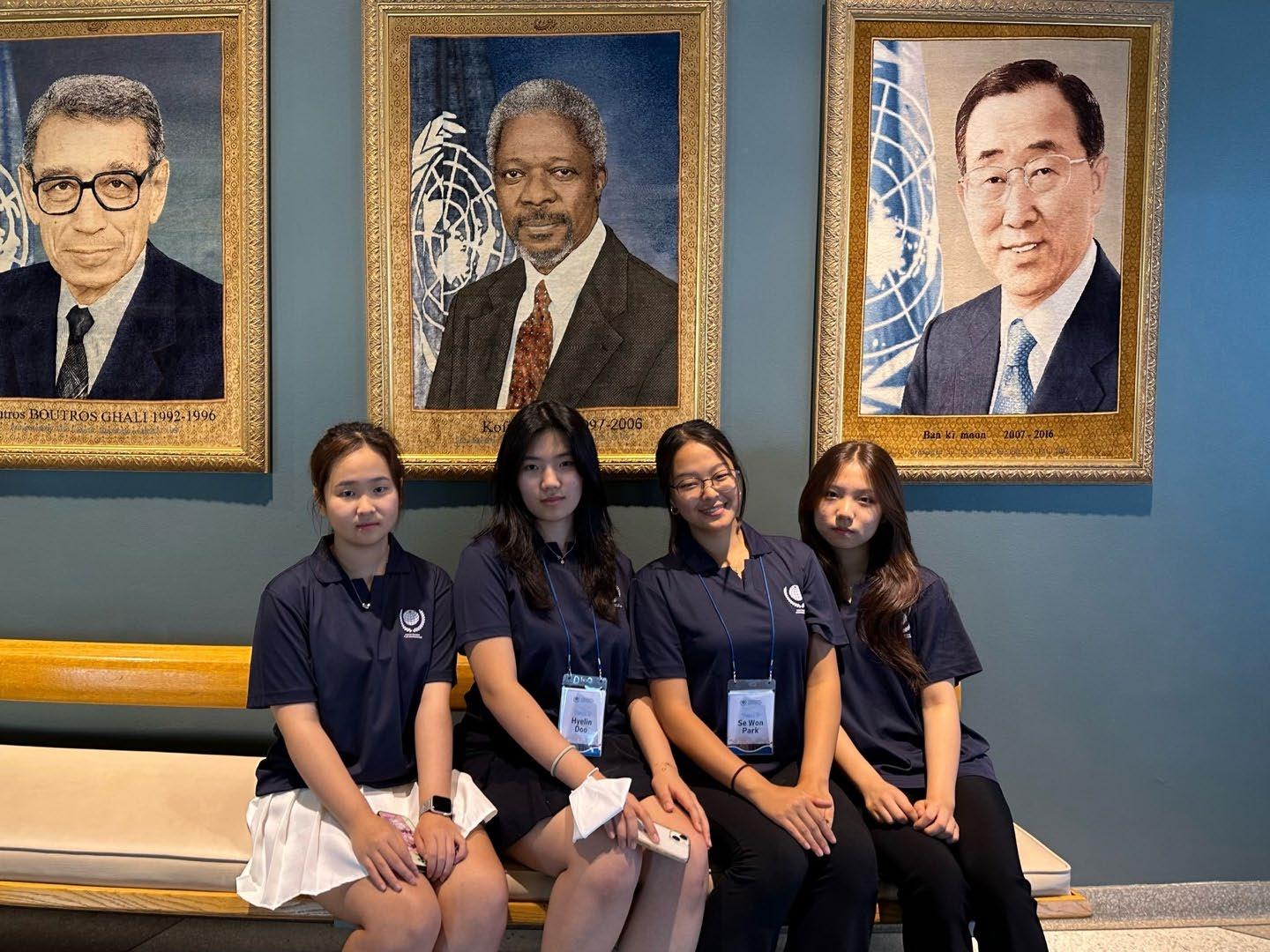

Iran’s current gender inequality problem is emerging as a chronic crisis against human rights. According to the Gender Inequality Index from UNData, Iran ranked 115th place among 191 countries while distributing 5.6% of seats of parliament to women. Iranian women are stubbornly excluded from societal opportunities and are under pressure from Islam’s discipline. They are often discouraged from
achieving education, freedom of dress, and respect from others. Therefore, Iranian women have been sacrificed as victims of discrimination.
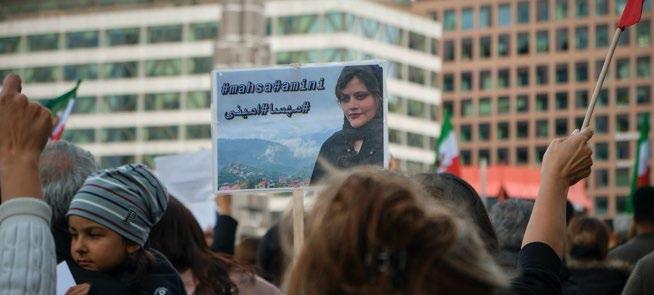
In recent, however, the atmosphere is changing. As the importance of human rights and methodologies to reinforce them advances, the perspectives of global citizens are differentiating in a positive direction. More people and organizations are participating in actions to help the victims of discrimination out of their desperate situations and lead them to a brighter future. Even Iranian women themselves are arbitrarily engaging in political movements, such as protests, to acquire their rights. For instance, there is a well-known incident of Mahsa Amini. A lot of people stood up to the Iranian government for beating her for an unacceptable reason, which was the fact that she wasn’t dressed appropriately, eventually leading her to mortality. Due to its lack of morality and cruelty, the incident became well-known to people around the world, and there were numerous protests against it. Not just Iranian people, but people from diverse countries participated and argued for the pursuit of the noble value, human rights. Now, Iran is shouting for equality and freedom from religious repression.

Since disrespect against women is induced by the ignorant atmosphere of society, which causes discounts on women’s opinions, Iran is losing the benefits that could be acquired. According to Maren Jimenez, a professional devoting her efforts to the UN Department of Economic and Social Affairs, there are a lot of problems that can arise from social inequality. Highly unequal societies often show their downsides-– little effect at reducing poverty, slow-growing and less successful economic growth compared to other countries, and perpetuate inequality across generations. Without appropriate policies, inequality can concentrate political power. Trust is eroded – potentially destabilizing political systems and challenging responses to large-scale crises.
Great Gatsby Curve[MOU2]
Gender equality can be a means to achieve successful progress, free women from the harsh repressions of society, and eventually advance the overall environment atmosphere. To reduce poverty, to ascend their economy to a much higher level, and to help descendants out of dismay originated from social pressure. Overlooking women and their potential as productive workers wastes their valuable resources and time. If it were not for their prejudice against women, Iran could have achieved massive wealth and power compared to its current status.


Islam is a religion that consists of devoting prayers, strict disciplines, and the only god named Allah. There are 1.8 billion Muslims worldwide, especially concentrated in the Middle East and North Africa. All of their aims are to live a life to satisfy the direction of Allah and the prophet Muhammad. Yet, women in Islamic culture are often treated poorly compared to men.
Many unfair disciplines exhibit discrimination against women. In inheritance laws, for instance, some interpretations of the Quran claim that women deserve half the inheritance portion of men. This represents Islamic society’s conventional repression of women’s actions. Furthermore, in the territories ruled by the Taliban, in which women are banned from education and medical treatments by male doctors, Muslim women cannot acquire proper care when injured or diseased. This lack of opportunities and services offered to women keeps women from social success and the right to pursue happiness. Because of this strict characteristic of Islam that goes against human rights, massive hardships are expected to occur while utilizing certain solutions. Hence,
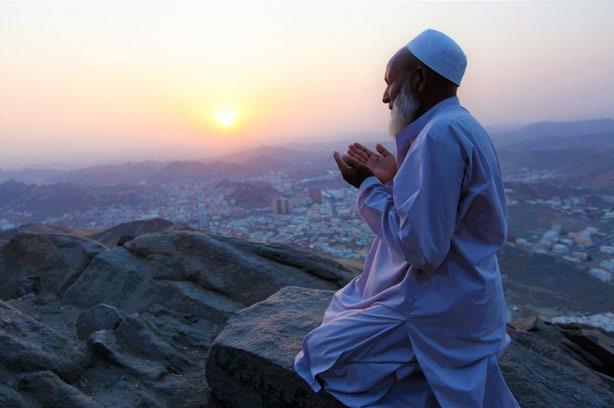
solutions concerning those obstacles are needed. Most importantly, Muslim women’s freedom of religion and living environments have to be respectfully treated.
Iran has been at the center of the UN’s attention due to its ignorance of women’s rights. According to the United Nations Human Rights Office of The High Commissioner, UN experts obtested against the unfortunate and unacceptable death of the previously mentioned Mahsa Amini.
“We are shocked and deeply saddened by the death of Ms. Amini. She is another victim of Iran’s sustained repression and systematic discrimination against women and the imposition of discriminatory dress codes that deprive women of bodily autonomy and the freedoms of opinion, expression, and belief,” the experts said.”[MOU4]
Despite previous efforts like this, the problem is still unchanging and complex. Until now, most of the efforts were external influences. Since stubborn constructions such as Islamic society are hard to squeeze in, even the experts weren’t capable of shaking and destabilizing the system. Now it’s time to start changing from the inside. Little did you know that the popularity of foreign cultures is rising in Iran. For example[MOU5] , K-pop is gathering huge attention in Iran. Numerous female population supporting Korean music culture is now also affected by its active fan culture, which is leading them to social action experiences. Young wave calling for changes might be the main key to help with the gender inequality problem.
Supporting Iranian women to communicate and cooperate with others will help them gain social energy and learn how to affect global society with their work. Hence, offering Iranian women opportunities to interact with women of foreign countries on the basis of cultural communication will motivate them to expand their societal influence and chances of approaching peripheral areas. With asset, labor, and supports from UN organizations, the gender inequality problem in Iran will be largely helped.
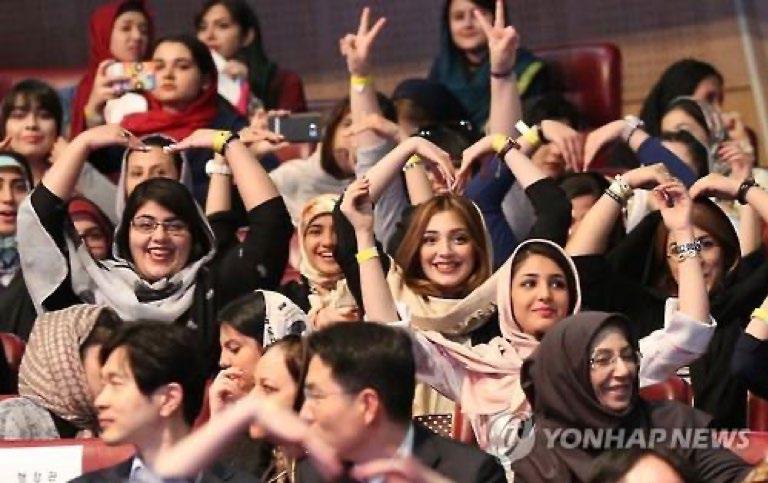
In conclusion, human rights and sustainable development goals are closely connected, making the accomplishment of SDGs a crucial task. These two aspects are intertwined, highlighting the importance of focusing on SDGs. The link between human rights and sustainable development is clear, guiding us towards a meaningful direction. When considering the broader impact, it's evident that achieving the SDGs should be a top priority. Therefore, our collective efforts should be directed towards this fundamental objective, ensuring a fair and equitable future for everyone.

In India, there are currently inequality issues that have to improve and develop. India is an extremely religious country that already owns strict laws and community castes within citizens, and if India’s inequality issues continue to grow, the situation will really be a pain in the neck. Here is a quote I wanted to share with you guys.
“What is particularly concerning in India’s case is that economic inequality is being added to a society that is already fractured along the lines of caste, religion, region, and gender.”
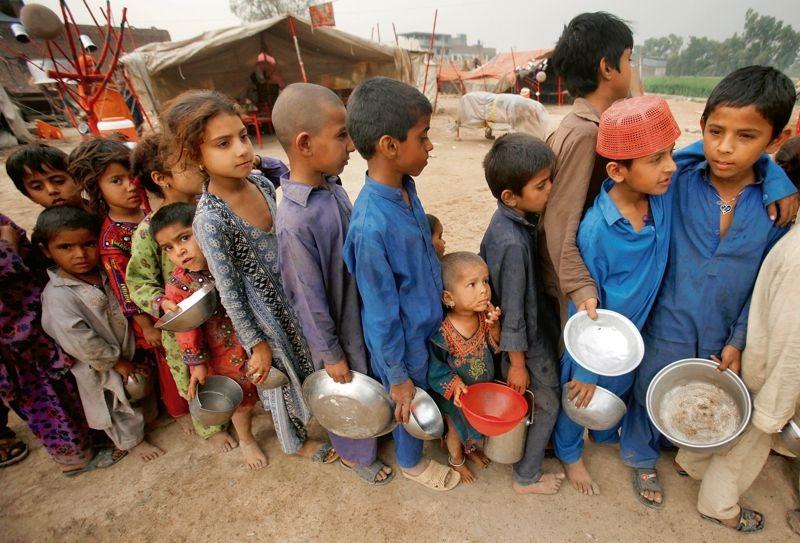
 Professor Himanshu(Jawaharlal Nehru University)
Professor Himanshu(Jawaharlal Nehru University)
I chose to share this quote with the audience because it explains the current situation in India perfectly. As you heard from me and as you can see from the quote, India’s inequality issues are extreme. Even children are involved in this situation at this very moment.
So for gender inequality, As introduced in the earlier section, females, and literally females of any age can be a target of sexual harassment. Especially for people who are in poverty. As they live life on the streets, homeless, and futureless with no certainty of life people in poverty suffer terribly with mental weaknesses and issues. People in poverty often have these weaknesses mentally, physically, and emotionally because they are in an uneasy situation with numerous struggles on their way. As a female, especially as a lower caste female, there would not be a single chance that you would be able to successfully finish your education courses. First of all, India has always been strict on females attending and learning in schools. And because of this reason, females in India had many hardships in being educated. This is one of the reasons why educated females were like living legends at that time. Learning and interacting freely was very strictly controlled for females, no matter what age. Not just educationwise, but their entire life, including their marriage, depended on their parent's choices. Marriage in India had a purpose to connect and bond a relationship between the two families and because of the caste laws where they have to marry the people in the same caste, there were many complicated procedures to prepare during the marriage. One unbelievable rule is that the wife has to prepare everything, literally everything needed for the marriage. The car, housing, and any other needs for the marriage have to be prepared by the wife and the wife's family. The unfair society for females shows up in the procedures of marriages as well. And this is why gender inequality is a severe matter in India that should be changed as soon as possible
As income inequality increases, India’s poor citizens get affected by not being able to reach quality healthcare services or education. The top 10% of the country holds 77% of the total wealth of the country. Since India is the country with the most population on Earth, the fast growth state affects the economic state in India and as the population increase, the other citizens in poverty struggle to reach
out to healthcare and food for specifically people in poverty. These negative impacts on people of poverty isolate the poor people more and more.

In Upaya, India, people live on less than $1.90 per day and with this unbelievable amount of money they live on, they are responsible for not just themselves but their families as well. Extreme poverty and wealth gaps cause inequality among the citizens. The inequality these people get is mind-blowing. Just because of the wealth gap, most people in extreme poverty do not have access to basic human needs such as healthcare, housing, and fresh food. People in poverty are also disempowered easily and often do not have barely any control over their lives. They lose hope quickly and suffer mentally, emotionally, and physically. Ongoing struggles about their future are another hardship they have. Without quality education, safe housing, and money, these people have hardships to be employed or accepted in society. Most impoverished people are ignored and treated harshly just because of their position in society. The human rights UN pursue is to accept and respect these people just as any average human being.
How do we reach people in poverty? How should we help them?
The poorest are often unseen because of their gender, religion, wealth gap..etc. These people in poverty are discriminated against and socially excluded and have hardships being included in a community. Nobody listens to these people and their voices stay unheard. Unless there is a specific platform for them to speak out loud, these people in absolute poverty and relative poverty stay covered. Their daily struggles and difficulties can be easily not recognized and they might be living in poor conditions.
What caused this situation?
Big wealth gap : What caused this is the Inequality of wealth and income because females in India have much fewer opportunities and chances to participate in society. Quality education isn’t always provided to females in India unless you are born in a very rich family with supportive parents. And even if female students graduate from the education process and look for a job females are given much less money doing the same work as men. Men from India earn 82% of labor income, while women earn just 18%, And because of this, most female graduates in India are discriminated against and criticized because of their wealth gap. This unbelievable and unequal attitude that society shows toward female graduates stresses the student and their families too. This is why even if some female students rarely master all of their education, she chooses to stay as a housewife. The cultural differences are impacting everyone in India, especially female students.
Absolute poverty : High population growth state & lack of healthcare facilities has an extreme impact on the poverty situation in India. People in poverty get very poor or barely any type of healthcare in India. An unfortunate thing is that most people in poverty and especially females aren’t educated fully, so they usually struggle to get jobs and have no other way to earn their own food or medicine they are in need. Causes for Widespread Poverty in India - GeeksforGeeks
Gender inequalities : The different perspectives in society and the cultural practices play a great role within the society which then affects the females who are living in India. Females in India, especially females in a lower caste, get criticized, harassed, and raped on a daily basis because of these cultural practices and differences. The cultural difference plays a big role here again. In India, there are young girls that are 13-15 years old that are forced to marry someone they don’t even know. This is a very common culture in India that I have explained briefly in the upper sections, where you force your daughters to get prepared to marry a teenage boy they don’t even know to keep a bond and make relationships between the two families.
“A ward in the department of obstetrics at Gardanibag Hospital in Patna, Bihar state.”
India: extreme inequality in numbers | Oxfam International
The richest in India have control of a huge part of India’s total wealth created through capitalism and inheritance. The richer part of the country is getting richer and richer at a fast pace while the poor are still struggling with their lives on the street.
62% of females in India receive no schooling and education at all. Even if they get an education, their education subjects might differ from the males' education and the quality of the education was always lower than what the males were getting taught.
There are two government-level solutions I have thought of for India and those are
1. UN Must invest in public health services and education
So if UN invests in public health communities and education it would be benefitial for the people in poverty because the more they invest into the services [ which are health services and education ] more and more health services and education centers will be there for the people in poverty to access easily.

2. Give incentive to communities and then encourage them to engage in more social movement
If UN encourages other communities and recommend them to engage in more social movements, The poverty and the dark side of India will be known and then if they get the right amount of attention, they will be able to get help and support from many other organizations.

In conclusion, human rights and sustainable development goals are closely connected, making the accomplishment of SDGs a crucial task. These two aspects are intertwined, highlighting the importance of focusing on SDGs. The link between human rights and sustainable development is clear, guiding us towards a meaningful direction. When considering the broader impact, it's evident that achieving the SDGs should be a top priority. Therefore, our collective efforts should be directed towards this fundamental objective, ensuring a fair and equitable future for everyone.


OHCHR and the 2030 agenda for sustainable development. OHCHR. (2021, March 1). https://www.ohchr.org/en/sdgs

Boquen, A. (2023, June 7). What is the Hukou System in China? – definition, Pros & Cons. Horizons. https://nhglobalpartners.com/the-chinese-hukou-system-explained/
Ewe, K. (2023, June 23). China cracks down on displays of wealth and poverty in the name of “common prosperity.” Time. https://time.com/6289559/china-inequality-wealth-flaunting-common-prosperity/
Mazzocco, I. (n.d.). How inequality is undermining China’s prosperity. CSIS. https://www.csis.org/analysis/how-inequality-undermining-chinas-prosperity
Merler, S. M. S., Merler, S., & Amighini, A. (2022, March 1). Inequality in China. Bruegel. https://www.bruegel.org/blog-post/inequality-china
Perlberg, S. (n.d.). How China’s tax structure crushes the poor. Business Insider. https://www.businessinsider.com/how-chinas-tax-structure-hurts-poor-2013-8
The Great Gatsby Curve | Annual Review of Economics, www.annualreviews.org/doi/10.1146/annureveconomics-082321-122703. Accessed 10 Aug. 2023. “Un Rights Body Launches Iran Human Rights Investigation | UN News.” United Nations, news.un.org/en/story/2022/11/1131022. Accessed 10 Aug. 2023. “Coming Two Years Crucial in Spreading Korean Culture to Iran.” The Korea Times, www.koreatimesus.com/coming-two-years-crucial-in-spreading-korean-culture-to-iran/. Accessed 10 Aug. 2023. “Iran: Un Experts Demand Accountability for Death of Mahsa Amini, Call for End to Violence against Women.” OHCHR, 22 Sept. 2022, www.ohchr.org/en/press-releases/2022/09/iran-un-expertsdemand-accountability-death-mahsa-amini-call-end-violence. Koo, Gi Yeon. “Riding the Korean Wave in Iran: Cyberfeminism and Pop Culture among Young Iranian Women.” Duke University Press, 1 July 2020, read.dukeupress.edu/jmews/article-abstract/16/2/144/166285/Riding-the-Korean-Wave-inIranCyberfeminism-and?redirectedFrom=fulltext. Pintak, Lawrence. “Coronavirus Is Highlighting the Rift in Islam between Modernists and Literalists.” Religion Unplugged, 10 Aug. 2020, religionunplugged.com/news/2020/4/17/coronavirus-is-highlighting-the-rift-in-islam-between-literalistsand-modernists.
Sustainable development report 2023. Sustainable Development Report 2023. (n.d.-b). https://dashboards.sdgindex.org/profiles
Greece Country Profile - SDGs and the environment. European Environment Agency. (2020, December 2). https://www.eea.europa.eu/themes/sustainability-transitions/sustainable-development-goals-andthe/country-profiles/greece-country-profile-sdgs-and
Iea. (2023, April 1). Greece must build on its successes in reducing fossil fuel dependence, IEA report says - news. IEA. https://www.iea.org/news/greece-must-build-on-its-successes-in-reducing-fossil-fueldependence-iea-report-says
Greek. European Circular Economy Stakeholder Platform. (n.d.). https://circulareconomy.europa.eu/platform/en/mainlanguage/greek#:~:text=Greece%27s%20Governmental%20Economic%20Policy%20Council,term%20ad option%20of%20CE%20principles.
Current State of Waste Management in Greece. WtERT. (n.d.). https://www.wtert.net/paper/3827/CurrentState-of-Waste-Management-inGreece.html#:~:text=In%20general%2C%20the%20waste%20management,and%20have%20to%20shut% 20down.
Anna. (2023, January 24). The eco-friendly guide to Greece. REAL GREEKS. https://realgreeks.net/qa/eco-friendly-practices-in-greece/
Many EU member states not on track to meet recycling targets for municipal waste and packaging waste. European Environment Agency. (2023, June 29). https://www.eea.europa.eu/publications/many-eumember-states
[MOU1]https://news.un.org/en/story/2022/11/1131022
[MOU2] Durlauf, Steven N.; Kourtellos, Andros; Tan, Chih Ming (2022). "The Great Gatsby Curve". Annual Review of Economics. 14 (1): 571–605. doi:10.1146/annurev-economics-082321-122703 ISSN 1941-1383
[MOU3]https://religionunplugged.com/news/2020/4/17/coronavirus-is-highlighting-the-rift-in-islambetween-literalists-and-modernists
[MOU4]https://www.ohchr.org/en/press-releases/2022/09/iran-un-experts-demand-accountability-deathmahsa-amini-call-end-violence

[MOU5]Gi Yeon Koo; Riding the Korean Wave in Iran: Cyberfeminism and Pop Culture among Young Iranian Women. Journal of Middle East Women's Studies 1 July 2020; 16 (2): 144–164. doi: https://doi.org/10.1215/15525864-8238160
https://read.dukeupress.edu/jmews/article-abstract/16/2/144/166285/Riding-the-Korean-Wave-inIranCyberfeminism-and?redirectedFrom=fulltext
[MOU6]http://www.koreatimesus.com/coming-two-years-crucial-in-spreading-korean-culture-to-iran/
India: Extreme inequality in numbers. Oxfam International. (2022a, September 9). https://www.oxfam.org/en/india-extreme-inequality-numbers
Project, B. (2019, December 23). 10 facts about poverty in India. The Borgen Project. https://borgenproject.org/10-facts-poverty-in-india/
Poverty Eradication India’s biggest challenge : The Tribune India. (n.d.). https://www.tribuneindia.com/news/comment/poverty-eradication-indias-biggest-challenge-448640



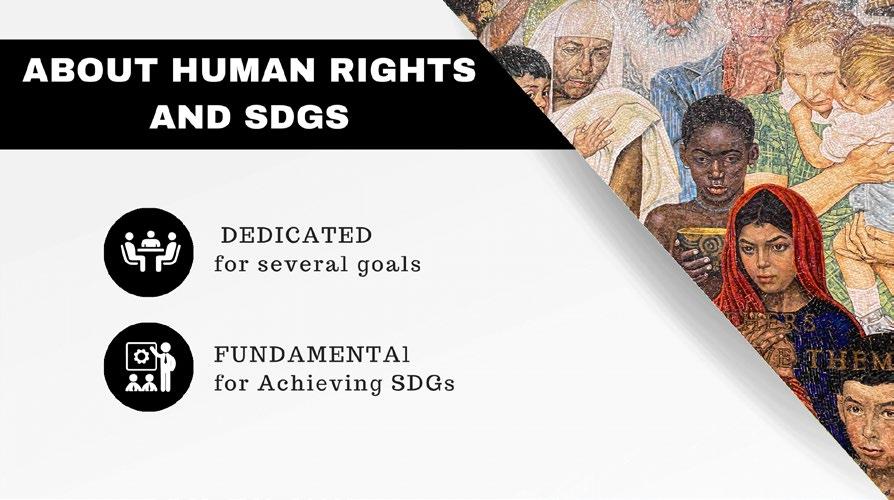


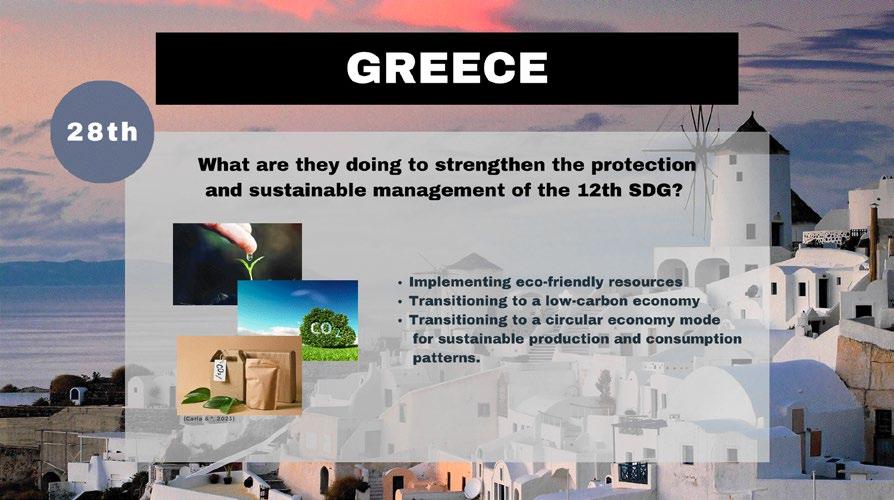
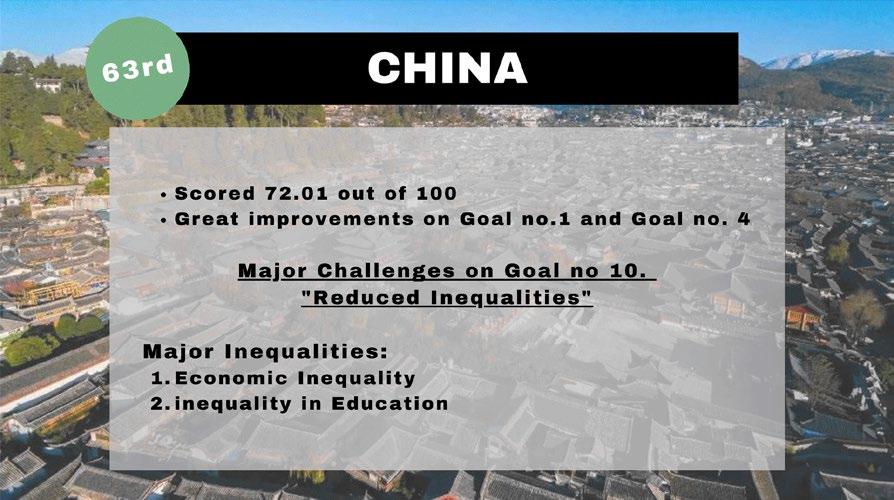


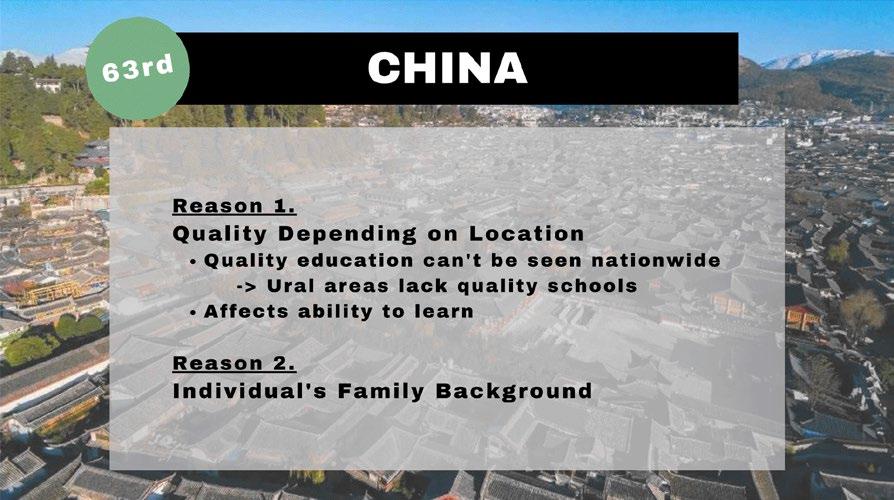
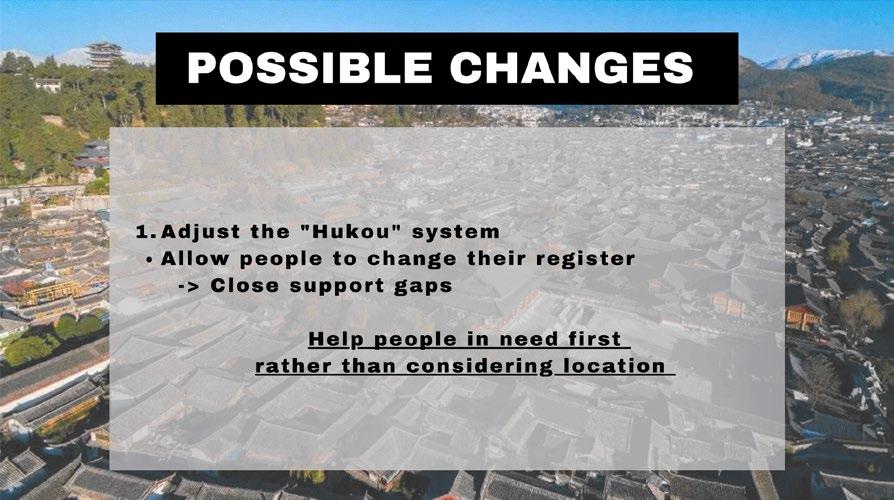

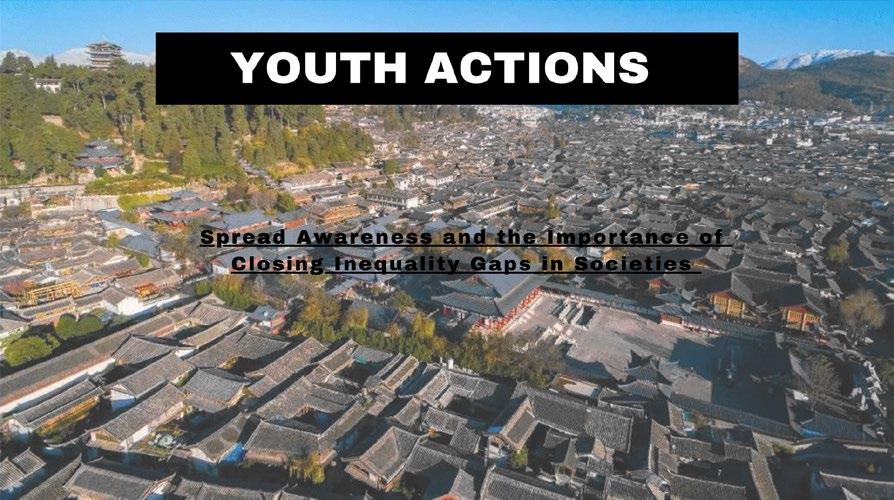



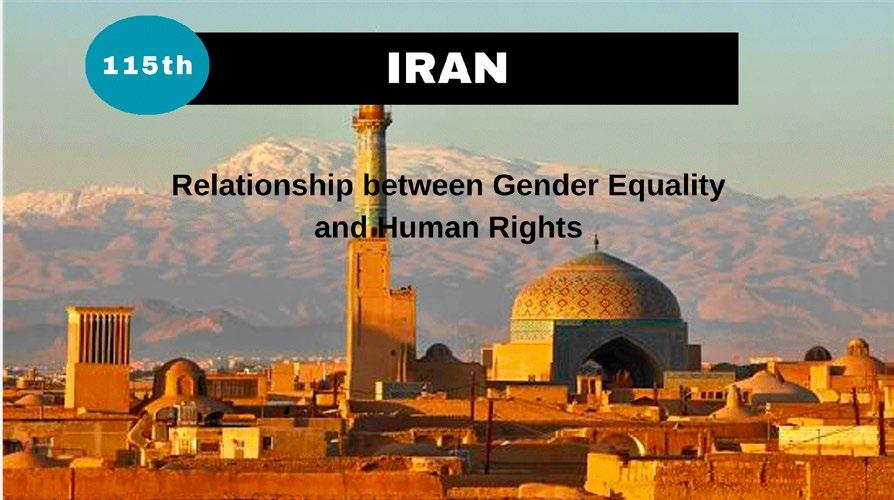


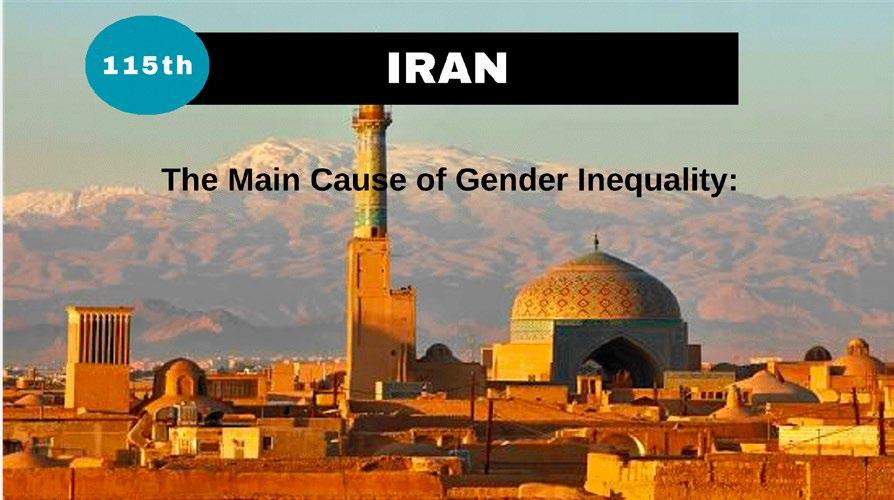
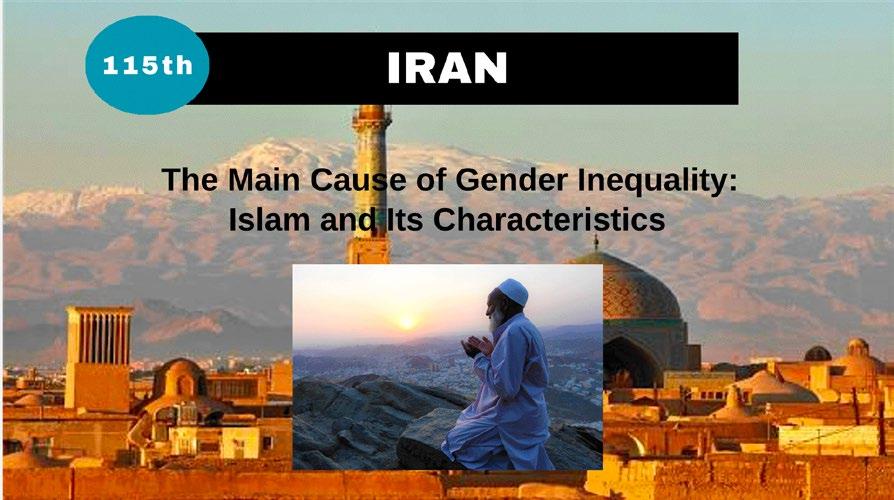
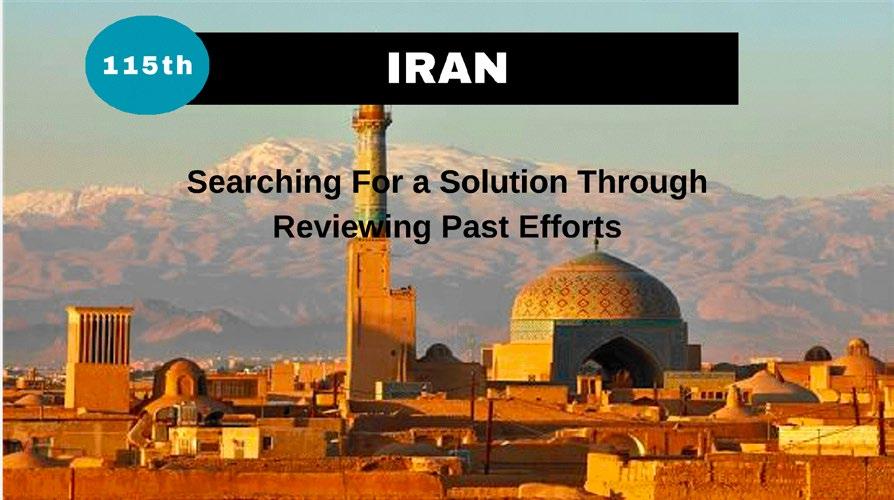
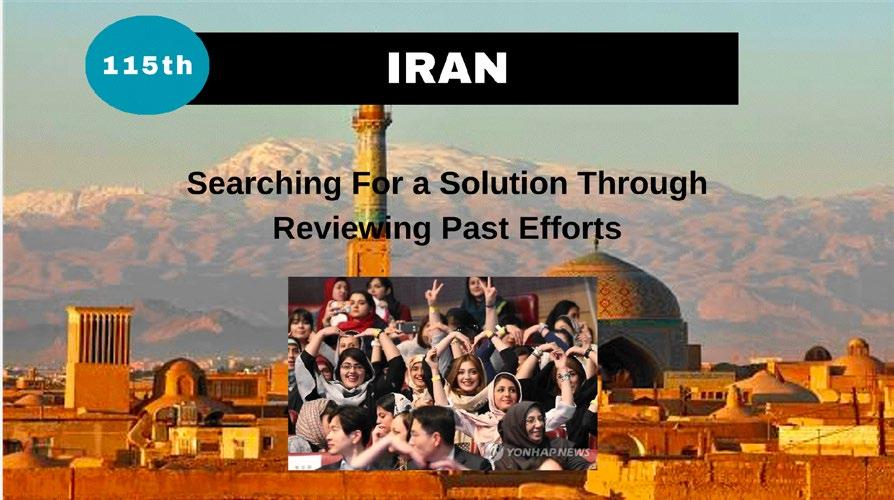

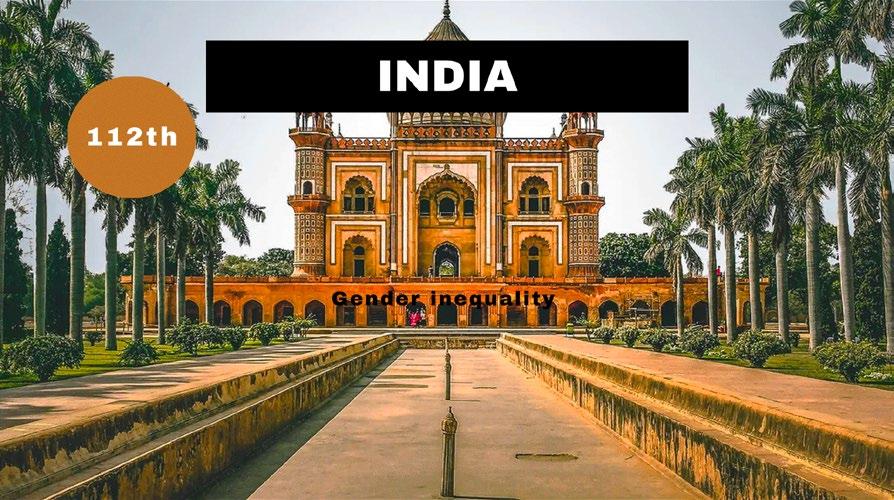
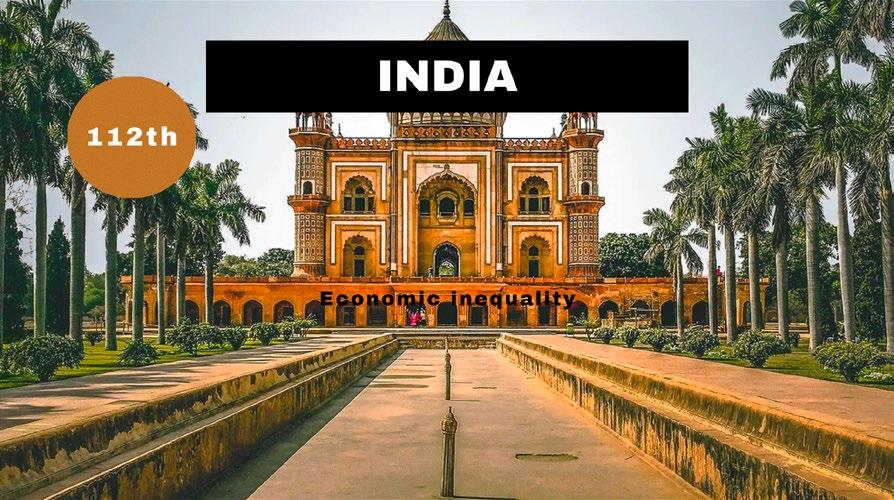








I. Introduction
A. SDG 16
B. The Effects of War on Children
A. Children in Sudan
B. Children in Ukraine
A. Actions of the UN
B. Actions of NGOs
C. Actions of the Youth
A. SDG 16
The Sustainable Development Goals (SDGs), an agenda resolved by the 70th session of the United Nations General Assembly in 2015 to be achieved by 2030, are 17 collective goals for humanity to realize the ideals of sustainable development.

The Sustainable Development Goals, also known as the 2030 Agenda for Sustainable Development, are 17 goals and 169 targets with the slogan, "Leave no one behind," that set the direction for humanity in five areas: people, planet, prosperity, peace, and partnership.
Among them, Goal 16 is to promote peaceful and inclusive societies for sustainable development at all levels. Successful implementation of this goal requires ongoing solutions to combat corruption, promote the rule of law, and ensure inclusive decision-making. The sixteenth goal seeks to significantly reduce all forms of violence and crime that threaten the foundations of peace, including discriminatory laws and practices, as well as abuse, exploitation, human trafficking, and illicit financial and arms trade.
There are still many forms of conflict in the world, and the victims of conflict are adversely affected regardless of generation, gender, or class. Children are no exception. Mentally and physically immature children are more affected and vulnerable to war.
The first problem is the absence of caregivers.
War often results in the absence of parents (caregivers), which is devastating for children who have not achieved emotional independence. War can cause these problems for a child's caregiver. The first problem is the death of the caregiver. It can also cause caregivers to become emotionally anxious, depressed, and overly focused on earning a living. For these reasons, children during war are in need of a lot of emotional attention,
They struggle to form emotional attachments at a time when they should be gaining emotional independence from their parents' love. There is also the issue of lack of access to education during war. War can make it difficult for children to access education. Children who lose access to education violate their right to education as children. In addition, children who are disabled by war may lose limbs, vision, or cognitive abilities, as well as opportunities for schooling and socialization.
War creates refugee children. Children who are forcibly displaced and become refugees may have to wait years for normal life to resume in miserable and unhealthy conditions. Children's health deteriorates during war. Children also suffer a variety of war injuries during war. Children are particularly vulnerable to landmines and suffer many landmine injuries. Thousands of children are injured by landmines every year. When they are injured, they often lack access to rehabilitation services. During war, conditions for maintaining child health deteriorate, including nutrition, water safety, sanitation, housing, and access to health services. Population displacement can lead to loss of immunity to disease vectors. Refugee children are also particularly vulnerable to malnutrition and infectious diseases.
During war, children suffer emotional distress as well. exposed to war are also constantly exposed to frightening situations, which can be very frightening for emotionally immature children. The severe loss and disruption of life increases the incidence of depression and anxiety in war-affected children. These effects are prolonged and deepened as the war continues.

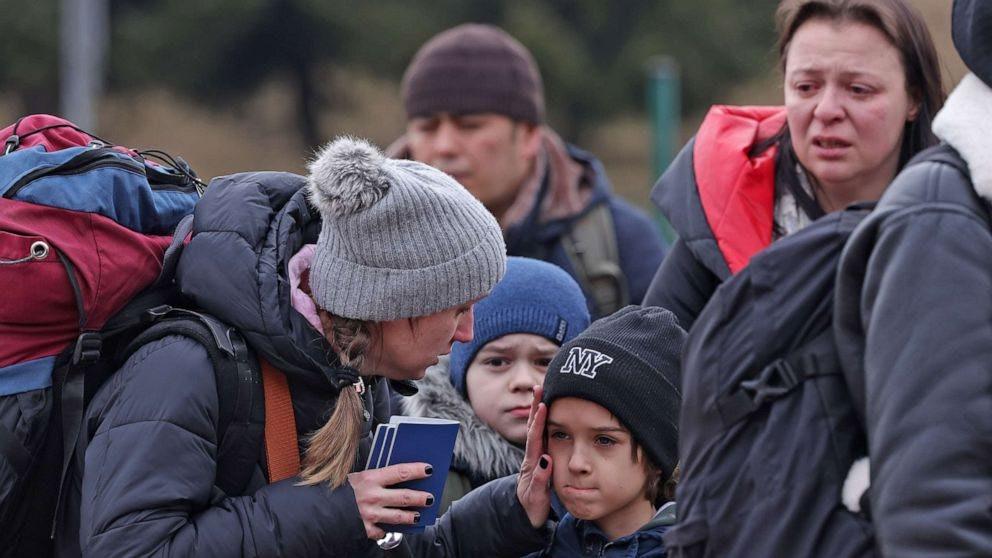
The longer this depression lasts, the more doubt and self-doubt a child may have about the world around them, leading to emotional instability.
There's also the problem of child soldiers. As wars continue, immature children are recruited to fight. According to figures verified by the United Nations, the number of boys and girls recruited as child soldiers in conflict zones has increased from around 4,000 in 2005 to 7,734 in 2017. In Nigeria and Cameroon, the extremist militant group Boko Haram has used at least 135 children in suicide bombings

A. Children in Sudan
“Every war is a war against children” was something Eglantyne Jebb, the founder of “Save the Children” once said. The war in Sudan that is currently happening is demonstrating how this quote says something that is absolutely true.
War broke out in Sudan on April 15 2023. It was an armed conflict between the Rapid Support Forces (RSF), a powerful paramilitary group, and the Sudanese Armed Forces (SAF). In this horrific war that killed approximately 2,800 people across Sudan, children were the ones who were the most gravely affected. After the 100 days of fighting, at least 435 children were killed and another 2,000 were injured.
Children in West and Central Darfur (region in Sudan), were particularly impacted due to the active fighting, looting of humanitarian supplies and facilities there. Supplies like vaccines were looted by soldiers so children were at higher risks of getting diseases such as Measles and Malaria, and the lack of electricity, oxygen and functioning incubators had, for a hospital, led to the deaths of six children in just a single month. Children in war-torn Sudan are also victims of malnutrition. Around 700,000 of them are at risk of severe acute malnutrition and this is because war gets in the way of agricultural production due to soldiers deliberately destroying civilian farms, infrastructure, and livestock and looting food supplies. Additionally, children suffer severe injuries that can lead to amputation, blindness, and damage to internal organs because of landmines, bombs, or other weapons.
Yet, Sudanese children are not only suffering from physical impacts of the war, they also experience psychological damage and develop mental illnesses such as PTSD, depression, and anxiety from seeing violent and highly traumatic events. Unfortunately, the war in Sudan has also dervied chidren of their childhood since many of them are manipulated into being child soldiers and are encouraged to be violent and serve as combatants, suicide bombers, or spies to military groups. Child soldiers experience all the same negative impacts of the war and sometimes may even experience worse symptoms.
SDG 16 aims for peace and reduced violence and death rates everywhere. Yet, the atrocities happening in Sudan are completely going against the goals of SDG 16 since with children being negatively impacted by and child soldiers playing an active role in wars, peace will not be achieved and death rates will grow at an exponential rate.

Children in Sudan are physically and mentally impacted by the war and some are also serving as soldiers. Such atrocities, that are happening in Sudan, are going against SDG 16 which aims for peace and security.
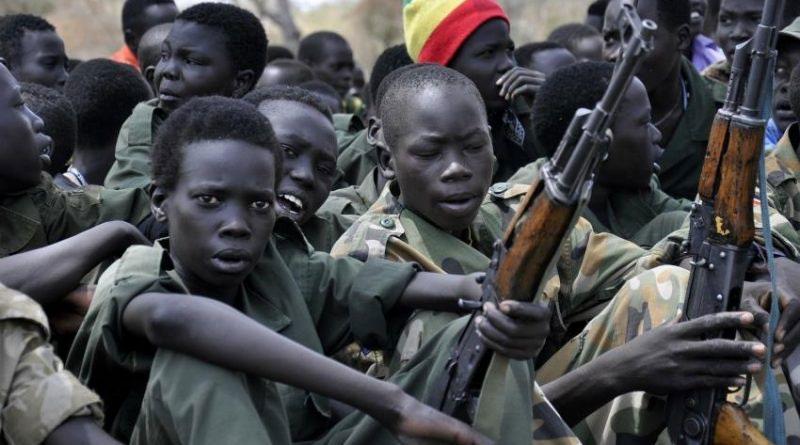
On February 24th, the world watched in shock and numbed silence as gathered Russian troops swarmed into Ukraine and declared war. Nearly a year and a half has passed since, and its subsequent catastrophes have been widely reported through mass media. Various sectors, including the economic, social, diplomatic, and environmental, have met detrimental consequences, but the impacts on children have equal significance, if not more so. Especially in an active war situation, children become vulnerable targets to all forms of damage, and both sides enter a similar circumstance. Basic rights are at stake, and the stage of life considered to be most long-lasting and significant is crumbled by the violence to attain power.
The Russia-Ukraine War is a manifestation of geopolitical rivalry that has led to a full-scale invasion. With its first seeds planted in 2013, the start was the Russian government’s initiative to intentionally plan a one-sided pact with the European Union to seize Crimea land and Eastern Ukraine. Coming from historical, cultural, and strategic factors, including a proRussia leader of Ukraine, the initial concerns grew and fueled Russia’s intervention. Ever since, catastrophes are continuing, with Russia’s ally troops continuing their efforts to attain lands of Ukraine. Consequently, countless war crimes were recorded, alongside two of the United Nations resolutions being neglected. With currently no end in sight, organizations including the NATO (North Atlantic Treaty Organization), United Nations, and NGOs are thriving to tackle the dire circumstances.
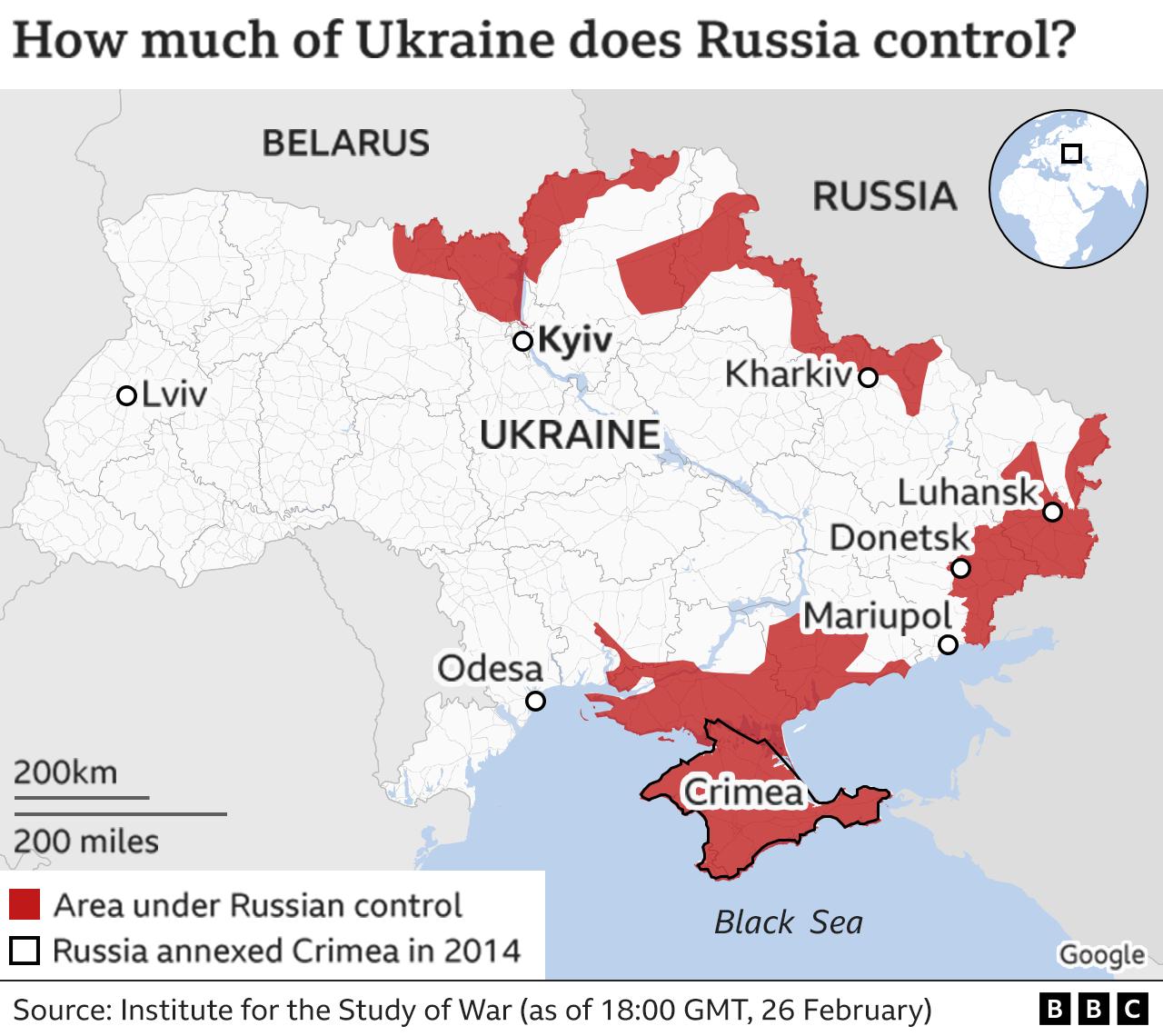
Returning back, actions of greed by a single nation have been and continue to cause irrevocable damage, especially to children. Again, the significance of the youth stage in life is widely known, starting from education to physical and mental growth. As these few years determine an individual’s character and are the preparation stage for future society, the importance is evident. This bi-national conflict hinders such development, returning as a massive burden for not only children but also their families and the targeted nation. In numbers, 535 children have been killed and 1,047 injured to this date, and the numbers are still growing. The International Criminal Court (ICC) issued an arrest warrant against Russian President Vladimir Putin and Lvova-Belova, accusing them of illegally and coercively deporting children to Ukraine for uncertain reasons. Not only was this a sudden separation from an existing background and family, the hundreds of children were displaced into completely new environments within Russian territory. Moreover, it is the children who are most vulnerable in such circumstances. Not only is their education limited without an end in sight, but a lack of resources also leads to a regression in overall development.
Particularly present on Ukraine’s side, many have been internally and externally displaced, often alone. This has also increased their exposure to abuse, sexual exploitation, human trafficking, and other crimes as a secondary consequence. Even in mental health, an estimated 1.5 million children are at risk of


depression, anxiety, post-traumatic stress disorder, and other health issues with potential long-term effects and implications.
The Russia-Ukraine War has robbed children of their childhood and has left unbearable scars and trauma lasting for a lifetime. Fundamental rights of freedom have been disregarded, and their past communities and environments have become devastated. In these dire circumstances, recovery is more crucial than ever.

Together with the Polish Red Cross society, the United Nations provided bedding, toiletries, mental health support, and other emergency assistance to people crossing borders. The UN is working with the Polish Migration Forum, providing children living in war zones with information about their rights and available support, and providing in-person and remote mental health support from trained psychologists. Additionally, Polish Center for International Aid (PCPM) connected Ukrainian teachers with jobs in Poland, providing financial assistance to ensure their salaries.
In South Sudan, UNICEF has been working to release and reintegrate child soldiers back into their communities. They have provided vocational training and education to help these children build a new life. UNICEF has also established temporary learning spaces to ensure that children have access to education even in displacement. Strive to dismantle systematic sexual abuse and provide recovery services. Protecting against recruitment and facilitating the release of child soldiers and their reintegration into the community, UNICEF supports millions of children in areas affected by landmines and explosive weapons through prevention and survivor support interventions to ensure that all warring parties comply with their obligations under international law. An action that epitomizes these points is a call for an immediate end to violations against children and targeted attacks on civilian infrastructure, including schools, hospitals, and water sources. Another example is in the Rohingya crisis, the UNHCR's tireless efforts were exemplified through the creation of secure spaces and schools in Bangladesh's sprawling refugee camps, offering Rohingya children not only a chance to learn but also a protective environment shielded from the violence and persecution they had escaped.
Even during the Russia-Ukraine conflict, UNHCR's dedication persisted as it extended vital aid to internally displaced children and families, ensuring access to shelter, education, and healthcare in the face of adversity.
On the other hand, alongside such continuous efforts and progress from the United Nations, other stakeholders, including NGOs (Non-Governmental Organizations) utilize their characteristics to maximize the support for nations at war, especially for children. With each specific organization serving a distinct purpose, they are working for the identical objective of providing aid, support, and assistance for individuals in need.
Cases of such action can be easily found in contemporary conflicts. In the Russia-Ukrainian War, for instance, an NGO, Station Kharviv, a volunteer initiative founded in 2014 in response to Russian aggression, plays a crucial role. With a primary mission to support internally displaced people to reintegrate into new communities with proper resources, the aid has reached 100,000 people by 2022. Moreover, The International Rescue Committee (IRC) also works with Ukrainian partners to support evacuation efforts for women and children within Ukraine, providing psychological care and delivering food, cash, and other essentials to displaced families.
Meanwhile, major organizations that epitomize the origin and meaning of a humanitarian NGO continue to provide an easily recognizable change to society. Save The Children, a leading international organization for children established Child Friendly Spaces (CFS) in refugee camps during the Syrian Civil War. Focusing on providing a safe environment for children to socialize, learn, and receive mental support, these parts assist children in coping with the repercussions. Besides this project, basic resources were delivered as well, including emergency medical care, nutrition, and education. Similarly, War Child has been active in tackling the conflict and violence in the Democratic Republic of Congo. Their primary accomplishments include psychosocial support and education to former child soldiers, setting up a path to reintegrate back into society. Moreover, displaced girls have been empowered and protected, especially from exploitation and abuse.
It is not only the United Nations putting in effort to support the children harmed by war. Only through the collective efforts of various stakeholders, including the hundreds to thousands of NGOs, can change be made.
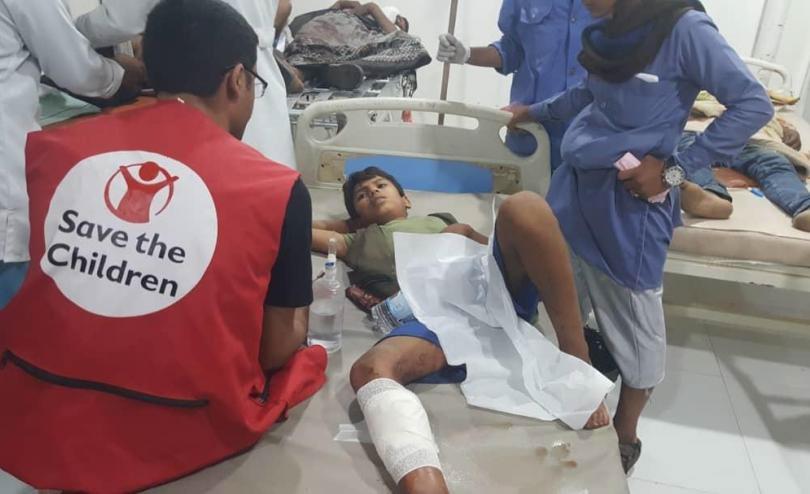
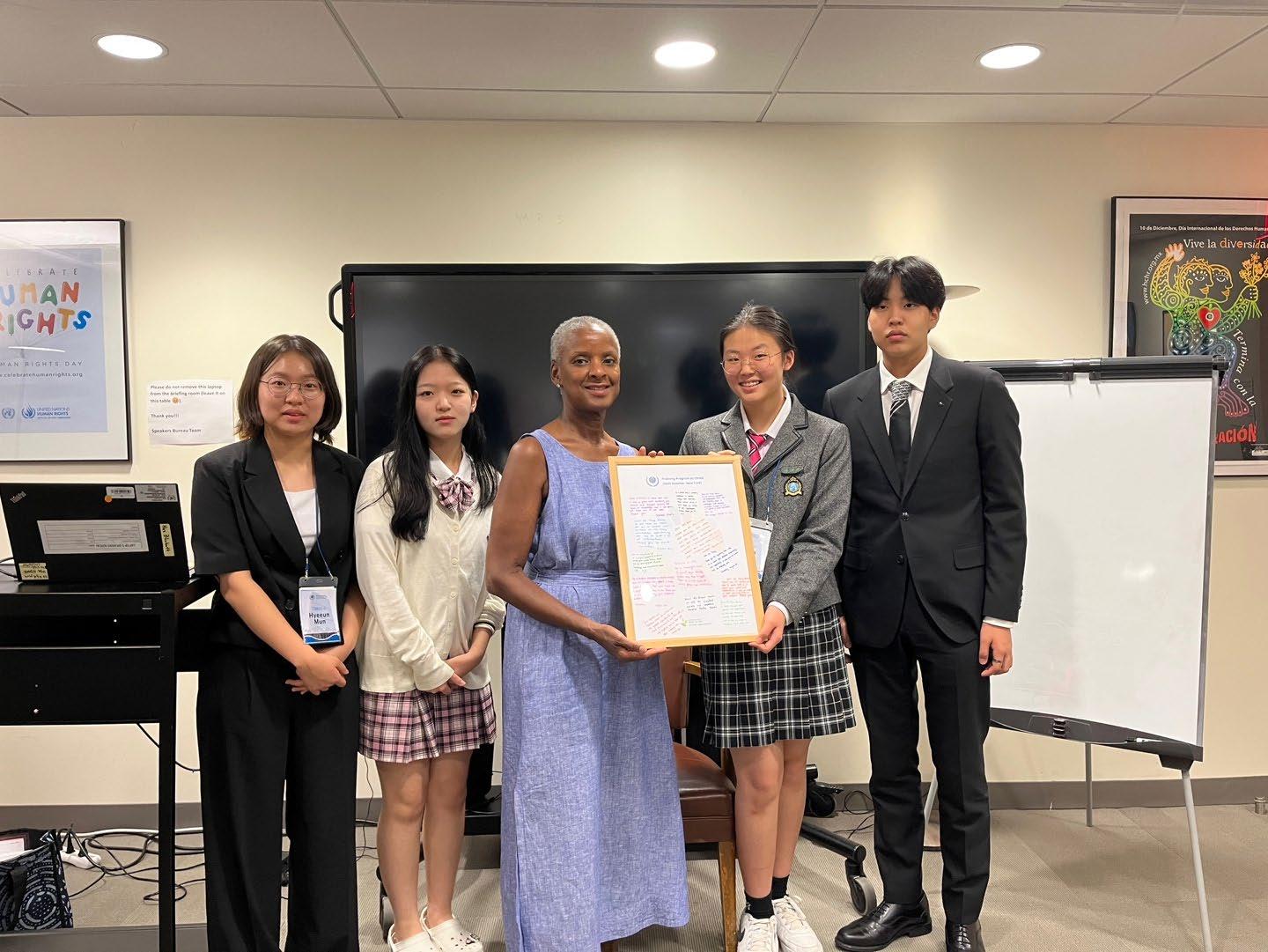

John F. Kennedy once said that “Children are the world’s most valuable resource and its best hope for the future.” As this quote states, children provide hope for the future. They are not inferior to adults but are an equally important part of the global society. When children come together to fight against an issue, their voices are powerful and undeniable for governments. Also, children have an important role
in SDG 17, Partnership for the Goals. So how can children show partnership for the goal to solve the issue of children impacted by war, that is an issue related to SDG 16?

First, social media applications such as Instagram and Tiktok can be used to easily and effectively spread awareness about children in war torn areas. One simple post, for example, an image of a child in South Sudan who is suffering from injuries caused by the war, and a description on where this photo was taken and who is featured in it, and a reminder to donate can make a huge difference and provide financial aid to a lot of children. Or, a hashtag spreading awareness about the need for peace and aid for children living in war torn areas can be made and may eventually be shared by large groups of people to become effective and ubiquitous on social media. For example, the #blm and #metoo movement has proved hashtags and social media posts can be used for activism and addressing certain issues.
Second, students can make clubs at school that are related to helping children in war by organizing fundraising programs to raise money and donate. A simple action can be taken, such as selling used books or tickets to school events, so that money can be raised to go to big world organizations that can use it for the better good and provide impactful help for children living in war torn areas. An example of such world organizations is UNICEF. For every dollar donated to UNICEF, 90% goes to helping children, and with such funding, UNICEF, over the last 3 years, provided help to 47 million children impacted by conflicts by sending education materials that they can use to get back their normal child life.
Third, students can participate in academic programs that promote disarmament. Disarmament is a crucial thing that is needed in order to reduce the negative impacts, such as deaths, that wars have on children.That is why, Youth For Disarmament programs, that hosts events, such as pro- disarmament marathons and music competitions, that teenagers can participate in is a great way for young people to do something impactful to help children being impacted by in conflicts.
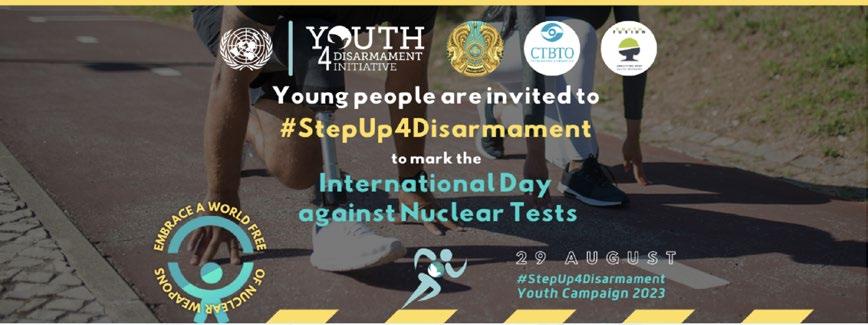
The young generation is the future of this world. Hence, by using social media platforms, school clubs, and UN generated programs children can start taking action to help solve the issue of children at war.

Throughout history, children have been negatively impacted by wars. It is so worrying that certain irresponsible decisions leaders make can come back to children resulting in thousands of casualties. Even today, the world is experiencing conflicts such as the war in Ukraine and the war in Sudan that has physically and psychologically affected many children. But the world is not without hope, the United Nations and other world organizations have been working hard to make programs that help children during and after war so that they can get their normal childhood back. Additionally, there are easy but impactful actions that children and teenagers can take to contribute to the global effort. To conclude, children in war areas are experiencing horrible things that no human being in the 21st century should experience, so through constant awareness, action, and focus on this issue, hopefully in the near future, all children, regardless of where they live, can live a happy and healthy life.
Ali Mahmoud Ali, Elham. “Sudan Situation Update: June 2023 | Conflict Intensifies Following the Breakdown of Jeddah Talks.” ACLED, 23 June 2023, https://acleddata.com/2023/06/23/sudan-situationupdate-june-2023-conflict-intensifies-following-the-breakdown-of-jeddah-talks/
Barber, Harriet. “Scores of Children Killed in Sudan’s 100 Days of War.” The Telegraph, 24 July 2023, https://www.telegraph.co.uk/global-health/terror-and-security/sudan-war-400-child-deaths-first-100-daysof-conflict
How Does War Get in Way of Agricultural Production - Google Search. https://www.google.com/search?q=how+does+war+get+in+way+of+agricultural+production&rlz=1C5CH FA_enKR1039KR1039&oq=how+does+war+get+in+way+of+agricultural+production&gs_lcrp=EgZjaHJ vbWUyBggAEEUYOTIHCAEQIRigATIHCAIQIRigATIHCAMQIRirAjIHCAQQIRirAtIBCDIxMjNqM Wo5qAIAsAIA&sourceid=chrome&ie=UTF-8. Accessed 8 Oct. 2023.
“War Crimes and Civilian Suffering in Sudan.” Amnesty International, 2 Aug. 2023, https://www.amnesty.org/en/latest/news/2023/08/sudan-war-crimes-rampant-as-civilians-killed-in-bothdeliberate-and-indiscriminate-attacks-new-report/.
Over One Million Children Newly Displaced in Two Months as Sudan Faces Escalating Conflict. 7 Aug. 2023, https://www.unicef.org/press-releases/over-one-million-children-newly-displaced-two-monthssudan-faces-escalating-conflict.
Kourdi, Eyad. “14 Million Children in Sudan Are in Dire Need of Humanitarian Support, Says UNICEF | CNN.” CNN, 4 Aug. 2023, https://www.cnn.com/2023/08/04/africa/sudan-children-unicef-intlafr/index.html.
“Has Putin’s War Failed and What Does Russia Want from Ukraine?” BBC News, 24 Feb. 2023, https://www.bbc.com/news/world-europe-56720589.
“Ukraine Don Claim Control of Kharkiv Afta Russian Attack - BBC News Pidgin.” BBC News Pidgin, 27 Feb. 2022, https://www.bbc.com/pidgin/60547606.
Nichols, Michelle. “Russian Charged with War Crimes May Brief U.N. Security Council.” Reuters, 7 Aug. 2023, https://www.reuters.com/world/europe/russian-charged-with-war-crimes-may-brief-un-securitycouncil-2023-04-03/
“War in Ukraine: Support for Children and Families.” UNICEF3D9EA723-DA22-4F94-B00E91AA14D9685C@1x, 17 July 2023, https://www.unicef.org/emergencies/war-ukraine-pose-immediatethreat-children
Vikhrov, Natalie. “For Children Living on the World’s Powder Keg, Russia’s Invasion Is Only Their Latest Ordeal.” ABC News, 5 Mar. 2022,
Prokscha, Antonio. “Helping in Times of War: How Ukrainian NGOs Built a Support Network.” GMFUS, 22 Apr. 2022, https://www.gmfus.org/news/helping-times-war-how-ukrainian-ngos-built-support-network
Save. “Save the Children on UN Report on Children in Armed Conflict | Save the Children International.” Save the Children International, 30 July 2019, www.savethechildren.net/news/save-children-un-reportchildren-armed-conflict. Accessed 9 Aug. 2023.
World Association of Non-Governmental Organizations - NGO Resources. https://www.wango.org/resources.aspx?section=ukraine. Accessed 8 Sept. 2023.




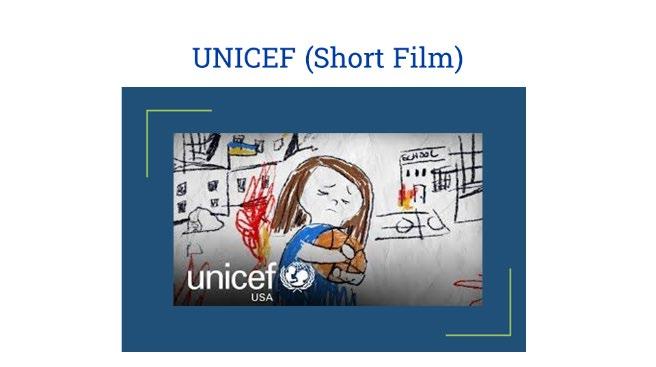


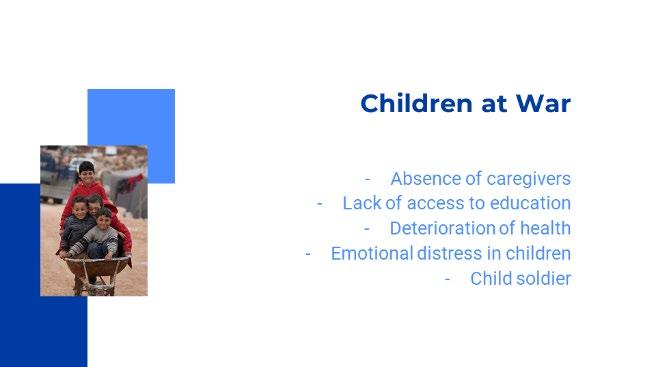

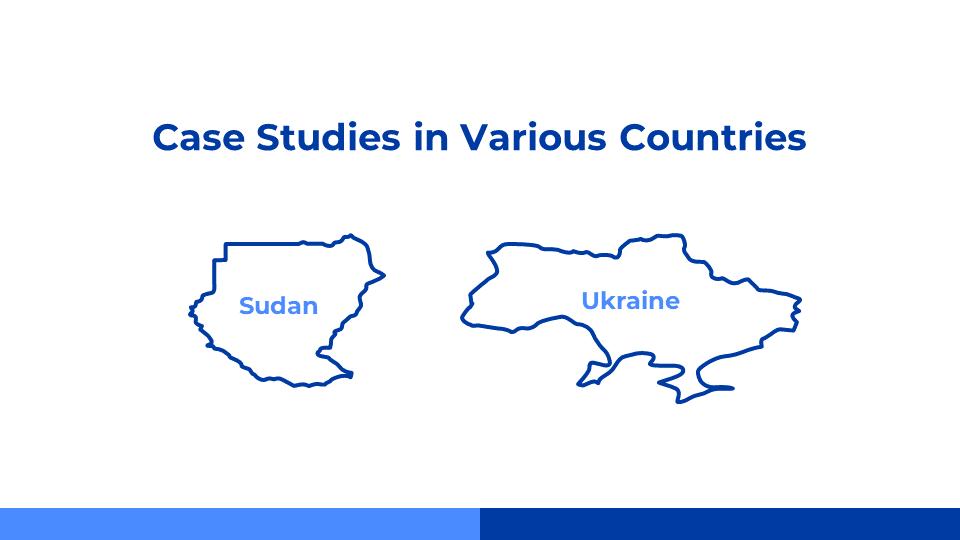

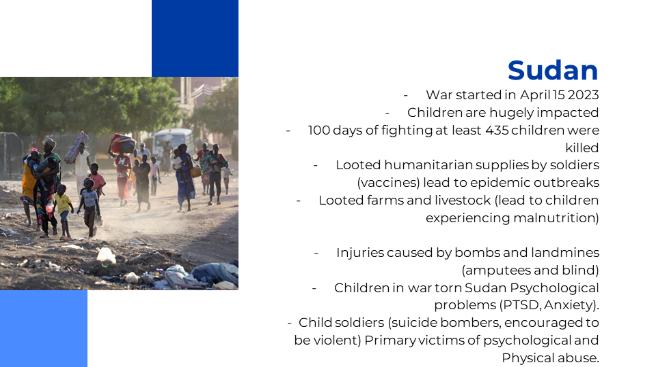
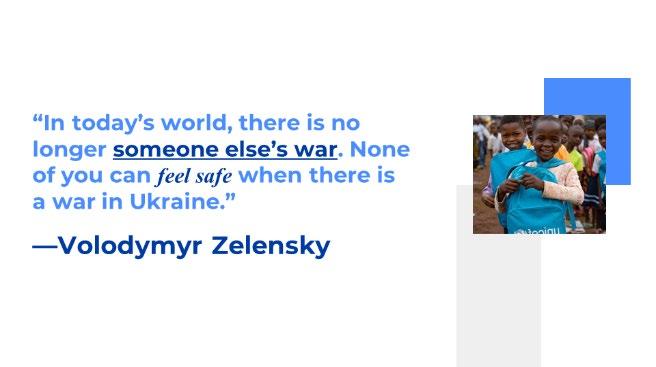


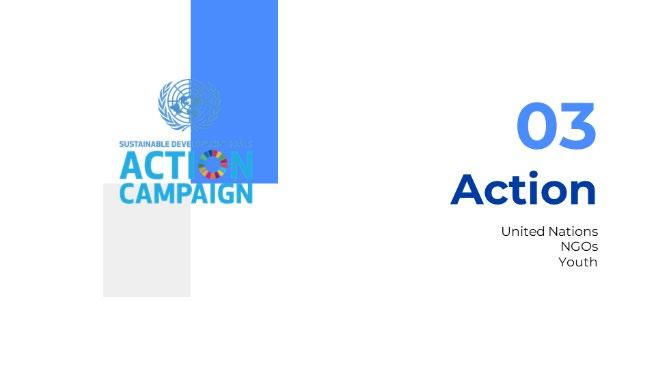

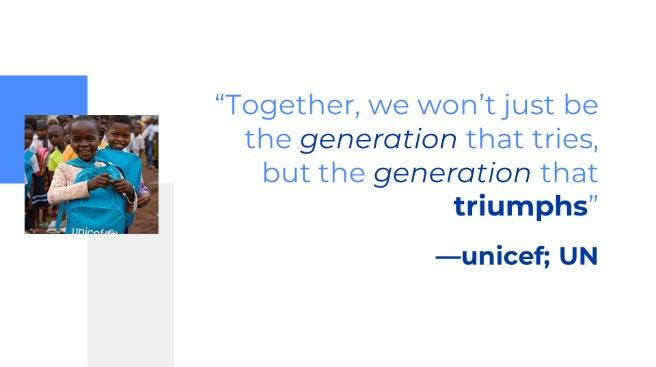
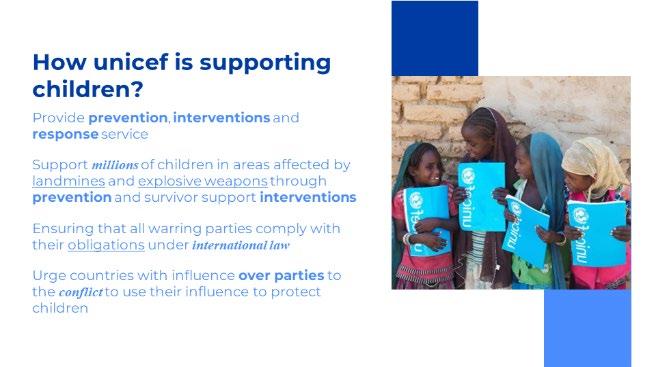


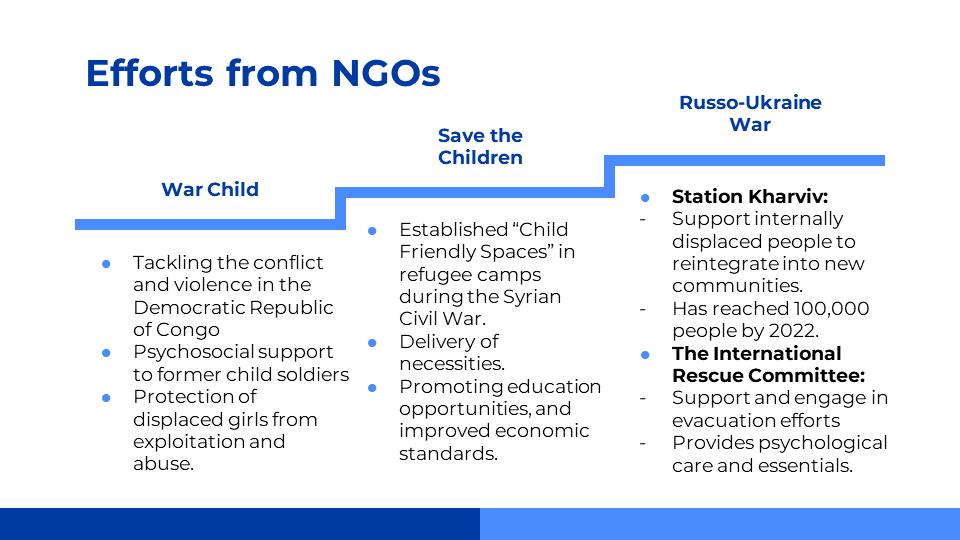
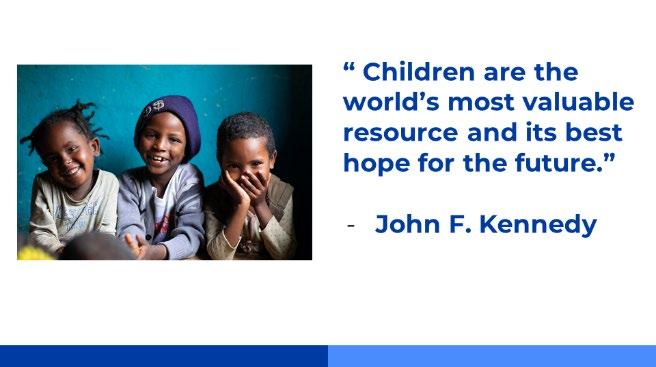


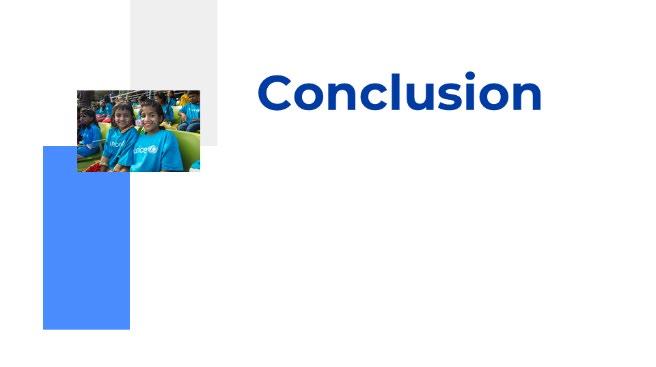

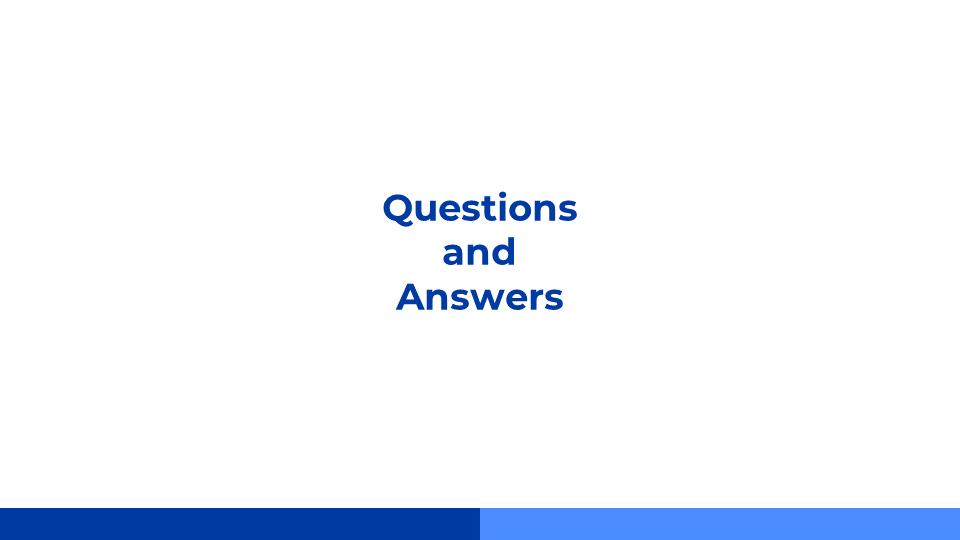

At its deepest essence, war is a manifestation of humanity's most primal and intricate dynamics both a reflection and distortion of our aspirations, fears, and complexities. It is an intricate tapestry woven from the threads of power, ideology, and the visceral nature of our existence. War is a multifaceted phenomenon that transcends mere physical conflict, extending into the realms of psychology, culture, and morality.
War develops as a complex dance between the pursuit of individual and group objectives, frequently concealed by an ideology or a pressing need. It encapsulates the paradoxical interaction between creation and destruction where societies are developed and dismantled, persons are elevated and put to death, and fates are entwined in a complex web of causation. Territorial expansion, resource appropriation, ideological dominance, self-defense, and occasionally the unrelenting advance of historical forces are among the many reasons for conflict that are as varied as mankind itself.
The quote above is by Dwight D. Eisenhower, who was a five-star general in the United States Army during World War II and later served as the 34th President of the United States. Reflecting a sobering and realistic view of the costs of war, it emphasizes the notion that, despite the romanticization or glorification of battles and conflicts by some, the actual cost of warfare is the death and suffering of all parties involved, including soldiers and civilians. Eisenhower, with first-hand experience with the harsh realities of war, is emphasizing the massive cost that accompanies any military conflict. In other words, it is a cautionary statement that emphasizes the need to find peaceful solutions wherever feasible and urges prudence before participating in a violent confrontation.
War is fundamentally a collision of narratives narratives that establish identities, draw lines between groups, and provide justification for conduct. These stories turn into a haven for the distorting of history, the maintenance of prejudices, and the distorting of reality. They fuel animosity and mobilize the populace into confrontation, frequently obfuscating the differences between right and wrong, just and unjust.
It is impossible to live a life in our society without the help of this massive intergovernmental organization with this logo, the United Nations. Starting from facilitating dialogue and diplomacy for international cooperation, peace, and security, its influence reaches far out to even handling satellites,

“There is no glory in battle worth the blood it costs.”
an object that allows us to communicate using our devices every day. Consisting of six principal organs, the United Nations comprises 193 member states and serves as a platform for all parties. Having said that, it is most important to recognize the connection between the aftermath of war and the UN.

The interaction between global peace, development, and conflict avoidance is highlighted by the link between the United Nations, the Sustainable Development Goals (SDGs), and war.
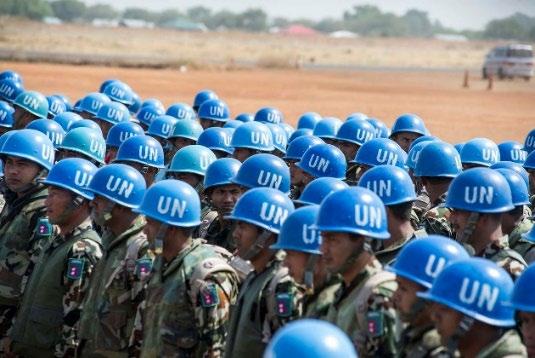
The SDGs, which include 17 interrelated goals, offer a blueprint for building a fair, equitable, and sustainable world by 2030. Armed conflicts and their aftermath pose serious difficulties within this context. The detrimental effects of war directly obstruct the achievement of most SDGs, mainly including “No Poverty,” “Quality Education,” “Decent Work and Economic Growth,” and “Peace, Justice, and Strong Institutions.”

In the same context, pursuing SDGs can help to diffuse and avert violent conflicts. Efforts to avoid war and build enduring peace are consistent with addressing economic inequalities, improving education, advancing gender equality, guaranteeing sustainable economic growth, and boosting international collaboration. The UN plays a crucial role in post-conflict situations by mediating disputes, delivering humanitarian help, and promoting sustainable development. The UN connects its commitment to global stability with the broader objectives of the SDGs by acknowledging the interdependence of peace and development, seeking to build a world where human welfare and global balance are important. Moreover, direct support regarding security is delivered by their peacekeepers, with the aim of maintaining international safety.
War, a lamentable manifestation of human conflict, begets multifaceted consequences that cascade across every facet of society, altering the very fabric of existence. Its repercussions resonate far beyond the battleground, permeating humanitarian/social, economic, political, psychological, and cultural realms, leaving a legacy that endures long after the fighting ceases. Having said that, starting from this part of the report, I will be diving into these 5 specific sectors that suffer from the ramifications of war’s multifaceted impact.
The humanitarian and social consequences of war are a poignant testament to the profound depths of suffering and upheaval that human conflict inflicts upon societies, leaving behind scars that endure long after the battles have ceased. At the core of these effects is a tragic story that encompasses displacement, fatalities, destroyed communities, and the degradation of human dignity.
Mass civilian relocation is the most significant of these effects, serving as a stark reminder of how disruptive war is all the time. As people flee for their lives and enter dangerous refugee camps or foreign countries in search of protection, families are split apart, livelihoods are destroyed, and homes are abandoned. As social links are broken, communities lose their cohesiveness, and the familiar environment is transformed into an unfamiliar one filled with uncertainty. This uprooting encourages a cycle of misery that frequently lasts generations and acts as a somber reminder of the brittleness of stability.
The tragic loss of life in battle, whether it be military or civilian, is beyond comprehension. Families left behind by lives lost in the midst of conflict struggle to fill unfillable holes. The deaths, however, are not limited to the area of the conflict; they echo across society as a whole, leaving marks on the collective memory and influencing views toward fighting for years. As innocent individuals become collateral damage and lose their lives as a result of the harsh calculations of war, the indiscriminate nature of conflict adds an even more serious dimension.
Equally significant are the societal ramifications. Women and children are frequently disproportionately impacted by changes in gender dynamics because they experience more violence, displacement, and exploitation. The seeds of anger and revenge germinate in favorable soil, feeding generations-long conflict cycles. Trust, the glue holding society together, is eroding, and the basic foundation of shared beliefs is being put to the test.
The process of recovery and rebuilding is an enormous undertaking following a conflict. Communities must be rebuilt, institutions must be repaired, and the social fabric must be re-established. This requires a team effort that cuts across party lines. A sincere commitment to constructing a future that emphasizes peace, empathy, and the sanctity of life is required in order to acknowledge the aftereffects of conflict. By upholding this commitment, mankind aims to rebuild the humanity that war so frequently threatens to annihilate from the rubble of conflict and provide the groundwork for resilience.
War casts a long-lasting and pernicious impact on economies, creating a complex and wide-ranging web of economic effects that infiltrate civilizations to their core. Beyond the battlefield, the toll taken on money, resources, infrastructure, and human capital creates a narrative of upheaval that will change economic landscapes for future generations.
The most significant of these effects is the willful destruction of infrastructure, which is a sign of future economic decline. Under the unrelenting force of battle, skyscrapers, industries, and vital transit networks disintegrate, wiping decades of advancement in an instant. The strands of devastation unravel the sophisticated web that supports economic life, spreading well beyond the obvious debris to include fractured supply systems, ruptured trading routes, and damaged communication networks.
Resource scarcity also serves as a clear reminder of the price that can never be recovered. As agricultural areas lay fallow, energy supplies shrink, and raw resources stay trapped within war-torn regions, necessities for daily living become rarefied gems. The lack of these resources leads to price increases, inflation, and economic instability, exacerbating the difficulties associated with post-conflict rehabilitation.
Moving in time, in the aftermath of conflict, the difficulties of repair and recovery loom big after a battle. Significant expenditures and extensive planning are necessary for infrastructure reconstruction and the restoration of economic institutions. These efforts are frequently made more difficult by the absence of stability and persistent conflict dynamics, leading to prolonged economic vulnerability.

“History more often records the brilliant successes and spectacular defeats of contending forces than the effect of war on the common people.”
Politically, war sets off a chain reaction of effects that resonate through the halls of power, changing the dynamics of diplomacy, government, and world order. Political landscapes are irreparably changed in the midst of the mayhem of the battlefield, creating stories of power changes, ideological upheavals, and the delicate dance between the victor and the defeated.
The upheaval of long-standing political institutions is at the core of the war's aftermath. Conflict causes institutions that formerly defended stability to fall apart, leaving power voids that can be taken advantage of by opportunistic factions or extreme ideologies. Emerging leaders have influence as they build new political paradigms, either consolidating power or splintering nations along the lines of identity and ideology, either spurred by military victories or populist enthusiasm.
Beyond national boundaries, war's political repercussions may be seen in the rebalancing of world power balances. As alliances break down and geopolitical realignments take place, hegemonic orders may change. When the delicate balance that regulates international relations is disrupted, it allows emerging nations or regional actors to exercise their influence and perhaps change the direction of global affairs.
Finally, a culture of political revenge is frequently produced by the wounds of war as well, as memories of pain and loss feed cycles of retaliation. Once latent, ethnic and sectarian differences can be used as a weapon to further political goals, prolonging instability and impeding the formation of a unified administration. This intensifies political division and widens the cracks in civilizations trying to mend them.
Beyond the visible scars, the psychological wounds run deep, forging a narrative of trauma, resilience, and the delicate journey toward healing.
Trauma, a permanent legacy that transcends time and geography, is at the root of the psychological fallout from war. Both soldiers and civilians experience the horrors of war, witnessing unspeakable bloodshed, suffering, and brutality. This exposure leaves mental imprints of suffering, which frequently trigger PTSD, depression, anxiety, and a wide range of other psychiatric problems. The sounds of explosions, the screams of the injured, and the eerie recollections of lost friends form a constant background to daily life.
In addition, a terrifying companion to tragedy, survivor's remorse, casts a shadow that won't disappear. Those who survive war typically struggle with guilt for their survival when others do not. An individual's life, relationships, and sense of self are frequently shaped by the psychological load of loss and survivor's guilt, which endures throughout time.
Children, particularly, bear a unique burden, being forced to traverse a landscape of dread, uncertainty, and broken attachment ties due to the disruption of their sense of routine, seeing violence, and being displaced from their homes. These repercussions influence attitudes, behavior, and mental health far into adulthood.
Lastly, the path to recovery after a dispute is a sensitive one that is frequently accompanied by stigma, humiliation, and a protracted road to recovery. As countries struggle to restore their physical infrastructures before addressing the intangible scars of war, mental health services are frequently in short supply. As societal norms and misinformation prolong suffering, overcoming the stigma of getting care for psychological wounds becomes even more challenging.

The cultural consequences of war, though less tangible than the physical destruction it leaves in its wake, are no less profound. Wars, fueled by political, economic, and ideological motivations, have the power to reshape and even obliterate the intricate tapestry of human heritage, traditions, and identities that define civilizations.
The destruction of both material and intangible legacy is at the heart of war's cultural aftermath. Cultural monuments, which serve as archives of history and identity, fall victim to the ravages of war. The tangible ties to earlier generations are erased when museums, libraries, monuments, and historic places disintegrate beneath the weight of the devastation. War claims the lives of the torchbearers of cultural memory, such as historians, artists, and storytellers, creating voids in the narrative thread that unites cultures.
Meanwhile, in times of strife, languages, a pillar of cultural variety, also risk extinction. War displaces people and disrupts linguistic groups, which causes local languages that have developed over millennia to deteriorate. The distinctive worldviews, stories, and links to the past that are lost as a result of this language degradation reduce the depth of humanity's overall cultural fabric.
The turbulence of war also disturbs the complex web of norms, traditions, and rituals that determine the rhythms of daily life. As cultural structures crumble and customs and practices are abandoned, generational knowledge transfer becomes weakened. The entire foundation of cultural continuity is in jeopardy because communities must respond to conflict demands or risk losing their unique identities.
The final damage is that the cacophony of battle silences art, which is seen as the soul's means of expression. Creative expression is inhibited as artists struggle with the immediate reality of violence and relocation. Narratives of violence and devastation replace cultural creations that emphasize individuality, beauty, and human connection. Hence, societies are deprived of a potent channel for reconciliation, introspection, and healing when there is no cultural flourishing.
In essence, the multifaceted consequences of war coalesce to form a tragic symphony of destruction, touching every corner of human existence. As the world continues to grapple with the reality of conflicts, the imperative to find diplomatic solutions, foster dialogue, and champion peace becomes ever more urgent. The echoes of history's battles remind us that the true measure of human progress lies not in the ferocity of our conflicts but in our ability to transcend them and forge a future free from the chains of war's enduring consequences.

Works Cited
“The Humanitarian Impact of War.” Australian Red Cross , 2016, www.redcross.org.au/stories/ihl/thehumanitarian-impact-of-war/. Accessed 20 Aug. 2023.
“The Consequences of Contention: Understanding the Aftereffects of Political Conflict and Violence.” Annual Review of Political Science, 2019, www.annualreviews.org/doi/10.1146/annurev-polisci-050317-064057. Accessed 20 Aug. 2023.
“THE 17 GOALS | Sustainable Development.” Un.org, 2015, sdgs.un.org/goals. Accessed 20 Aug. 2023.

El-Erian, Mohamed A. “The Ukraine War’s Multifaceted Economic Fallout | by Mohamed A. El-Erian - Project Syndicate.” Project Syndicate, 7 Mar. 2022, www.project-syndicate.org/commentary/economic-policy-responseto-ukraine-war-by-mohamed-a-el-erian-2022-03. Accessed 20 Aug. 2023.
Marketing and Communication. “The Mental Health Effects of War: Backed by Science.” University of Utah Health | University of Utah Health, 28 Mar. 2022, healthcare.utah.edu/hmhi/news/2022/03/mental-health-effectsof-war-backedscience#:~:text=The%20World%20Health%20Organization%20(WHO,.%22%20Depression%2C%20anxiety% 2C%20and. Accessed 20 Aug. 2023.
O’Connell, A D. “The Cultural Consequences of the Global War on Terror.” Diplomatic History, vol. 46, no. 5, 30 June 2022, pp. 1018–1021, academic.oup.com/dh/article-abstract/46/5/1018/6623592, https://doi.org/10.1093/dh/dhac045. Accessed 20 Aug. 2023.
de, Oberta. “How War Destroys Cultural Heritage.” UOC (Universitat Oberta de Catalunya), 2022, www.uoc.edu/portal/en/news/entrevistes/2022/018-gloria-munilla.html. Accessed 20 Aug. 2023.
“UNSDG | Global Impact of War in Ukraine on Food, Energy and Finance Systems - BRIEF NO.2.” Un.org, 2023, unsdg.un.org/resources/global-impact-war-ukraine-food-energy-and-finance-systems-brief-no2. Accessed 20 Aug. 2023.
“Effects of War | War and Peace.” Warpp.info, 2023, warpp.info/en/m1/articles/effects-of-war. Accessed 20 Aug. 2023.
“Ukraine War: What Are the Impacts on the World Today?” The IRC, 2022, www.rescue.org/article/ukraine-warwhat-are-impacts-world-today. Accessed 20 Aug. 2023.
 Gyuri Kim Tangjeong Middle School
Gyuri Kim Tangjeong Middle School

Through this United Nations program, I was made acutely aware of the fact that I am a big fish in a small pond by visiting various IB universities and attending lectures at the United Nations. Especially when I toured the Ivy League universities and met with students who have attended or are attending these prestigious universities, I realized that there are so many different ways to pursue a career, such as going from a Korean university to an Ivy League graduate school. I used to have a false sense of confidence because of the ease with which they spoke. I was excited every day when I visited the universities, because the Ivy League universities are full of history, and the style of the buildings and the atmosphere of the schools are not easy to find in Korea.
Seeing students from universities that are not easily accessible made me think twice about my future. Seeing the different majors gave me a good idea of my interests, and hearing the pros and cons of each major made me realize that each school has its famous majors. Listening to the vivid stories of people who are enrolled in or have graduated from various departments at various universities gave me the idea and motivation to study harder. Hearing details such as the subjects I need to be particularly good at to get into each department and the exams I need to take, I was able to understand the hardships and qualifications that come with choosing a department, so I could seriously think about it instead of just vaguely wanting to go there. I was able to see which subjects I needed to work harder on, and I realized that since I have a variety of interests, I should prepare myself to excel in multiple subjects from now on, not just one.
I also realized that if I were to come to a university in an English-speaking country, I would have to work harder on my language skills because the amount of effort I would have to put into understanding and perfecting my English would increase many times over. I had heard that it is difficult to get good grades by listening to lectures and doing assignments even if you are admitted, so listening to the stories of current students and alumni made me admire them, and I kept thinking about what I should prepare for. It was great to have a Q&A with Ivy League students and hear the history of the school.
My experience at the United Nations was interesting and very good. I always thought that I would like to work for the United Nations, but after listening to several lectures this time, I realized that I should not take it lightly with a vague idea with shallow knowledge.
At first, I went to the Korean Embassy of the United Nations, but I felt honored to go to a place where I would not normally go and listen to the lectures of the UN embassy staff and hear the stories about the
United Nations, which made me think that I also want to work for the United Nations. And while listening to the lecture, I was also impressed that working for an international organization is different from working as a diplomat and that I should decide in advance according to my interests. And when I heard that I shouldn't just vaguely want to work at the United Nations, it stung a little because I had always thought that I wanted to work there without knowing it fully. I also learned about the process of becoming a diplomat or an employee of an international organization and the tests that you have to take. I was also impressed by the fact that to work at the United Nations, you don't necessarily need to be good at English, but you shouldn't only speak Korean, and you should master some of the representative languages at a native level.
After listening to the first lecture, I went inside the UN and listened to the lectures, but when I went inside the UN and walked around, saw where the UN General Assembly was held, and listened to the explanation of the UN, I seriously thought that I wanted to have a job that I could do diplomatically in the future. I also took a lecture on Sdg, and it was good to hear a lecture from an expert in the field on a topic I didn't know much about, so I could hear the expert's experience and knowledge more vividly than I could see or hear on the Internet. The lecture on nuclear weapons was also interesting, and I felt like I was listening to the news of the world while taking a lecture on economics, so I thought it was quite a difficult topic because I felt like I was facing a real problem and saw accurate figures. I also took a lecture on communication, but the lecturer made the lecture so interesting that I didn't get bored and listened to the lecture so much fun that I laughed the whole time and listened to it in an atmosphere that was not heavy. By taking lectures on various topics, I was able to find out what I was interested in, and I also thought that I wanted to work for an international organization in the future, and I wanted to learn about international issues in advance.
When I went to the United Nations and listened to various lectures, I was always worried about what I wanted to do and my dreams, but as time went on, I realized what I wanted to do. I also heard the stories of interns at the United Nations, and I thought it was good that I could apply and work as an intern even if I graduated from a course that seemed unrelated to the United Nations. I thought it was interesting that I could be allowed to work as an intern at the United Nations for a while while I was in college, and I thought that I would like to apply if I had the opportunity in the future. Listening to the experiences of the people who work at the United Nations made me appreciate the more accurate and vivid information, and I felt that I grew personally after all the talks. If I hadn't had this opportunity, I don't think I would still be searching for my dreams or my interests, but I'm glad that this opportunity gave me a chance to grow a lot.
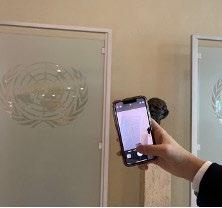



The story of the ambassador from Washington DC before the presentation on the last day also made a big difference in my values and thoughts. As an ambassador, he didn't just talk about diplomacy or his job, but it was very moving to me because it felt like he was nurturing our thoughts and personal characteristics.
He asked each of us about our hobbies and said that this is our characteristic based on our answers, and he talked about unpredictability, that someone who likes to listen to songs might become a musician, or a student who likes to write might become a novelist. It was nice to feel like she was giving me advice and telling me about her own life, not just telling me the obvious as an ambassador, and then she told me a story about how a year ago she didn't know that a year from now I would be in the U.S. doing a UN program, and she emphasized that life is an unknown, and she told me that she didn't know what I would be doing in the future, and it stuck with me, and it made me feel like I should work hard because if I keep working hard now, I will be qualified to take the opportunities that come my way, whether it's in the near or far future. I don't know what I'm going to do in the future, but if I want to get that opportunity, I have to live hard now to get it, so I was very motivated to study.
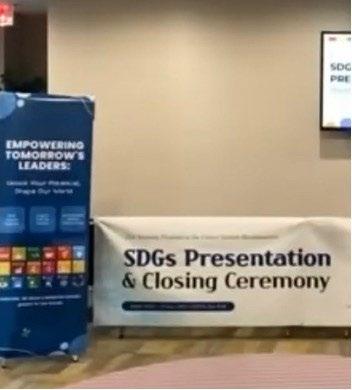
 Soobin Kim Chung Nam Samsung Academy
Soobin Kim Chung Nam Samsung Academy
The ocean was recently the subject of a horrendous issue. Humans are intrinsically surrounded by the oceans since all continents are floating in the water.
Over a third of the world's population, which consists of approximately 2.4 billion people, lives within a 100-kilometer radius of the ocean. It is estimated that most people have visited the ocean at least once in their lifetime, and most people have a basic understanding of what the ocean is. There is no doubt that everyone is aware of what the ocean can do to them.
This essay will be stated based on SDG 14, ‘Life Below Water’. SDG 14 is determined to enhance a demonstration of the situation of global warming, especially in the ocean. SDG 14 is mostly about the protection of the marine environment and resources. It is known that there are numerous amount of marine resources that can be utilized for making products. Proper management of these resources is key to ensuring sustainable growth and development. Therefore, SDG 14 emphasizes the need for the conservation and sustainable use of the ocean and its resources. It also calls for the reduction of ocean pollution and marine debris. To further protect our marine resources, SDG 14 also stresses the importance of research into new technologies and practices that can help maximize the ocean's natural resources while minimizing the negative impacts of human activity on the environment.
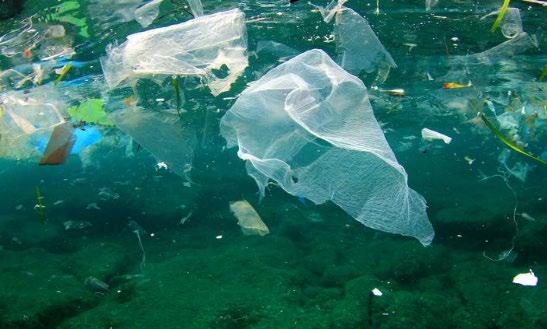
In the following paragraphs, it will be including verifications of the underwater problems and descriptions of the consequences.
These could include topics such as overfishing, ocean acidification, and coral reef destruction using the examples. This will help to educate people on the importance of preserving the ocean and demonstrate the consequences of human activities on the environment. It will also provide insight into the solutions that can be used to mitigate these issues. Finally, it will raise awareness of the need for urgent action to protect our marine resources.
Since the ancient ancestors presented themself on the glove, Ocean was one of the important sources of humans gaining their necessities. It can be concluded that human beings acquire some of the essential goods from the Ocean. These days, it is identified as a Marine resource. There are 3 types of resources,
“We ourselves feel that what we are doing is just a drop in the ocean, but the ocean would be less because of that missing drop. - Mother Teresa”
which is marine organisms resources, marine mineral resources, offshore oil and natural gas, and ocean energy.

Mostly, in the past, there were foods for people for subsistence which are simply clams, Marine Phaeophyta as seaweeds that they could easily obtain then. Once humans were able to hunt other than collection, it was possible to attain sea animals which as octopuses, and fish that is relatively simple to attain. Basically, this notion is the marine organisms' resources. Marine organisms provide over onesixth of the supply of animal protein and are also used for the production of processed food.
Additionally, it is known that marine organisms possess beta-carotene, DHA, mineral, and keto acid which is a component that constitutes the organs, especially the brain. By ingesting fish and shellfish, not only human beings can gain a certain amount of calories for stamina, but also substantial amounts of nourishment in the food.
Mostly, in the past, there were foods for people for subsistence which are simply clams, Marine Phaeophyta as seaweeds that they could easily obtain then. Once humans were able to hunt other than collection, it was possible to attain sea animals which as octopuses, and fish that is relatively simple to attain. Furthermore, humans in recent days also get a benefit from the ocean. As mentioned in the preliminary, there are a lot of populations living around the sea and working in the fishing industry. In the Republic of Korea, the population engaged was 1,061,938 people in the period between 2017 to 2021, which is about 2.1% of the whole population. Populations engaging in the restaurant business were about 1,940,000 in 2021, and considering that the restaurant business is one of the popular types of occupation nowadays, it is possible to deduce that populations in the fishing industry abound.
In the case of marine mineral resources, there are mineral resources such as manganese, cobalt, and nickel that can be utilized in the realization of advanced technology. Especially, manganese nodules are highly utilized as it is used in aviation technology, the electronic industry, and a lot many other sectors. Therefore, those resources reach a high level of merit for human beings. They are also known to be abundant and easily available on the ocean floor. Moreover, they offer many advantages such as being durable, corrosion-resistant, and non-toxic.
Recently, one news stated the mortal situation in the ocean.
“However, a comparative analysis between archaeological fish remains and contemporary fish populations has revealed a substantial decline in numerous species, especially sharks and rays. This decline is likely connected to the escalating effects of human activities, including overfishing and the deterioration of habitats, which have intensified in recent decades.
As seen in the paragraph, the news is arguing that human activities such as overfishing and the deterioration of habitats caused the destruction of the marine environment.
An objective measure of marine environment change is shown in this graph. Whether the environment is destructed is judged according to the volume of the water in the ocean with the low amount of oxygen. Because organisms in the sea require oxygen to mature, it is essential for them to have a certain amount of oxygen. Therefore, if the amount of oxygen is not sufficient, organisms will be unable to survive and also, it can lead to the destruction of the food chain, and eventually to the ecosystem. Low oxygen levels in the ocean can be an indication of polluted waters, which can be harmful to marine life and the environment as a whole. Such pollution can be caused by human activities such as dumping waste or using chemicals. It is important to take action to protect our oceans from further pollution.

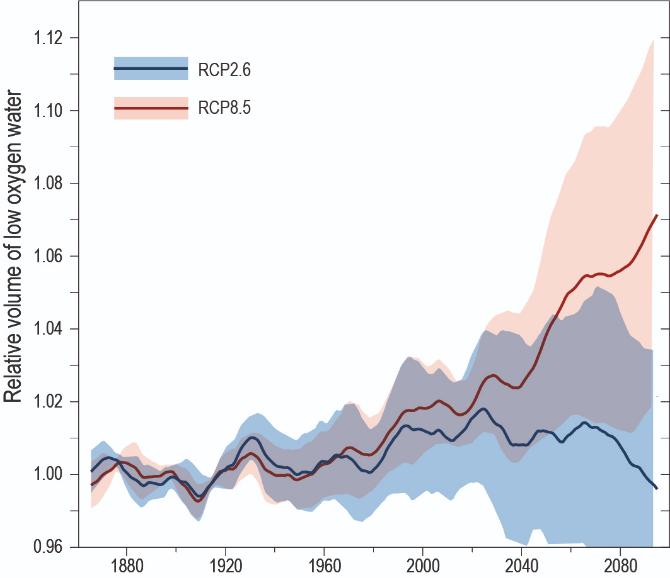

Nowadays, humans are facing various types of environmental crises. The climate is changing in an offensive way mostly in the direction of the intimidation of human subsist, which humans learned in the last few decades. As it became familiar, it came much more complicated for humans to perceive that environmental destruction is now ongoing. Moreover, it is not difficult to anticipate that in the end, this situation will make the worst conclusion for human beings.
Therefore, before appealing to an ‘act’ to stop superfluous destruction, the first step has to be the
Works Cited
https://www.azocleantech.com/news.aspx?newsID=33481
https://science.nasa.gov/earth-science/oceanography/living-ocean
https://www.healthyworldforall.org/kr/express-img/17042009-3346-img0.jpg
http://mdon.co.kr/news/article.html?no=4912
https://kosis.kr/statHtml/statHtml.do?orgId=146&tblId=DT_MLTM_5002851&vw_cd=MT_ZTITLE&list_id= K2_11&seqNo=&lang_mode=ko&language=kor&obj_var_id=&itm_id=&conn_path=MT_ZTITLE
https://www.kiost.ac.kr/cop/bbs/BBSMSTR_000000000098/selectBoardArticle.do;jsessionid=C4CD22FA5436 96510793E4A17F42DD22?nttId=561&pageIndex=1&searchCnd=&searchWrd=
https://if-blog.tistory.com/6004
https://www.ipcc.ch/site/assets/uploads/sites/3/2019/11/IPCC-SROCC-CH_5_10.jpg
https://earthjustice.org/wp-content/uploads/ocean_net_aqua-images_shutterstock-scaled.jpg




Happiness is often considered to be in a positive relationship with wealth. Since many resources can be bought with it, money is the essence of contemporary people’s lives. The more money we get, the happier we become. Recently, however, I encountered the exact opposite scenery. I was confused due to the thing I watched. The whole world seemed different as if it were a painting with a different texture than I expected. I didn’t know what to believe between my dusty prejudice and the brain-refreshing reality. Eventually, I figured out my answer to the chaos and learned a new lesson, thanks to Mr. Donald Lee.
Before going on my way to the UN headquarters in New York, I was in Siem Reap, Cambodia for some volunteer work. After a long flight, I arrived at the kindest city on this planet. Everyone who greeted me in Siem Reap was extraordinarily warm-hearted. It wasn’t simply because I was a tourist from a foreign country. Being kind to each other and being grateful for their own lives were parts of their daily routine. Things were the same at the local elementary school where I taught tiny kids English. Children were eager to learn and spend time playing with their friends. In the break time, I sat on the bench to watch them play. Cambodian kids enjoyed dancing, singing, and running around the front yard. Without smartphones or tablets, they looked happy enough.
“We need to “waste” our time doing nothing but letting go of our desires.”
Figuring out that Cambodian people are much happier than South Koreans, I was curious about the reason. South Korea’s gross domestic product in 2022 is 1907.661 billion dollars, 70 times as big as Cambodia’s GDP. Despite this large gap, Cambodia shows better average life evaluations related to their economic status. Cambodian people evaluate their lives decently serving themselves with low income while Koreans take their life as burning hell with high income and fancy surroundings. How can it be possible? How can the economy be so neglected when deciding the satisfaction of people?

When I finally reached the point to figure out the answer, I was in New York. I could acquire a clear answer to my personal question from the UN headquarters. According to Mr. Donald Lee, the representative of AFICS, there are many economic and social dimensions to analyze the living environments of people. Lots of essences of life can change the quality and perspective of people’s lives. Disempowerment, suffering in body, mind, and heart, struggle and resistance, institutional maltreatment, social maltreatment, and unrecognized contributions are examples. These hidden dimensions of life evaluation are mostly the downsides of South Korea. These aren’t as supreme as values like water, sanitary, and fresh air. These values, however, are still capable of discouraging people from acquiring what they deserve and displaying their abilities. Also, there are huge relative poverty problems captured in South Korea. Since the ‘average standards’ of Koreans are brutally high, lots of people are suffering from despair that results from inferiority. Because the goals of people are so high, relative poverty happens even when they are achieving decently. The more they’re eager to be approved, the more depressed they become. This unfortunate cycle goes on and on.
The pathetic truth we’re encountering will not be easy to help with. Still, we have to fix the problem. So here, I suggest a new lifestyle to help Koreans overcome the gap between their will and reality. They are always burnt and worn by overwhelming tasks and emotional waste. A gospel truth here is that the two both originated from exaggerated goals. Why don’t we slow down and wait until we grow up? Why don’t we wait until we grow enough to develop ourselves? Recently, people look like they’re pushing themselves hard to run faster than anybody else. But race cars often broke without any repair. Respectfully, we need to “waste” our time doing nothing but letting go of our desires.
“Browse by: ‘KKOREAREPUBLICOF.’” Browse by: “KKOREAREPUBLICOF” | OECD iLibrary, www.oecdilibrary.org/Kkorearepublicof. Accessed 18 Aug. 2023.
“Browse by: ‘Cambodia.’” Browse by: “CAMBODIA” | OECD iLibrary, www.oecd-ilibrary.org/cambodia. Accessed 18 Aug. 2023.
Well-Being and State Effectiveness - Amazon Web Services, happinessreport.s3.amazonaws.com/2023/WHR+23_Ch3.pdf. Accessed 18 Aug. 2023.
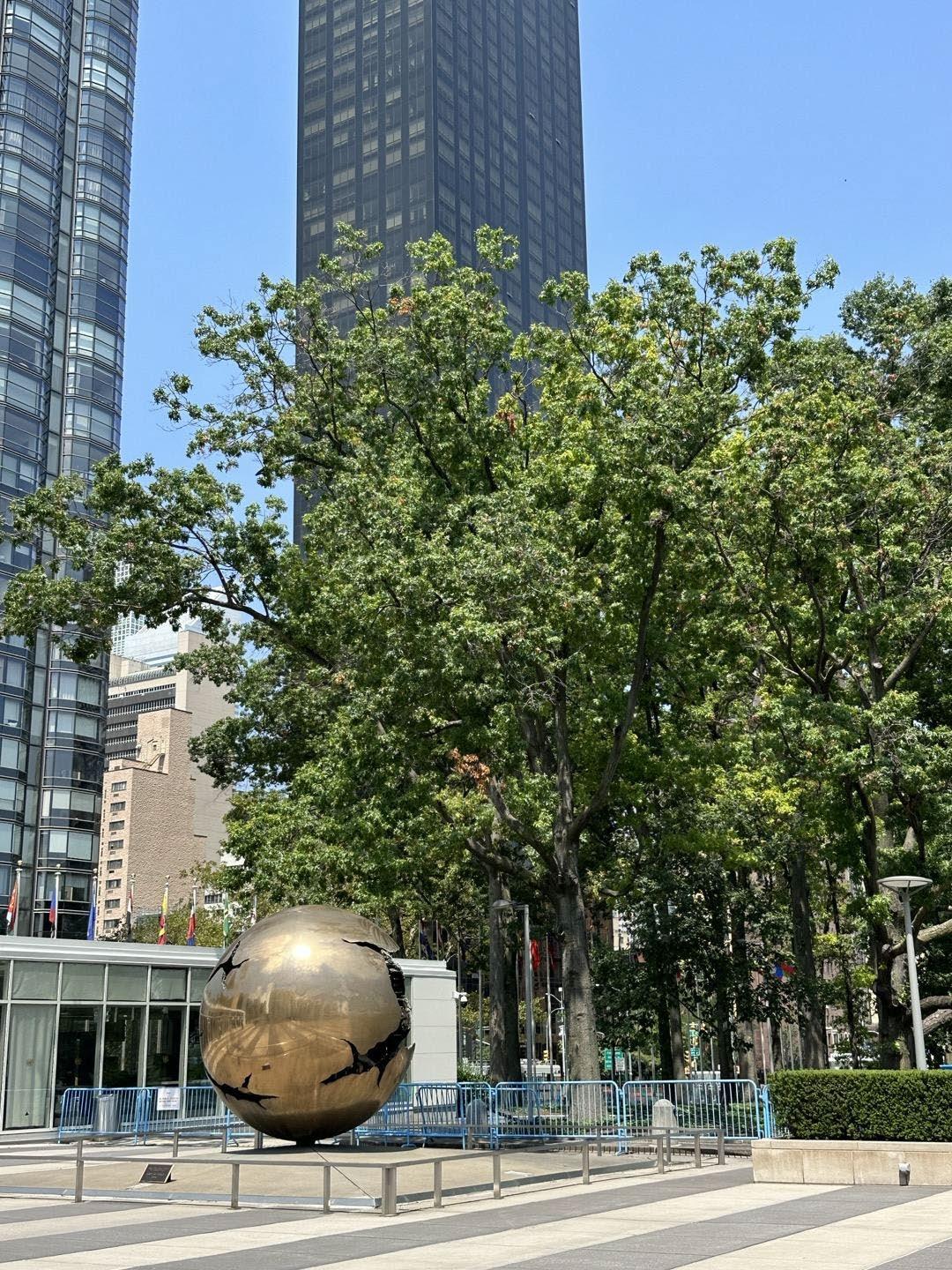
Every day of my UN Training Program was a challenge, but every day was also an opportunity to grow.
The UN Training Program lasted about four days in total. Not only did I gain professional knowledge, but I was also inspired by the atmosphere at the UN Headquarters, the way they work, and the people who are passionate about their work. On my first visit to the UN Headquarters, I remember being amazed to see the UN Headquarters in front of me, which I had only seen on the internet or in books. The symbols of peace that I could easily find in various parts of the building reminded me that I was indeed at the United Nations.
As I listened to the full-fledged lecture, I felt strongly that all of the speakers were working with pride and passion for their work. It is not easy to work with great pride and love for one's work, and the passion and love shown by all of the speakers made me feel envious.
If we were to ask someone, "Do you know what the United Nations does?

Most people would say they work for abstract, vague values like working for peace. I, for one, only knew that they strive for peace, equality, and happiness, which are so idealistic and vague, and I didn't know exactly what they do to make these values a reality.
But through this opportunity, I realized how granular, detailed, and meticulous the United Nations is in its goals and actions to bring these values to life. And I realized that the rights I take for granted in my daily life, such as education, were probably achieved through the efforts and sacrifices of others.
Also, during my UN expert training, I heard a lot about the need to constantly educate oneself. This means that everyone, regardless of age, gender, or generation, should never stop learning in order to see and understand the world more broadly. This training really broadened my perspective on the world and made me realize how important it is to keep stimulating and educating myself.
I think this United Nations Specialist Training will be a big turning point in my life. I have always lived in a boring routine of school, academy and home, and my view of the world was very small, but through this opportunity, I have seen a wide world. It was inspiring to see people working with passion and dedication in their respective positions to achieve a common ideal goal for the world. I admire the way they treat their lives. I've never been one to really focus on anything in particular, I've always been one to just go through the motions, but I felt like I shouldn't be living this way. There are so many people in the world who are doing so much, and I can't just stand there.

And I realized that I want to come back to this diverse and beautiful group of people. . When I come back, I don't want to be a student, I want to be a worker here.
This is the moment when my vague dream of working for an international organization takes shape. I will do the best I can in my position to come back to this place.
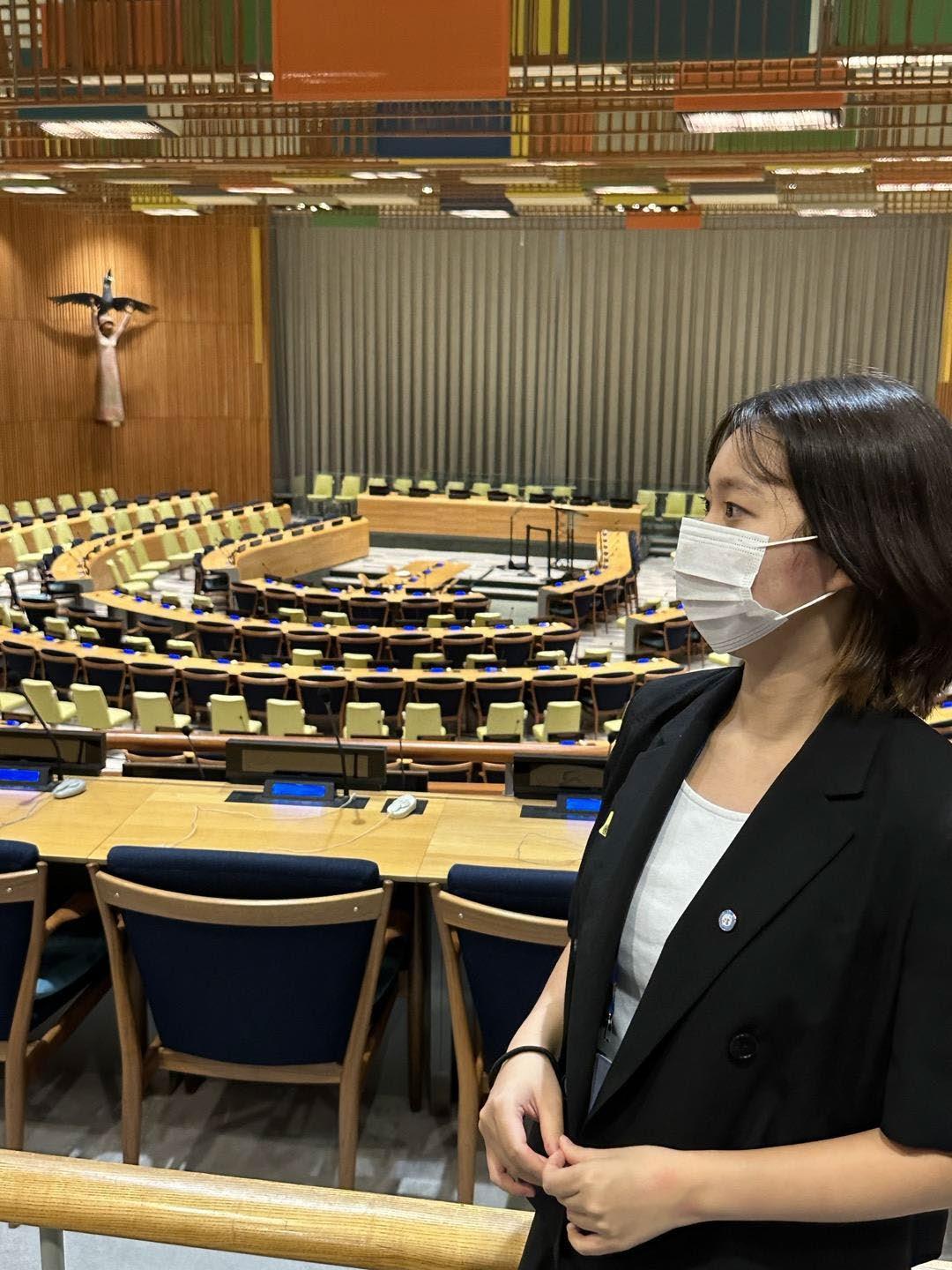
The person I was before I came here and the person I am after are very different. To be honest, entering the year 2023, I was very demotivated and free with my life. I couldn't concentrate well on my studies and had a hard time thinking about the direction of my life. I was the one who was most embarrassed by this state of mind, and I struggled to adapt to it. But this time, after the UN Specialist Training, I was able to rejuvenate my life. I found a reason to focus on my studies again, and I met and talked to a lot of people, and I was influenced by people who are living a good life. I learned a lot from the various speakers at the UN, but what influenced me the most was the atmosphere of the UN, the passion of the people who work there, and my friends who went through the course with me. The people I trained with were all friends with similar interests and similar dreams, and talking to them a lot about their dreams and hearing the stories of their lives made me believe in my dreams once again. In a few years' time, the promise I made to my friend to meet as an intern will probably be a strong support for me to strive for the rest of my life.
I used to dream of working for an international organization because I wanted to make the world a better place. But through this opportunity, I realized that I needed to change myself first. I will make myself better and then make the world a better place.
 Sewon Park Fairmont Preparatory Academy
Sewon Park Fairmont Preparatory Academy
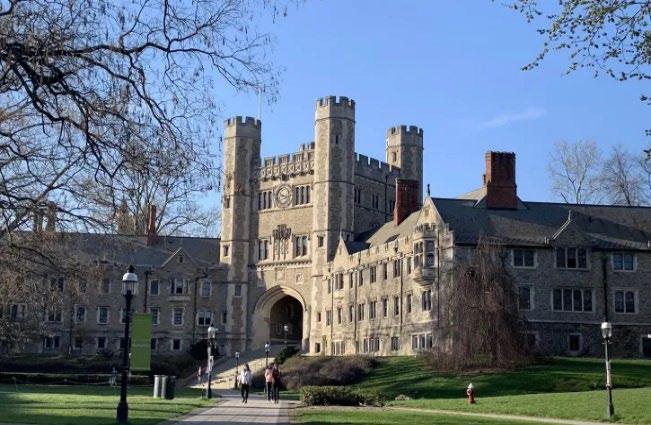
To be frank, I was quite unsure about this trip before we left. I was definitely excited about obtaining the opportunity to visit the five Ivy Leagues and attending lectures at UN. However, I was also concerned that it would be overwhelming to live up to the standards of being present in such prestigious areas and settings. I was not sure if the expectations and standards existed within my capabilities. After all, the places that we have visited have such big names for a reason: their history, the extraordinary figures with their outstanding minds and ideas that have impacted the world, their beauty, etc. Am I allowed to be there? Would I exhibit the kind of behavior that proves that I am worthy to be there? Of course I may be overthinking it because thousands of people visit those places everyday. Nevertheless, that still did not help me get rid of my self-doubt.
As I waited for everybody at the airport and as I did, I wondered who I would meet, who I would become friends with, and also who I would become by the end of this trip. Fortunately, all of the people I have met were great people. Not only were they very intelligent, but they were also really fun to be around. The people in this program really made the whole trip a lot more memorable because I loved that we were all sharing the same passion and respected one another.
The Ivy League campus tours left me in awe. I’ve only ever visited Harvard before, but getting to visit other universities such as Yale and Princeton gave me a new perspective on college and helped me catch a glimpse of what my life could look like as a college student. One of the things that I always feel when I’m visiting college campuses is that it is something that every student who is trying to decide which college to go to should do. The reason that I think that is because, not only does it help

“Our ability reach unity in diversity will be the beauty and the test of our civilization” - Mahatma Gandhi
you decide which college’s atmosphere or campus do you like better, but it also breaks down the barrier that one might feel when considering a college. For example, I used to think that Harvard was a college that only top tiers could attend. Never in my life had I ever even thought that I would be capable of going to Harvard. However, ever since I visited Harvard last year, I no longer really believed that it would be entirely impossible for me to go to Harvard, not because it magically seemed easier for me to go there all of a sudden, but it just helped me realize that it was just another real place that humans go to. Obviously, Harvard is an extremely hard and competitive school to attend and it deserves the prestigious title that it has. However, I think I might have just idolized it in my head so much that it didn’t even feel like a real place to me anymore and that made it feel like it was impossible for me to go. I’m not saying that this would suddenly give you the grades and academics that would get you into an Ivy League, but what it will give you is confidence. And confidence, in my opinion, is one of the most essential traits to have when you’re applying for a college, and in general. Believing in yourself in the first place allows you to accomplish more than you think.
It would not compare to the experience of going to the United Nations though. Taking a tour around the UN and furthermore, having the opportunity to attend lectures of people from the UN were truly an unforgettable experience and something that I will always be grateful for. Not only did I learn a lot about the issues that are going on today in the world and how we could help, but I also learned more about the UN itself. My favorite thing is probably that the UN has open doors and arms for everybody. Just because it is a place where every single important person from all around the planet comes and has really important meetings, it doesn’t mean it is strictly restricted to other people. Matter of fact, it’s the opposite. The UN is contained of such a variety of people and ideas that it reminded me of a color palette. No matter how different everyone was, they all came together and made beautiful colors and patterns with the work they did. And it also made me realize that the Big-Name Places like I’ve mentioned, are not just places for extraordinary people. But they are for everybody, and in fact, they are probably what makes and inspires people to become extraordinary. They help people realize that just because you may think you are not extraordinary, it can’t rid you of your capability of igniting the fire back onto a heatless world.


That is why, in the end, I was really glad that I joined this journey. Meeting all these great people and learning what I could do as a student to help make the world a better place was truly a blessing for me and an experience I will cherish forever. I am grateful for the program because it really made me realize that in order to make a difference in the world, we have to come together and help each other out. Also, that nothing is entirely impossible with just the right amount of inspiration, motivation, and confidence.
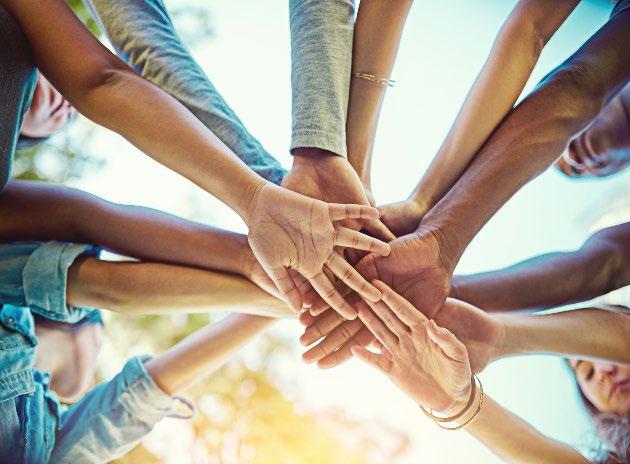
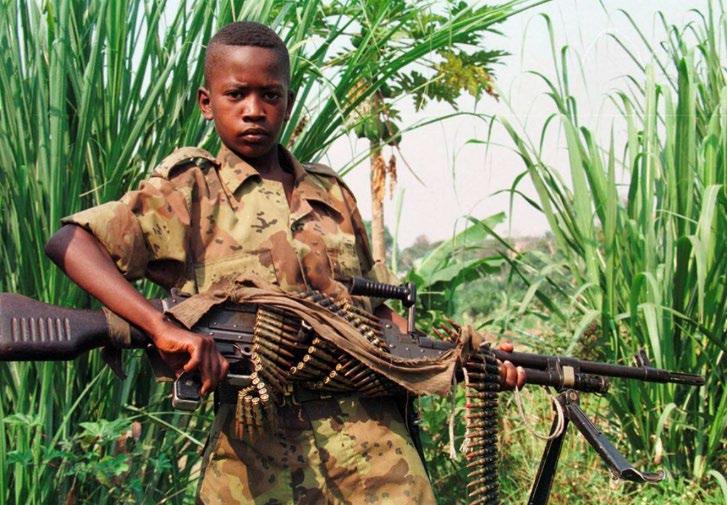 Jihyun Song Haeyang Middle School
Jihyun Song Haeyang Middle School
Due to wars, some children are unable to have a normal childhood. Instead of toys, they hold guns, and instead of reading, they are killing. The existence of child soldiers is completely against SDG 16, which aims for peace and non violence in society. Approximately 300,000 such child soldiers exist in the world. They fight for different military groups and perform wide ranges of tasks from suicide bombing to spying. But children who are child soldiers experience a lot of psychological problems such as PTSD, depression, and bipolar disorder that make it hard for them to go on with their day-today life even after war. The psychological impacts suffered by child soldiers also slows down the achievement of SDG 4, which aims for good health and well-being for all.

First, PTSD is an acronym for PostTraumatic Stress Disorder and it is something that child soldiers often experience. PTSD is a psychiatric disorder that is caused by a traumatic event. It is difficult for people with PTSD to go on with their normal lives since they experience continuous flashbacks and nightmares of a specific traumatic event which makes them relive that moment. Victims of PTSD avoid people and places that remind them of the traumatic event that they have experienced, and so, they refuse to talk about it, which leads to the victims becoming antisocial.
Additionally, victims of PTSD tend to change and make up a new reason for why the traumatic event happened, so they fabricate untrue stories that make them the “bad guy” which causes them to live in constant guilt and regret. In the case of child soldiers, they will probably suffer from flashbacks of traumatic events related to atrocities that they have witnessed, such as massacres and torture, during war. A 2006 survey with 39 former Mozambican child soldiers showed that all of them (100%) experienced PTSD, this proves the point that PTSD is common amongst child soldiers. Therefore, from a young age, child soldiers are diagnosed with PTSD.
Second, depression is prevalent amongst former child soldiers. Depression is a mental disorder characterized by persistent sadness and displeasure in previously enjoyable activities. It is caused when someone grieves a loved one or experiences traumatic events. People with depression tend to have problems with sleeping, are constantly sad, and experience fatigue. They also show a disinterest for life and a lack of motivation. Hence, depression can lead to suicide, which takes the lives of 703,000 people around the world annually. Such symptoms of depression are common amongst child soldiers since they mourn the loss of family members and friends who have died in combat or war. On top of that, the traumatic experiences that child soldiers had in battlefields amplifies their symptoms of depression. A study with former child soldiers aged 5 to 16 at that time showed that more than half of them were at risk of becoming depressed. Likewise, a large number of child soldiers experience depression, which makes living a happy life difficult for them.
Third, child soldiers also experience bipolar disorder. Although the exact cause of bipolar disorder is unknown, experts believe that it can be caused by childhood trauma, stressful life events, or drugs. Drug usage can lead to bipolar depression since drugs change the brain’s reward system to make someone feel euphoric, and such drugs make changes to the brain that lead to bipolar disorder. Moreover, bipolar disorder causes unpredictable and severe mood swings that can go on for weeks or days. So for a person with bipolar disorder, in one moment they can be very hyper and energetic, and then in the other, they can be in a low and depressed mood. Many child soldiers experience such severe mood swings because of the traumatic events that they go through. Additionally, child soldiers are sometimes given drugs such as marijuana and opiates by their commanders so that they become more “brave” and less afraid of combat. Such drugs that are given to child soldiers contributes to them getting bipolar disorder. Thus, bipolar disorder is another type of mental illness that child soldiers experience, and it is mainly caused by traumatic events and drug usage.

To conclude, SDG 16 is about peace and non violence, but with the existence of child soldiers, there cannot be such a thing. In addition, with child soldiers suffering from PTSD, depression, and bipolar disorder, SDG 4 too cannot be achieved. So, after people understand the mental illnesses suffered by child soldiers, they need to take action and help them. A change is needed starting from now.

Columbia:
I was walking in New York City following the group to go to Columbia University. I was admiring all the beautiful red brick houses that looked exactly like the set of a hollywood rom-com movie. Then, I walked up a pair of stairs and was surprised to suddenly see the Alma Mater sitting there elegantly with her laurel wreath while raising her hands as if to welcome the dreamers, believers, and achievers from all around the world who walked into the gates of Columbia. I was surprised to see a whole campus hidden in the middle of New York City. It was beautiful and looked like a secret garden that was made by the Greeks in antiquity. While there touring, I learned that Columbia’s curriculum had a very good balance of being classical but also liberal at the same time. I also learned that the people at Columbia organize a lot of protests. That is why the University had prominent student demonstrations against the United State’s involvement in the Vietnam War during the 1970s. I really liked that kind of atmosphere because it shows how students and staff members all have an important voice in Columbia and can express their opinions in a free way. Through the Q&A sessions with an alumni, I learned that when choosing a university, I should find a place that fits me rather than changing who I am to fit into a certain school. This was such an important message for my highschool years. Overall, the tour at Columbia was inspirational and a great introduction to the more college tours to come.


When I first walked into Harvard square I forgot that I was in Massachusetts. It looked like a small village from a Brother’s Grimm fairytale. The red brick buildings had such bold colors that it brought life to the streets, and it felt like at any moment a fairy could have popped out of one of the houses. It was just the epitome of a fairytale village that will usually appear in Disney movies. To be honest, I have only seen pictures of Harvard on the internet but by actually going and being there, I felt a connection to Harvard. When I walked through the gates and went into the campus, I was so excited that I did not know what to do. Then the group started moving deeper into the campus and eventually reached Harvard yard. The day was so clear that the sky looked as if it were painted by an artist. The contrasting colors between the baby blue sky and the crimson red bricks of the building made the campus look as if it were something straight out of a Monet painting. I was eager to take so many pictures since I wished that I would never forget what Harvard yard looked like that day. But honestly, pictures cannot even match the beauty of the campus. As the group progressed we saw the iconic John Harvard statue. People were lining up to take a picture with it. Everyone who had a dream to study at this beautiful university was putting one hand on his left shoe, children, adults, elderly people. Through my visit to Harvard what I learned was that if you work hard, the hard work will certainly pay off. Everyone at Harvard worked hard to achieve their goal, and in return, they got what they deserved, which are: a great campus to study in, famous groups of professors to learn from, and an atmosphere where learning and digging deeper into your interests is encouraged. Personally, aside from the campus and, to be honest, the great Harvard merchandise store, I loved the atmosphere of Harvard since it was academic. I really liked how the beauty of learning was appreciated at Harvard. It was a place filled with people who shared the same passion and love for learning and I think that is the reason why Harvard is one of the most prestigious universities in the world. It is because Harvard is a place where great minds are encouraged to come together through their equal love of learning to come up with new solutions to world problems. As someone who also has a big passion for learning, I felt as if Harvard was an inspirational and life-changing place to visit.
The University of Pennsylvania was an interesting place to visit. It was an Ivy League university that was in one of the most dangerous cities in the US. Unlike Princeton or Harvard, its campus was not built in a rich neighborhood, but it was in Philadelphia where trash and graffiti were prevalent. Everything looked so depressing and dull and even more so considering that the group had just come back from seeing Princeton, which had a campus that looked like a 15th century English castle. But once we walked through the official gates of the University of Pennsylvania it was just another world. There was a beautiful grass park in the middle and the buildings were so colorful. But the campus was certainly a bit different from the other Ivy League universities we visited since it was more modern. The libraries did not look like ancient Greek pantheons and the dormitories did not look like the houses of elves. The University of Pennsylvania had a modern and simple campus that made it stand out from
the other schools. Since the university was well known for its Wharton school, the contemporary and office-like design of the campus really fit into the university’s image. Moreover, I learned about the University of Pennsylvania’s value which is to work hard and play hard which I thought really resonated with my values. Additionally, I learned that the University of Pennsylvania had a very good medical school and psychology program. This was interesting and exciting to hear as someone who dreams of working in the medical field as a psychiatrist. Overall, I had a great time visiting the University of Pennsylvania. I loved how the University had a different atmosphere from the other colleges I visited. I also found it interesting how the University’s value connected with mine.
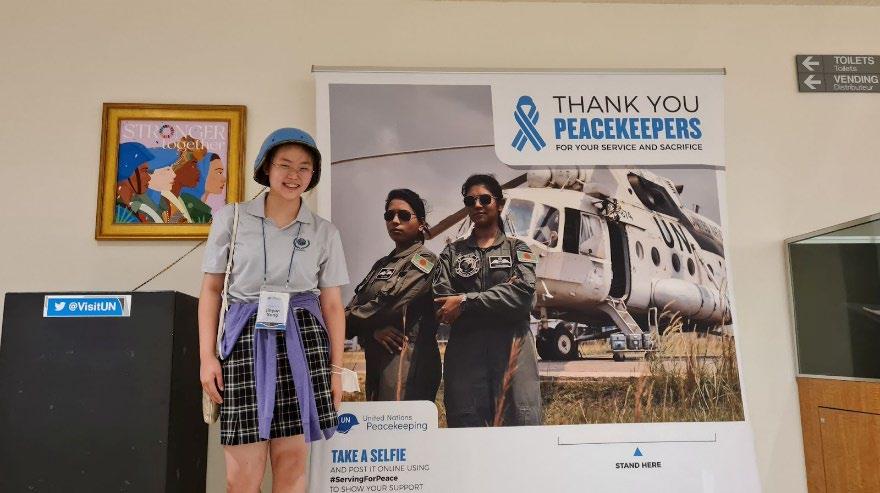

As soon as I stepped out of the car, the first thing that I saw was flags flapping on their poles in front of the iconic 39 stories UN headquarters building. Wide-eyed and jaw dropped, I rummaged through my bag to quickly find my phone so that I could take a picture of this iconic building. The weather was perfect and the flamboyant colors of the flags really stood out in front of the dark blue building. Just from looking at the façade of the UN headquarters, I knew that my time spent in the UN would be life changing. Throughout the next four days, I met with inspirational people who gave well prepared presentations of the global issues that they devote their life into solving. At first, I was a bit embarrassed to ask questions in front of such great people, but all of the presenters were so welcoming and warm that all questions felt welcomed. I truly learned so many things from my experience at the UN. My favorite part was always at the end of presentations where the experts will describe the things that we, as young people, can do to solve world issues. I have always found this part the most touching and interesting because it is true that youth is the future and the hope for the next generation, and so, for young people to take action means a change in our world. That is why, I think that the most important thing that I have learnt in this trip was the importance of youth action. Additionally, through the UN tour that our group did, I have also learnt so much about the history and the principal “organs” of the UN. Visiting the UN was definitely a once-in-a -lifetime experience that I learned a lot from!

Authors, For. “Comparison of Mental Health Between Former Child Soldiers and Children Never Conscripted by Armed Groups in Nepal.” JAMA Netweork, 13 Aug. 2008, https://jamanetwork.com/journals/jama/fullarticle/182377.
“Depression.” Site Branding SAMHSA.Gov, Substance Abuse and Mental Health Services Administration, 7 Feb. 2023, https://www.samhsa.gov/mental-health/depression.
Bollyky, Thomas. “Child Soldiers Around the World.” Council on Foreign Relations, 4 Nov. 2022, https://www.cfr.org/backgrounder/child-soldiers-around-world.

“Child Soldiers.” Peace Direct, https://www.peacedirect.org/us/child-soldiers/. Accessed 18 Aug. 2023.
“Child Soldiers: Childhood’s End.” Save the Children, https://www.savethechildren.org/us/charity-stories/childsoldiers. Accessed 18 Aug. 2023.
Renee Garfinkel, is. “The State of Child Soldiers in 2023.” Psychology Today, 1 July 2023, https://www.psychologytoday.com/us/blog/time-out/202301/the-state-of-child-soldiers-in-2023.
Authors, For. “Comparison of Mental Health Between Former Child Soldiers and Children Never Conscripted by Armed Groups in Nepal.” JAMA Network, 13 Aug. 2008, https://jamanetwork.com/journals/jama/fullarticle/182377.
 Samuel Song Cheongna Dalton School
Samuel Song Cheongna Dalton School
Collaboration has held a vital role in human society throughout history, from ancient times where cohesive and larger tribes had a better chance of dominating and conquering, to our modern era where countless firms and corporations employ hundreds and thousands of workers to amass wealth and power. These considerations made me aware of the importance of collaboration, but its true significance became most apparent after I completed the twenty-first United Nations (UN) Training at the United Nations Headquarters.
During the initial three days of the training, I visited several prestigious schools, including Columbia, Harvard, Princeton, Yale, and the University of Pennsylvania. Each university provided distinct guides, current students or alumni, who shared insights about their institutions' facilities and histories. One aspect that left a lasting impression on me was the dedication of these guides, who willingly volunteered their time to assist us in learning about their universities. Despite their demanding workloads and studies, their unwavering efforts and genuine care were evident and deeply appreciated throughout the tour. The university visits went beyond standard guided tours; they provided a valuable lesson in the dynamics of helping, learning, and teaching learning between people – in this case, the guides and us – all of which encompass the essence of "collaboration."
Following the college tours, I attended approximately six UN lectures. These lectures were hosted by organizations such as the UN Office for Disarmament Affairs (UNODA), the Association of Former International Civil Servants (AFICS), the UN Department of Economic and Social Affairs (UNDESA), the Department of General Assembly and Conference Management (DGACM), and the International Atomic Energy Agency (IAEA), among others. While each lecture focused on distinct targets and audiences in both developing and developed countries, they all shared a common theme: collaboration. These departments stressed the necessity of working together to achieve their Sustainable Development Goals (SDGs) and improve the world. For instance, during Maren Andrea Jimenez's lecture from UNDESA on reducing inequality – SDG 10 – she emphasized that addressing inequality cannot rely solely on economic development, but necessitates collaboration across various domains such as education, environment, and poverty. Ms. Jimenez highlighted how inadequate education, environmental stressors, and extreme poverty exacerbate gender, social, and income inequalities, making it imperative to address these factors holistically to effectively reduce inequality. These lectures, including Ms. Jimenez's, underscored the significance of collaboration and illuminated how the UN wields considerable influence as a Non-Governmental Organization (NGO) due to the countless collaborative efforts among individuals and organizations.
In conclusion, this training was invaluable to me not solely due to the expert lectures but also due to the opportunity to witness the power of collaboration firsthand. People consistently rely on each other –friends in the same training, teachers, college seniors, alumni, or UN experts – and together, we contribute to a better world and personal growth. Intriguingly, the UN's ultimate and most crucial step
“I knew that collaboration has always been important, but the 21st UN Training was the event that most significantly emphasized why we collaborate and what we can learn from each other.”
toward achieving their SDGs and objectives is encapsulated in SDG 17 – forging partnerships for the goals. The betterment of the world and successful SDGs would occur like the waves of an incoming tide when the world notices and pursues the importance of collaboration.


The Sustainable Development Goals (SDG) refer to 17 different goals established by the United Nations and its 193 member states in order to combat current global issues and develop a better, sustainable world for current and future generations. SDG 13, Climate Action, addresses the urgent need to combat climate change by reducing carbon emissions.

Since the late 19th century, the average surface temperature has risen about 1 degree Celsius due to record-high human activities that produce greenhouse gas emissions and trap heat inside the atmosphere. 76 percent of the worldʼs total greenhouse gases consist of carbon emissions. While carbon can be released into the atmosphere by natural causes, the reason for the abnormally high surge in carbon emission is attributable to human activity, ranging from actions like burning fossil fuels, deforestation, industrial farming, chemical release, rapid development, to industrial activities to satisfy the rising demand for resources. South Korea also contributes to climate change and ranks 8th place for its carbon footprint. While the Korean government puts concerted effort to reduce carbon emissions, it has not been successful. However, it is clear that immediate action is required as the impacts of climate change are becoming more visible in the country over time.

Record-high greenhouse gases and carbon emissions are causing problems globally. The gas traps heat inside the atmosphere, increasing the world’s temperature as mentioned. Some of the general main effects of rising temperatures and carbon emissions are the following:
“Climate change is a real and undeniable threat to our entire civilization. The effects are already visible and will be catastrophic unless we act now.”
Health Hazards – Annually, environmental factors are responsible for 13 million deaths worldwide. External factors such as intense natural disasters, pollution, malnutrition, and diseases including internal reasons like various mental disorders due to these influence makes living challenging and threatens people’s lives.

Increase in Droughts – The ecosystem is facing an increased risk of droughts from global warming. The amount of cultivable land is declining and situations in areas that are already suffering from extended dry periods are becoming much more severe, which threatens food security.
More Intense, Frequent Storms – Storms, hurricanes, cyclones, and typhoons have become considerably destructive, extreme, and more frequent due to warm waters on the ocean surface. These storms are capable of causing severe casualties and destroying cities and houses, leading up to a high financial loss for individuals and countries.
Poverty – People can lose their homes due to natural disasters, droughts making water and food much rare, and extreme weather making outdoor jobs difficult. These effects of climate change trap people and lead them into multidimensional poverty.
Rise in Sea levels – Water expansion and melting glaciers are contributing to the threat to coastal areas and islands. Carbon dioxide, also absorbed, can lead to ocean acidification, endangering the marine ecosystem.
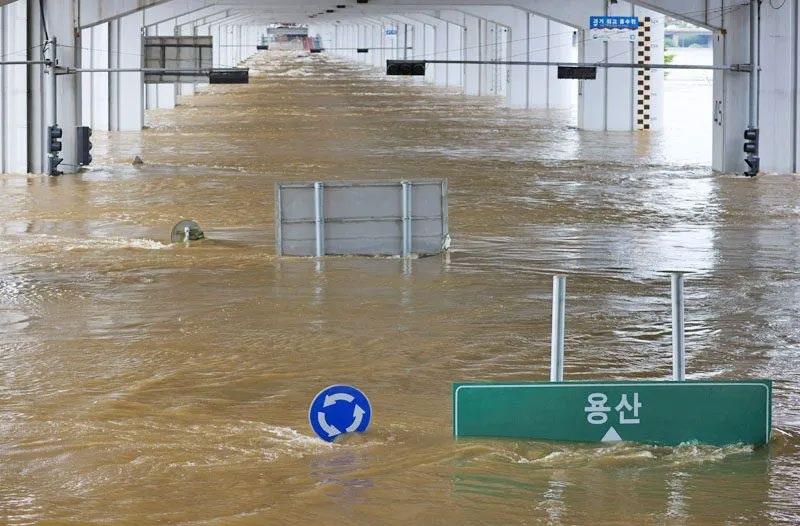
South Korea is no exception and facing these consequences just like the rest of the world, causing harm to the country environmentally and economically. Over the last century, the average temperature around Korea has risen about 1.5°C, which may seem like an insignificant difference, but it brings extreme changes in climate and weather conditions.
For example, typhoons and storms along with floods are becoming much more frequent with around 8 cases per year during monsoon seasons. Warmer ocean waters power tropical storms and warmer atmospheres allow more moisture to collect and fall as rain, creating typhoons. These disasters have claimed an average amount of around 330.6 million dollars in damage annually by destroying infrastructure, buildings, and homes. Subways have also been affected multiple times because they are located underground. Moreover, disadvantaged residents living in semi-basements (banjiha) become inevitable victims of flooding. During times when places experience downpours and floods, for example, in 2022 August when Seoul got hit by one of its heaviest rainfall in a century, families experienced severe damages, lost their homes, or even drowned in their own homes, which made their situation much more difficult and kept them in poverty. Things are going to get only worse from here without any action by the government because the International Energy Agency projects the average precipitation in Korea to increase to 172.5 mm in 2071-2100 “if global greenhouse gas emissions continue to rise without mitigation.”
As a result of global warming, the coasts are also put in danger as the sea levels around the Korean peninsula have risen about 10cm over the last 40 years and about an average of 2.4 millimeters per year since the 1990s. Not only overflows in the cities, but the coastal flooding has damaged many infrastructure, displacing many residents in the area, especially since the elevation of land is fairly low. The change in the underwater ecosystem has impacted Haenyeos, the local cultural female divers of Korea, as biodiversity has decreased due to the rise in sea temperature. They are either losing their jobs altogether or forced to dive to greater depths, which endangers their lives.
In addition, the increasing temperatures have created more health hazards. According to the Korea Disease Control and Prevention Agency, this year alone, during prolonged heat waves soaring to 38 degrees celsius, more than a thousand cases of heat-related illnesses have been reported and twenty cases of death have occurred, which has doubled from 2022.
The environmental policies and regulations in Korea tend to change every time a new president takes office. President Yoon Suk-yeol is planning to develop nuclear power plants as a solution, abandoning the former government’s previous objective of achieving 100% renewable energy.
In 2020, Korea declared to meet its goal of carbon neutrality by 2050 and promised to stop the deports of overseas coal-fired power plants in 2021, April. By tripling the Official Development Assistance (ODA) loans, Seoul planned to support more green projects and businesses, which is a significant improvement from 9 percent of the loans given to green businesses. After holding the landmark event Partnering for Green Growth Summit in May 2021, Korean legislators passed into law the country’s goal to achieve carbon neutrality by reaching net zero emissions.
Although Korea announced to end its financial support for overseas coal-fired power plants, public financing still revolves around oil and gas within the country with 127 billion dollars spent in the oil and gas industry in the past decade. In 2021, although 40 percent of coal-fired power generation decreased down to 35% since the last decade, there was a higher increase in fossil gas-based electricity production rather than the use of renewable energy.
Although the country is headed in the right direction, more efficient policies will be needed as the progress rate is not fast enough to achieve the emission reduction target, which led to Korea receiving a rating of “highly insufficient” from the Climate Action Tracker (CAT).



One solution to this issue is to create and install moss lawns on top of one of the most common features of buildings in Korea, green rooftops. This idea was influenced by the Via Verde project in Mexico City introduced in 2016, whose aim was to lower air pollution in the city by installing large living walls against thousands of concrete columns. The living wall consisted of plants well known for absorbing carbon dioxide efficiently. Not only were the plants helpful, but the whole wall was made of ecofriendly materials and had an automatic irrigation system that uses rainwater for its maintenance and sustainability.
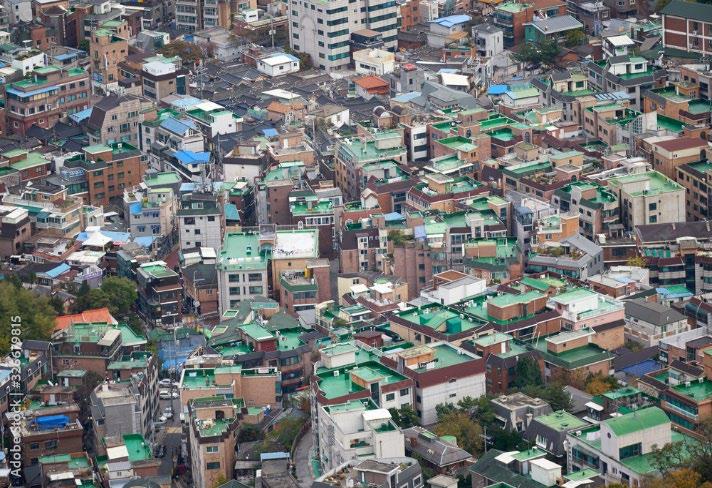
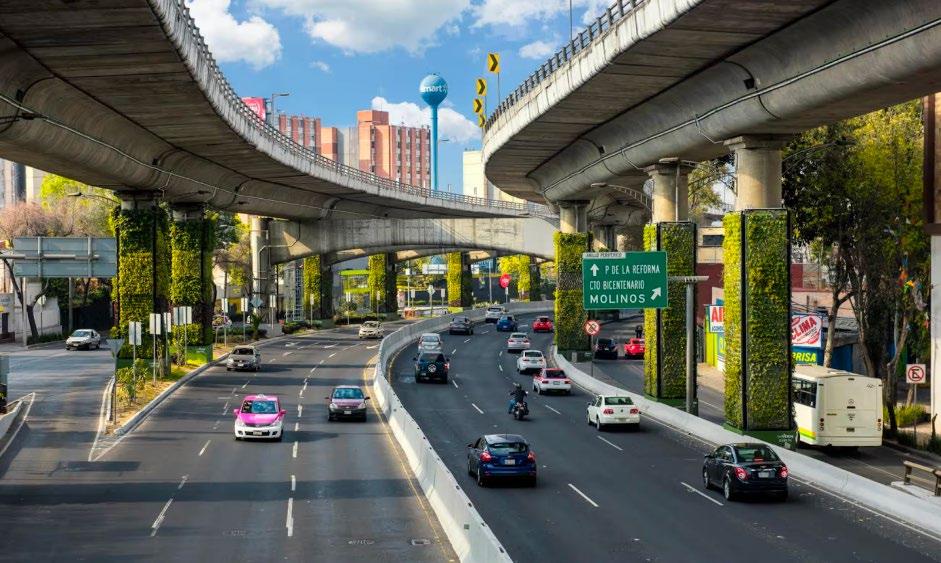
However, living walls needs constant treatment which makes them less effective. The irrigation system also requires a lot of energy as it is turned on constantly. Therefore, to make this more maintainable, less energy consuming, and more suitable for the environment in Korea, the solution moss lawn came to mind. A mixture of different types of sun-tolerant moss will be placed on top of roofs but still separated from the ground, making it detachable. A handful of research and reports prove the immense benefit of moss and how it creates a much better potential simply by its location.
Moss is a well-known plant for its highly effective air purifying skills. It is colonized by bacteria that live off of the decomposition of organic substances which makes it possible for moss to reduce airborne dust with the ability to absorb moisture when the humidity is high and release it back into the air when it is low. But most importantly, only half a square meter of moss can absorb one whole kilogram of carbon dioxide annually, which is more than a small forest, more than 275 mature trees can absorb. The roof of the buildings in Seoul is
approximately 166 million m^2. If we assume that all buildings in Seoul installed the moss lawn on rooftops, that would be about 332 million kg of carbon dioxide absorbed from an average of 626.8 million tonnes produced annually. Considering that it was 332 million kg just from Seoul out of the whole of Korea, if this project is successfully created and installed in buildings throughout Korea, the goal of reducing or slowing down the rate of carbon emissions and enhancing air quality will be guaranteed. There are different reasons why we want to place them on rooftops. The reason why they are painted shiny green is to reflect the sunlight off of the building to prevent it from building up heat. The moss will provide the same effect and better.
According to Green City Solutions, a company in charge of the Via Verde project in Mexico City, moss has a natural ability of a cooling capacity of up to 4 degrees Celsius which normally takes about 6,500 Watts to achieve with an average air conditioning system which reduces the use of energy.

However, despite the many advantages, there are some limitations that we have to consider. The ability to capture a lot of moisture also can be a disadvantage to roof moss lawns. If moss comes in direct contact with the surface of the roof, it can deteriorate the surface beneath. During heavy rain, strong wind, or any other circumstances, there will be times when bundles of moss detach and fall into the streets, causing safety hazards. Besides, in order to place these moss lawns on top of the roof, consent from locals is necessary. As most people use the roof for their personal use, providing some sort of incentives like tax relief for both the landlord and the tenant might be necessary to persuade them to install moss lawns on their rooftops.
Works Cited
A Study on the Urban Flood Response System: Focusing on the Case of Korea’s Abnormal Precipitation in the Summer of 2020.
“Aerial View to the Apartments with a Green Roof in Seoul in South Korea from the Top of Inwangsan Mountain. Stock-Foto.” Adobe Stock, stock.adobe.com/de/images/aerial-view-to-the-apartments-with-a-green-roof-inseoul-in-south-korea-from-the-top-of-inwangsan-mountain/326679815. Accessed 18 Aug. 2023.
“Causes of Climate Change.” Met Office, www.metoffice.gov.uk/weather/climate-change/causes-of-climatechange#:~:text=Natural%20influences%20on%20the%20climate.
Climate.gov. “6 c Human Activities Have Increased GHG Levels and Altered Global Climate Patterns | NOAA Climate.gov.” Www.climate.gov, www.climate.gov/teaching/literacy/6-c-human-activities-have-increased-ghglevels-and-altered-global-climate#:~:text=Burning%20fossil%20fuels%2C%20releasing%20chemicals.
“Global Emissions.” Center for Climate and Energy Solutions, www.c2es.org/content/internationalemissions/#:~:text=by%20Gas%2C%202015-. Accessed 18 Aug. 2023.

“Haenyeo Divers Threatened by Climate Change.” AJ+, www.ajplus.net/stories/haenyeo-divers-threatened-byclimate-change#:~:text=Haenyeo%20don. Accessed 18 Aug. 2023.
HERRING, DAVID . “Doesn’t Carbon Dioxide in the Atmosphere Come from Natural Sources? | NOAA Climate.gov.” Www.climate.gov, 29 Oct. 2020, www.climate.gov/news-features/climate-qa/doesnt-carbondioxide-atmosphere-come-natural-sources#:~:text=Yes%2C%20there%20are%20natural%20sources.
“How the Climate Crisis Is Impacting South Korea.” The Climate Reality Project, 10 Apr. 2023, www.climaterealityproject.org/blog/how-climate-crisis-impacting-southkorea#:~:text=In%20addition%20to%20rainfall%2C%20South. Accessed 18 Aug. 2023.
Jenkins, Lisa Martine. “Mexico City’s Vertical Gardens: Seeds of Change or Cynical Greenwashing?” The Guardian, 30 Oct. 2018, www.theguardian.com/cities/2018/oct/30/mexico-city-via-verde-vertical-gardenspollution-climate-change.
Kim, Juhern. “Assessing South Korea’s Transition to Net Zero - How South Korea Is Honing a Competitive Edge.” Carnegie Endowment for International Peace, 22 Nov. 2022, carnegieendowment.org/2022/11/22/assessingsouth-korea-s-transition-to-net-zero-pub-88426.
“Moss on Roof Tiles: Is It a Problem? – Abbey Roofing.” Www.abbeyroofing.co.uk, www.abbeyroofing.co.uk/news/moss-roof-tilesproblem/#:~:text=However%2C%20moss%20can%20o%20bstruct%20the. Accessed 18 Aug. 2023.
NASA. “Climate Change Evidence: How Do We Know?” Climate Change: Vital Signs of the Planet, 2023, climate.nasa.gov/evidence/#:~:text=The%20planet.
newsdirectory3. “Seoul Bans “Panjiha” Fears of Repeating 4 Bodies, 11 Far More Flood Victims.” News Directory 3, 11 Aug. 2022, www.newsdirectory3.com/seoul-bans-panjiha-fears-of-repeating-4-bodies-11-far-more-floodvictims/. Accessed 18 Aug. 2023.
Paddison, Gawon Bae,Laura. “At Least 16 People Dead from Heat-Related Causes as South Korea Swelters under High Temperatures.” CNN, 2 Aug. 2023, edition.cnn.com/2023/08/02/asia/south-korea-heatwave-deaths-climateintl/index.html. Accessed 18 Aug. 2023.
“Parasite Shone a Light on South Korea’s Semi-Basement Homes Known as Banjiha. Now, Seoul Wants to Ban Them.” ABC News, 21 Oct. 2022, www.abc.net.au/news/2022-10-22/seoul-banjiha-the-deadly-homes-beneathcity-streets/101505376.
“Recent Typhoons in South Korea.” Worlddata.info, www.worlddata.info/asia/southkorea/typhoons.php#google_vignette. Accessed 18 Aug. 2023.
Ritchie, Hannah, et al. “CO2 and Greenhouse Gas Emissions.” Our World in Data, 11 May 2020, ourworldindata.org/co2/country/south-korea#:~:text=average%20person%20emit%3F-
“South Korea - Place Explorer - Data Commons.” Datacommons.org, datacommons.org/place/country/KOR/?utm_medium=explore&mprop=amount&popt=Emissions&cpv=%20em ittedThing. Accessed 18 Aug. 2023.
United Nations. “Causes and Effects of Climate Change.” United Nations, United Nations, 2020, www.un.org/en/climatechange/science/causes-effects-climate-change.

US EPA, OAR. “Overview of Greenhouse Gases.” Www.epa.gov, 23 Dec. 2015, www.epa.gov/ghgemissions/overview-greenhousegases#:~:text=Carbon%20Dioxide%20Emissions&tex%20t=Carbon%20dioxide%20(CO2)%20is. Accessed 18 Aug. 2023.
Verde, Via. Via Verde. viaverde.com.mx/v2/.
Walls, Evergreen. “10 Scientific Benefits of Moss Walls.” Www.evergreenwalls.com.au, www.evergreenwalls.com.au/blog/green-walls-2/10-scientific-benefits-moss-walls. Accessed 18 Aug. 2023.
World Population Review. “Carbon Footprint by Country 2020.” Worldpopulationreview.com, 2022, worldpopulationreview.com/country-rankings/carbon-footprint-by-country.
In a world marked by extraordinary progress and interconnectedness, the enduring presence of poverty remains a glaring testament to the unfinished journey toward global equity. This report embarks on an illuminating exploration of poverty, dissecting its complex nature, probing the obstacles it presents, advocating solutions, and highlighting the pivotal role of global collaboration in its eradication.
Poverty, more than just material scarcity, encompasses a web of deprivations across education, healthcare, livelihoods, and human dignity. Absolute poverty compels individuals into a daily struggle for essentials, while relative poverty exposes disparities within societies. These disparities underscore the urgency of addressing poverty as both a moral imperative and a strategic necessity.
The challenges of poverty are manifold, affecting education, health, economic mobility, and social inclusion. Limited access to quality education stifles upward mobility, while health disparities cause preventable suffering. These multifaceted challenges necessitate holistic approaches addressing both symptoms and root causes.
Governments play a pivotal role by crafting policies for inclusive growth, robust safety nets, and equitable access to services. International organizations such as the United Nations play a pivotal role in facilitating collective global efforts, as exemplified by initiatives like the Sustainable Development Goals (SDGs). Collaboration emerges as a linchpin, with Goal 17 emphasizing partnerships for sustainable development.

Effective communication is vital in navigating the challenges of poverty. The landscape, however, is marred by misinformation and diverse perspectives. Organizations like the United Nations Department of Global Communications (UNDGC) counter misinformation and promote informed discourse. Encouraging diverse perspectives, particularly on topics like poverty and human rights, is pivotal for comprehensive solutions.
This report will delve further into the intricacies of addressing poverty, outlining potential solutions and emphasizing collaboration's critical role.
At the heart of global disparities lies the multifaceted issue of poverty. Poverty isn't merely a lack of financial resources; it's a complex web that encompasses a lack of access to education, healthcare, clean water, and even a sense of agency and dignity. Understanding the nuances of poverty is essential for crafting effective strategies to combat it.
Poverty exists in two forms: absolute and relative. Absolute poverty plunges individuals into a daily struggle for life's essentials, including food, shelter, and basic healthcare. Relative poverty, on the other hand, highlights the stark disparities within societies. It's not just about being materially deprived; it's about being excluded from opportunities and resources that enable a decent life.
The challenges posed by poverty are diverse and interconnected. Limited access to quality education erects barriers to upward mobility, perpetuating cycles of inequality. Healthcare disparities result in preventable suffering and death, disproportionately affecting marginalized communities. Economic
inequality traps individuals in a cycle of destitution, while societal biases based on gender, ethnicity, and social status further amplify poverty's impact.
Understanding poverty's multidimensional nature is essential for devising comprehensive solutions. It's not just about providing financial assistance; it's about addressing the underlying factors that perpetuate poverty. Effective poverty alleviation requires tackling systemic issues such as unequal access to education, healthcare, and economic opportunities.
As we delve deeper into poverty's complexities, we'll explore the challenges it presents and the collaborative efforts required to overcome them.
The challenges stemming from poverty are myriad and interconnected, reflecting a web of social, economic, and systemic issues. Scarce access to quality education, inadequate healthcare, and limited economic opportunities create a cycle of disadvantage that perpetuates inequality and hinders societal progress.
One of the most profound challenges is the lack of access to quality education. Impoverished individuals often face inadequate resources and limited opportunities for learning. This perpetuates a cycle of limited knowledge and limited potential, hampering upward mobility and exacerbating inequality. Furthermore, without education, individuals struggle to access better employment opportunities, leading to economic stagnation.
Healthcare disparities also pose significant challenges. Impoverished communities often lack access to proper medical care, leading to preventable health issues and premature deaths. The absence of adequate healthcare further deepens the cycle of poverty, as families grapple with chronic illnesses and the associated financial burdens.
Economic opportunities for those in poverty are limited, often due to systemic factors such as discrimination and lack of access to credit and resources. Without avenues for economic advancement, individuals remain trapped in low-wage jobs or informal labor sectors, perpetuating the cycle of poverty for generations.
Societal biases based on gender, ethnicity, and social status amplify the challenges faced by marginalized communities. Discrimination limits access to education, healthcare, and job opportunities, pushing these communities further into poverty's grip. Moreover, the social stigma associated with poverty creates a psychological barrier, further impeding individuals' ability to overcome their circumstances.
Addressing the challenges posed by poverty requires comprehensive, multi-dimensional strategies. It demands policies that provide equitable access to education and healthcare, promote economic growth, and challenge discriminatory practices. Collaborative efforts from governments, organizations, and individuals are essential to break the cycle of poverty and create a more just and equitable society.
Poverty is a multi-faceted issue that extends far beyond material scarcity. It encompasses a range of deprivations that affect various aspects of an individual's life, including education, health, living conditions, and more. This multidimensional nature highlights the need for comprehensive interventions that address the interconnected challenges faced by impoverished communities.
The United Nations Development Programme (UNDP) identifies ten key indicators of multidimensional poverty, including factors like nutrition, child mortality, education, sanitation, and

access to basic services. These indicators underscore the complexity of poverty and its ripple effects on various dimensions of well-being.
By recognizing poverty as a multi-dimensional challenge, efforts to combat it can be better targeted and more effective. Rather than solely focusing on income measures, addressing the underlying factors that contribute to poverty across multiple dimensions is crucial. Policies and interventions that address education, healthcare, housing, and social inclusion simultaneously have the potential to break the cycle of poverty more comprehensively.
Ultimately, understanding the multidimensional nature of poverty is fundamental to developing strategies that not only alleviate its immediate effects but also create sustainable pathways out of poverty for individuals and communities.
Addressing poverty requires a multifaceted approach that combines short-term interventions with longterm systemic changes. Governments, non-governmental organizations (NGOs), international bodies, and civil society must collaborate to create a comprehensive strategy.
Governments play a central role in crafting policies that promote inclusive economic growth, ensure equitable access to education and healthcare, and establish robust social safety nets. NGOs and civil society organizations complement these efforts by mobilizing resources, advocating for policy reforms, and raising awareness about the intricate challenges of poverty.
International bodies like the United Nations provide platforms for global collaboration. The Sustainable Development Goals (SDGs), in particular Goal 1 ("End poverty in all its forms everywhere"), emphasize the collective commitment to eradicating poverty. Goal 17 underscores the importance of partnerships for achieving sustainable development, highlighting the collaborative efforts needed to overcome poverty's complex challenges.

In an era of unprecedented connectivity, effective communication is pivotal. The proliferation of misinformation and diverse perspectives can obscure the path forward. Organizations like the United Nations Department of Global Communications (UNDGC) counter misinformation and promote informed discourse. Encouraging diverse viewpoints, particularly on contentious topics like poverty and human rights, is pivotal for formulating comprehensive solutions.
Through collaborative efforts, informed communication, and a commitment to systemic change, we can pave the way toward a world where poverty is no longer an insurmountable obstacle.
Collaboration emerges as the cornerstone of any successful campaign against poverty. The SDGs, prominently Goal 17, spotlight the importance of partnerships in pursuit of sustainable development. Non-governmental organizations (NGOs) and civil society actors complement governmental efforts, mobilizing resources, advocating policy amendments, and disseminating awareness on the nuanced challenges posed by poverty. Collaboration magnifies the impact of collective wisdom and resources.
Effective communication and collaboration encounter multifaceted challenges. The labyrinthine landscape of misinformation, disinformation, and the diverse spectrum of perspectives often clouds the discourse. The United Nations Department of Global Communications (UNDGC) stands vigilant, battling misinformation and propagating reliable information. Inclusivity of viewpoints, particularly in
contentious realms like poverty, human rights, and environmental degradation, is paramount in fashioning comprehensive solutions.

Augmenting communication and collaboration necessitates the pillars of active listening, humility, and an open-minded ethos. Fostering empathy and mutual understanding among stakeholders serves as the bedrock for robust initiatives. In the digital age, the expansive reach of technology, epitomized by social media platforms and digital advocacy, transcends boundaries, fostering a global conversation on poverty eradication.
In summation, the battle against poverty mandates united, concerted action. Collaborative solutions span access to quality education, equitable healthcare, viable livelihoods, and comprehensive social safeguards. Transparent, inclusive, and well-informed communication stands as the scaffolding for tangible progress. Recognizing poverty's elimination as not just a moral duty but also a catalytic force for sustainable development is quintessential. As we rally against this formidable adversary, it is incumbent upon us to realize that poverty eradication is the fulcrum upon which a fair, equitable, and prosperous world hinges. Collaboration isn't just a strategy; it's the symphony that harmonizes disparate notes into a universal call for change.
The journey to eradicate poverty is a complex odyssey that requires a collective resolve to dismantle its intricate web. Poverty's manifestations, whether absolute or relative, are a blot on the tapestry of humanity, and addressing them necessitates innovative solutions. The multidimensional nature of poverty beckons comprehensive interventions that span education, healthcare, economic opportunity, and social inclusion. Governments, international organizations, NGOs, and civil society entities must converge their efforts to effect meaningful change.
The importance of collaboration in poverty eradication cannot be overstated. The Sustainable Development Goals underscore the significance of partnerships as enablers of global progress. The fight against poverty is not confined to the purview of any single entity; rather, it requires a symphony of efforts, a harmonious collaboration that echoes across borders and cultures.
Effective communication is the conduit through which collaboration thrives. The spread of accurate information, the cultivation of empathy, and the engagement of diverse perspectives ensure a robust foundation for collective action. In an era inundated with information, the role of organizations like the United Nations Department of Global Communications becomes pivotal in steering discourse toward accuracy and objectivity.
As we traverse the path toward poverty eradication, we are confronted with challenges that may appear insurmountable. The mire of misinformation, the complexities of policy reform, and the persistence of discriminatory practices pose formidable barriers. However, history is replete with examples of humanity overcoming seemingly insurmountable challenges when we stand united.
In the end, the eradication of poverty is not merely a goal; it is a moral imperative that reflects our commitment to justice, equality, and human dignity. The eradication of poverty is the cornerstone of a world where every individual can access their inherent rights, realize their potential, and contribute to a shared future. The collaborative efforts of governments, organizations, and individuals are the seeds of change that will transform this vision into a tangible reality. Together, we can rise above the challenges, surmount the obstacles, and create a world where poverty is but a distant memory.
The collective experience that I had for 7 days in New York couldn’t be found in any other place with any other people. This trip granted me opportunities to broaden my insight towards my future and towards the world.
The first three days fed my academic passion and interest in studying in the US. As I am in senior year, my time to choose colleges has come. Even though I already half-decided which college to apply to, the college tour gave me a detailed sense of what American college life is like. I heard from the firsthand residents of top universities in the US and realized not only how passionate these students were in pursuing their interest, but also how they looked out for each other and helped others in the journey. Such an atmosphere would be very suitable for me, for I value pursuing my own interest highly when it comes to my education. Also, such a community would enable me to engage in more interactions with different people of different backgrounds, another aspect I value in an educating environment. The university I liked most among the ones we had toured was UPenn. I loved the integrated environment and easygoing atmosphere that it held, and also the academic passion coexisting with such a relaxed character. Although I would probably not apply to UPenn for other reasons, the tour certainly left a good impression not only of UPenn, but of US colleges in general. I hope to achieve much when I come to college in the US, and the tour made me anticipate my future and achievements in the US even more.
The four days after the college tour were a series of presentations from the faculty of UN at UN headquarters. At the heart of the UN, the overwatch of world peace and sustainability, we learnt what the UN is doing to keep the world safe and sound and what we could do to participate. One of the most memorable lectures was on the first day, when we visited the permanent mission of South Korea and met the diplomat of Korea. I was very impressed by his confident and suave attitude, and assumed it was a result of years of representation of our own nation to other countries. When he talked about how we should focus on both bilateral diplomacy and multilateral diplomacy, I felt it could also be applied to human relationships. We should value both person-to-person relationships and relationships with the community as a whole to maintain a stable status within society. Another memorable presentation was the one about disarmament. Through his own stories, the japanese presenter asserted how peace should be granted to all around the world, with no one left behind/ Since the Ukrainian war persists and our country has also faced war, the matter of peace is important enough to be carved in our minds when discussing foreign relations. As I plan to be an artist, a movie director specifically, I became determined to spread the importance and necessity of peace throughout the world via my films.

Besides the lectures in UN, my experience with the city of New York also greatly influenced me. I have always idolized New York inside my mind, as the city of diverse cultures blooming together and a city of lively artistic passion. The New York I met throughout the trip showed me the colors I expected. The flashing lights of Times Square, the classic beauties of the Mets, the delicious foods from different cultures, and the diverse people of central park all amused me in different ways. Since I plan to work in New York as a film director once I graduate, it was a great opportunity for me to taste the life in New York.
Overall, this trip has been a phenomenal chance for me to gain anticipation and fasten up for my future. With the energy I consumed through this trip I would now be able to prepare for my college applications and overall future very well.
The last week has been an insightful and hectic one for me. I have had an opportunity of a lifetime to be a part of the United Nations program, held in New York City (NYC). Arriving in NYC was a daunting experience for me as it was my very first visit and I was on my own, surrounded by a group I had never met.
As the hour went by, we were informed of our itinerary promptly. Although my pivotal purpose in NYC was to be actively involved with the roles rendered by the United Nations (UN), my itinerary also included visits to five IVY league universities.


The first segment of the trip consisted of university visits, which were undoubtedly informative and scholarly. The second half necessitated my participation to work on certain aspects of the UN Sustainable Development Goals, specifically on Human Rights. It commenced with students from diverse nations getting to know one another. We had undergone some ice-breaking sessions and subsequently, we were grouped categorically and topics were assigned which required teamwork and producing reports based on these topics.
Our subsequent endeavor was the visitation to various prestigious Ivy League universities: Columbia University, Harvard University, Yale University, Princeton University, and the University of Pennsylvania, were truly enriching experiences that left me both inspired and mindful about the choices I were to have, should I work hard toward it. The positive aspects of these institutions were unquestionably apparent – their historic campuses were prodigious, second to none. The distinguished faculty, exclusive research facilities, and vibrant engaging environment were undeniably impressive. The fascination of expanding my network and the chance to grasp information from the brightest minds in various fields was enthralling.
However, the visit also prompted me to consider the unavoidable shortcomings of attending an Ivy League university. The fierce competition I'd have to face, high expectations of lecturers, and challenging coursework might arouse an environment of immense pressure for me. Furthermore, the costly tuition fees of attending an Ivy League university would be immeasurable, and the pressure of fitting in with the elite could also be extremely stressful. Overall, while Ivy League institutions offer incomparable resources and network, they without a doubt offers challenges that would be hard to endure. Nevertheless, I am willing to give it my utter best, if I were to get an opportunity to be accepted into one.
Each Ivy League institution showcased its own distinctive character and strengths, making it a remarkable adventure to explore their differences. Columbia University, located in the bustling city of
New York, impressed me with its urban campus and its strong emphasis on research and interdisciplinary studies. In comparison, Harvard University exhibited a sense of historical charm, with its iconic red brick buildings and rich academic traditions. Likewise, Yale University, Princeton University, and the University of Pennsylvania too carried their own charm.

Delving into the world of the impressive United Nations, being informed about Sustainable Development Goals (SDGs) filled me with genuine curiosity and an eye opener for me. Exploring the SDGs, I've gained a profound understanding of the global challenges our society faces continually and the collective efforts required to address them instantaneously.

The 17 interconnected goals have compelled me to change my perception of the urgency of creating a more equitable, sustainable, and inclusive world for all. Learning about initiatives aimed at eradicating poverty, ensuring quality education, fostering gender equality, and combating climate change among others, has instilled in me a sense of empowerment and responsibility. Being able to contribute, even in trivial ways, to arouse the realization of these goals, induces a deep sense of purpose, making me truly appreciative of the opportunity to procure more about the SDGs and urge me to play a part in shaping a better future for our planet and its inhabitants.
Gaining knowledge about these 17 goals has shown me the importance of tackling global challenges together. I now comprehend the significance of fighting poverty, ensuring the right to a sound education for all, promoting gender equality, and addressing climate change. This knowledge has empowered me to contribute in my own way working to execute these goals.
Moreover, my team members and I successfully researched and presented data, details, and findings on human rights, a crucial aspect of the SDGs. With the help of thorough research and effective teamwork, we highlighted the imminent importance of working to intensify human rights to achieve a better world, not just for our generation but for generations to come. Our presentation was well-received, and this accomplishment has added to my appreciation for understanding the SDGs and partaking to create positive changes.
In a nutshell, the entire week flew by seamlessly, and with my newly gained knowledge and perception, I do sincerely hope to participate in fulfilling the exceptional goals being carried out by the United Nations and securing the lifetime privilege to further my tertiary studies in one of these profound universities.
On August 9th, on the second day of our journey, we had a lecture from Mr. Donald Lee, who currently holds membership in AFICS, the esteemed Association of Former International Civil Servants, on the topic of “No Poverty”. He opened his lecture by defining what poverty is. From the lecture, he defined poverty as the international poverty line, meaning living on less than $1 per day, which is reflecting one dimensional poverty. However, due to economical change the international poverty line faced several changes, during 2015 and 2022, raising from a dollar, to $1,90 per day, to 42.15 per day. Nevertheless, he mentioned that the international poverty line is based and calculated by the poorest country that suffers poverty, implying the importance of a national line of poverty as well as the international one mentioned above.
Additionally to describing poverty in a single dimension, he also elaborated multi dimensions of poverty. Being multidimensionally poor refers to being included in three or more areas of poverty defined by the UNDP. The advantage of this is that since it shows specific interventions of poverty, it aids a nation to address poverty. Despite its advantage, the multidimensional poverty made from the UNDP is not yet a perfect way to define poverty because of the hidden dimensions of poverty. Some of the hidden parts mentioned in the lecture are disempowerment, referring to lack of control and dependency, suffering in mind, body, and heart, struggle and resistance, meaning ongoing hardships of survival, institutional mistreatment, including ignorance, humiliate and harm, social mistreatment, and lastly unrecognized contributions which means they are rarely seen, acknowledged or valued, due to pursuing to be incompetent.
Despite the harworks of the UN and its member countries’ hard work of trying to address poverty, poverty can still be seen around the world since poverty is hard to reach and hard to spot. Several contributions to this are because they are undocumented, socially excluded, discriminated, geographically isolated, people are ignorant of human and social rights, or there are no platforms to be heard or seen.
To solve this situations, what we can to as a youth, recommended by Mr. Lee, are raising awareness that poverty is related to human rights, that it's not just a simple problem, and acknowledging the importance of poverty issues, and participating in the SDG goals. Participating in the SDG includes actions such as caring, eating, spending, and behaving to fight climate change, donating and volunteering, spreading awareness, and encouraging.
The reason why I summarized the lecture of Mr. Donald for my final reports is because this lecture inspired my thoughts on poverty. Before this lecture, I always used to think poverty is just a lack of food and resources, and the reason for these issues was lack of finance in a nation, or from an individual. However, through this lecture, I learned that poverty is not just a single dimensional problem, but can be a multi aspect problem. Individuals suffer from poverty because they are trapped in it due to many different contributions, each of them interacting with each other. And also, sometimes the nation or an individual can’t be saved from poverty because of the hidden aspects, which I have never thought of before. Poverty is a much more complex problem than I have ever thought, and needs much more attention, acknowledgements, and cooperations from the whole world in order to help solve this problem, and prevent any more people getting trapped in these kinds of problems.

 Nguyen Thanh Mai The Dewey Schools
Nguyen Thanh Mai The Dewey Schools
The week-long Training Session at the UN was an amazing experience that I’ll never forget. I got the chance to meet other students who shared similar interests & were very intelligent people that I’ll definitely learn a lot from. There were around 10 workshops that we attended, each helping us in understanding more about the UN & its Sustainable Development Goals for 2030. There were 2 set of workshops: the first one taught us specifically about some SDGs: 16 (peace & justice), 1 (poverty), 10 (equality), 9 (infrastructure & innovation), 14 (life under water), 7 (clean energy) - and the second one about the UN. Being upper-middle & high school students, we also got to visit high-ranking US universities - Harvard, Yale, UPenn, Princeton, Columbia - and talk to Korean students studying there so that we would get a feeling of what college life would look like if we were to travel abroad.
My favorite presentation was about International Disarmament & SDG 16. We learned about UNODA’s actions, like helping people in the countries at war return to normal life by reconstructing houses, sending medical personnel to assist the injured and sick, tracking dark webs to prevent hacking, and working with other organizations. I also learned that the main difference between the MDGs and SDGs was their way of enforcing security and disarmament. The main goal of the UNODA is securing

a common future - one where humanity is united as one, where no one is left behind, and we are all on the same page. We then learned about the specifics of SDG 16. This is related to over half the SDGs. For instance, unregulated uses of weaponry can cause premature deaths, psychological distress, disabilities, disease, and injuries. To combat this, governments can encourage non-violent learning environments & disarmament education in schools. With regards to governance and equality, ensuring equal & meaningful participation in disarmament decision-making can make policies more inclusive, sustainable & effective. Finally, for developing nations, reducing military funding, developing adequate regulation to prevent illegal trade of weapons & introducing opportunities for different livelihoods can attract young men away from armed groups. This SDG has 5 main targets: Reducing deaths from armed violence by regulating the use of certain weapons, reducing unofficial trade of weapons, introducing military transparency & confidence-building measures to foster trust & communication between nations, actively engaging all member states (especially developing ones) in multilateral discussions which lead to more effective & sustainable policy outcomes, and strengthening member states’ capacities of controlling weapons to prevent violence & terrorism. As for what the UN is doing to promote disarmament, there’s a Program of Action established in 2001 that collects & tracks all data related to weaponry. Secretary-General Antonio Guterres also has a New Agenda for Peace that he plans to introduce this December with 12 sets of action proposals in 5 priority areas for countries and NGOs to focus on. Overall, it was a very informational & entertaining presentation.

Another conversation I found really interesting was the one at the Permanent Mission of Greece. What attracted me to this conversation was the fact that my mom had actually worked for the Greek Embassy in Vietnam before, so I was really curious to learn more about it. This country is running to be part of the United Nations Security Council in 2025 and 2026, with the 6 core beliefs of its campaign being: peaceful dispute settlement; respect for international law & the UN Charter; Women, Peace & Security (WPS); Climate change & security; children in armed conflicts; and maritime security. Something else that I found really informative was Greece’s political stance. Being a country that has never been involved with colonization before, it has positive relationships with most Member States in the UN, but the strongest ones are with Middle Eastern & Asian countries. It’s also

developing relationships with Sub-Saharan nations such as Kenya, Uganda, Tanzania, and Ethiopia. Greece is very concerned with the Balkan Sea situation, especially with what’s happening in Ukraine right now. Being a member of the European Union and NATO, it also imposes sanctions on Russia. This conversation gave me insight into the political stance of Greece as a minor coastal country, and how it aimed to contribute to the achievement of the 17 SDGs by 2030.

My favorite college that I went to is definitely UPenn. I’ve visited Philadelphia before coming to New York City, but I didn’t have such a good impression of the city, since I stayed across the river from this university. However, my visit to UPenn & being able to talk to Alex (our guide) about what studying and living in the area felt like was very eye-opening. Compared to the other colleges we visit, this city definitely has one of the higher crime-rates. However, UPenn’s short distance from the city center makes it safer and much more accessible for students for both internship and entertainment opportunities. One of the reasons why UPenn really stood out for me was because of its Engineering program (part of the School of Engineering & Applied Science) and how prestigious it is - its acceptance rate rivals only that of Wharton’s, which is what UPenn’s most well known for. I really like how diverse the different buildings are, and the fact that everything a student needs is within the campus is really great because it means it’s easier for me to balance studying, working & living.

In the end, I think this program was the perfect way for me to end my time in the United States. I got to visit 5 cities that all left their own unique lasting impact on my memory. The knowledge and experience I learned is something that now, as an IB student, I am already applying to my studies in school. I’ve formed good relationships with some Korean students that I hope to maintain throughout the years. For that, I am forever thankful for Hope to the Future Association for giving me this once-ina-lifetime opportunity.


From the journey to the JFK (John F. Kennedy) airport to the journey back to the ICN (Inchon) airport, it was irreplaceable. The College/University Tour was an outstanding experience where I was able to directly ask questions to the graduate/undergraduate students about their high school lives and college/university entrance protocols. The United Nations Headquarters tour and lectures are certain events that I would never repeat in my life, including the opportunity to ask questions directly to the representatives of the various branches of the United Nations. It was not only an interesting opportunity but also helpful and meaningful in an amount that I can’t explain in words properly. I met amazing people in this 7-day training camp in UN HQ, including my team members: Samuel Song, Nguyen Thanh Mai, and Jason Lee.

It was an honor for me to work with such a wonderful team and end the camp with fascinating and influential presentations on the topic of inflation. Reaching further, other fellow students in the camp were mindblowing and had so many talents. I met teachers and assistant

“Information is not knowledge. The only source of knowledge is experience. You need experience to gain wisdom.”
- Albert Eisenstein -Team 1 - Samuel Song, Nguyen Thanh Mai, Michaela Kwon, and Jason Lee (Starting from the left)
teachers who were supportive and meticulous; they were always supporting us at the back, observing if we needed something or if anyone needed help. Special people made the experience much more precious, memorable, and meaningful.

We started our 7-day program with university campus tours. We had a chance to visit and take a tour of Harvard University, Yale University, Princeton University, Columbia University, and the University of Pennsylvania. Every university was beautiful, with buildings with various details that were inscribed on the walls and pillars; they were built in various ways, including modern and Gothic architecture. Background information on each building and symbol of universities was mindblowing–especially about the famous statue at Harvard and the Atena statue at Columbia University.
Three interesting facts about the Statue of John
Harvard:
1. Harvard wasn’t founded in 1638
2. John Harvard didn't find Harvard
3. The Statue of John Harvard is not actually John Harvard.
The two colleges I loved the most with the views of their buildings were Princeton and Yale. I loved how both the Gothic and modern architecture of Princeton and Yale harmonized peacefully with the green color of nature that coordinated with the clear blue sky. As we walked deeper into the center of Princeton and to the other end, we could clearly see the changes throughout its history. The buildings on one side are definitely more modern than the buildings on the other side. This is a contrast from Yale since the buildings of Yale universities are more mixed together without gradation of difference.

The bookstores of all the universities, where we bought souvenirs, were amazing. They were tremendously big and overwhelming. The souvenirs included clothing, writing instruments, different accessories for the house, car, etc., clothes, stickers, badges, dolls, and much more. (Out of thousands of different and interesting souvenirs, I chose the Pinn Badge, particularly, to collect for all universities and the United Nations.) The bookstores also included a lot of books in various genres, divided into multiple categories on the 2nd, 3rd, or even 4th floors. There were famous fiction series, nonfiction related to detailed categories of science, instructional books related to essential and hobby-related skills, and many more.


Throughout the last 4 days of the camp, we had a total of 9 lectures from different UN branches, interns, permanent missions of the ROK and Greece, and the embassies of various countries. Lectures dealt with various current affairs that should be alerted to by current and future generations to come up with a solution and lessen or end their influence.
Lectures (Speakers):
- Korea as a Member of the United Nations; Permanent Mission of ROK to the United Nations
- United Nations Tour; UN Department of Global Communications
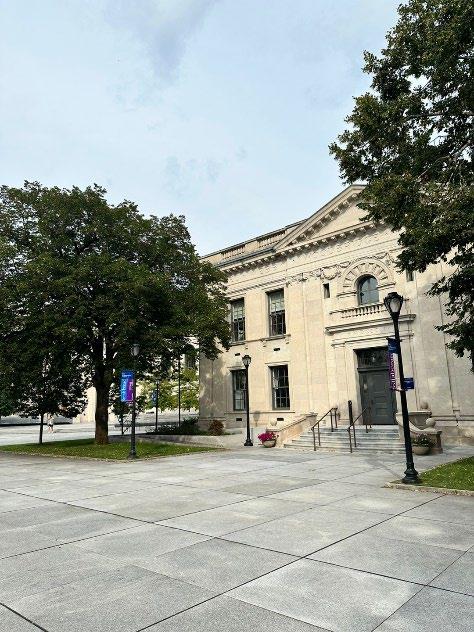
- SDG 16 and International Disarmament; UN Office for Disarmament Affairs (UNODA)

- SDG 1: No Poverty; Association of Former International Civil Servants (AFICS)
- SDG 11 Sustainable Cities and Communities; UN Department of Economic and Social Affairs (DESA)

- Greece as a Member of the United Nations; Permanent Mission of Greece to the United Nations
- Civil Society and Effective Communication; UN Department of Global Communications
- UN Department for General Assembly and Conference Management (DGACM)
- Peaceful Usage of Nucleic Energy; International Atomic Energy Agency (IAEA)
- About the Embassy; Permanent Mission of Grenada to the United Nations
Out of 9 lectures, my personal favorite was the lecture about Global Communication from the UN Department of Global Communication, led by Mr. Felipe Queipo Rego. Throughout the actual lecture, I could feel directly why he works at the UNDGC. His lecture not only contained interesting information, but it was also very enjoyable and engaging. He gave us essential information related to the fake news that is negatively affecting society. Based on what he mentioned in the lecture, we should believe in ourselves, not the internet. We should not think that every piece of information in the news articles is true, but we should always check them multiple times with access to different sources to prevent consuming any biased and stereotyped information from one source. By saying, “Belief in you”, he claimed that it is our discretion to grasp and judge whether or not the information in the news is true.
In addition to the facts of news grasp and judgment, he shared his own experience of communicating with other countries and tribes all around the world about topics related to current affairs that are varied and serious. He mentioned that his experiences were full of hardships and challenges. Within the hardships and challenges, his stories included his own way of successfully communicating and finding a point of agreement. The key to his communication was putting him in the shoes of the other person he wanted to deal with. Not just understanding them or facing the problem from their perspective, but actually trying to put yourself in their shoes. Actions like seeking a way to communicate certain information thoroughly and successfully to the tribe or suggesting better innovation in culture or architecture show that ‘I’
am putting myself in their shoes and respecting their own cultures, religions, and beliefs. Based on the lecture, that was the main key that he shared about successful communication.
It is true that one particular lecture, Global Communication, was so entertaining and engaging that it felt like 20 minutes for me, but all the lectures were equally important and meaningful for me. It was such an honor to learn new information and get clarification by revising the old information that I already had in my brain.
In conclusion, the 7-day journey filled with visits to 5 stunning universities and attendance at 9 marvelous lectures has left an indelible mark on my perspective and understanding. Albert Einstein's words, "Information is not knowledge. The only source of knowledge is experience" resonated profoundly during this experience-rich period.
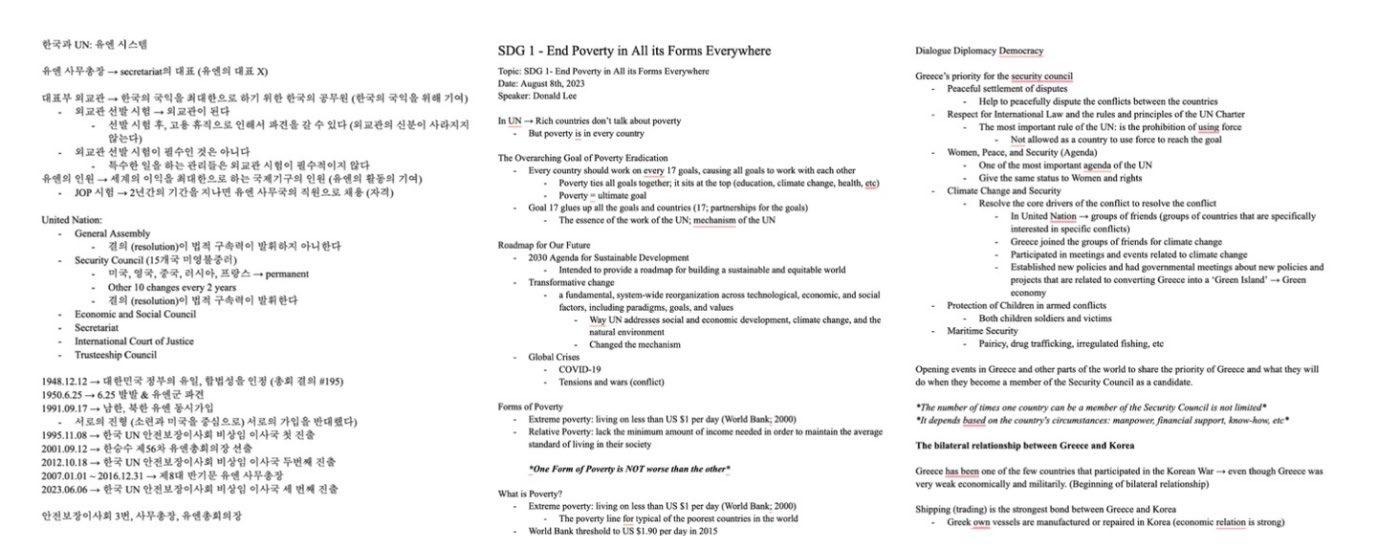
The College/University Tour opened doors to direct interactions with students, granting me insights into their lives and entrance protocols. The United Nations Headquarters tour and lectures proved to be exceptional opportunities, offering direct interactions with representatives from diverse branches of the United Nations. The depth of experience gained defies adequate expression in words, making this 7day training camp at the UN Headquarters irreplaceable. A sense of honor accompanies the privilege of collaborating with a remarkable team, culminating in influential presentations on inflation. Notably, the extraordinary individuals encountered during the camp, from fellow students to supportive teachers and assistants, magnified the value of this experience.
The 9 lectures, each addressing critical global issues, widened my understanding of our world's complexities. Among them, the lecture on Global Communication emerged as a personal favorite, delivered engagingly by Mr. Felipe Queipo Rego. His insights into discerning accurate

information and his emphasis on empathy as the core of effective communication left an enduring impression. While this lecture felt like a fleeting moment of engagement, all lectures significantly contributed to my knowledge and enriched my existing understanding.
In retrospect, this 7-day exploration has fortified my belief that experience is indeed the true source of knowledge. The amalgamation of university tours, enlightening lectures, and interactions with inspiring individuals has imparted wisdom that transcends the boundaries of conventional learning. Just as the universities' architecture imprints their legacies on their campuses, this experience has etched an unforgettable mark on my journey of growth and understanding.
I had a lot of fun during this program and also had many new experiences. It was difficult, but even though my English was a bit lacking, it was enough to understand and learn something new. Also, because of this program, I was able to spend a more fulfilling vacation than spending a vacation in Korea. I had a lot of fun in the process of meeting and communicating with many people and receiving lectures, and I naturally had the desire to live more diligently. This activity seems to be a good motivator for me.
In fact, in the past, I had a bad habit of doing a little bit of everything and doing less, but it was interesting to receive lectures from many people at the UN, and now even studying is fun to some extent, and I have a desire to do better. Another thing that left a deep impression during the course of this program was when I went to the Korean and Greek embassies. At this time, we learned about the structure of the United Nations from the people who worked in the Embassy, and it was very complex and structured. I've seen a lot of standing committees here.
Originally, I only knew about the existence of such an organization about the UN, but it is nice to know that it is divided into secretariat, permanent member, and non-permanent member. Also, it was very cool to see a few people working inside the United Nations and to see that anyone living in any country is treated equally without discrimination as long as they have the ability. In order to live in a world without discrimination like this, I want to find a job that only I can do well. I don't know what I'll do in the future, but compared to others, I started making up my mind late, but from now on, I think I had a good time steadily making me do what I can. Thank you so much for guiding me well for a week and allowing me to truly think about myself and set goals.

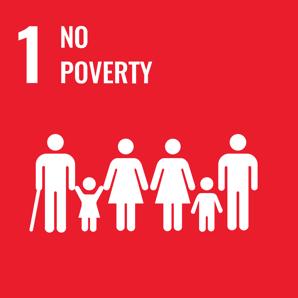
 Changsoo Lee University of California – Irvine
Changsoo Lee University of California – Irvine
Sustainable Development Goals, known as SDGs, stated by the United Nations in 2015 was a new concept before I started the training program at the United Nations Head Quarters. With acknowledging the presence of United Nations through media and past achievements, I had never heard of or put attention to the detailed work done by UN. I often thought the role of UN shrunk in the past and the influence around the nations were minimized. One of the reasons I doubted UN’s contribution to the world originated from the endless outbreaks of the North Korea’s nuclear threat. Despite several UN’s sanctions against continuous nuclear development, North Korea has ignored the international decision and maintained their expansion on nuclear weapons. However, the training program at UN transformed my vague understanding to notice the contribution of UN to the international society, making the world a better place than before.
Introducing the basics of SDGs, the seventeen goals “adopted by all United Nations Member States in 2015, provides a shared blueprint for peace and prosperity for people and the planet, now and into the future.” It states essential goals to attain by 2030 largely covering areas of people, planet, prosperity, peace, and partnerships. Out of all seventeen goals, goal one, No Poverty, captured my attention thanks to the lecture speaker Mr. Donald Lee from the Association of Former International Civil Servants. The lecture from the veteran was on the second day after my first visit to the UN. His words didn’t only include poverty among the nations, but also the fundamental values the UN carries. The very first thing Mr. Lee introduced was the ongoing transformation of poverty. When a goal is set for ‘No Poverty,’ there are several procedures and techniques that enables a country to reach the destination. Nevertheless, there might be struggles that interfere. Mr. Lee then emphasized the idea of transformative change. He claims the method to accomplishing ‘No Poverty’ is by making rearrangements such as setting new paths and asking new questions. Should the strategy change? What did we do wrong? What can we change to reach the goal? Allowing flexibility can help to make a better path for sustainable development. In addition, the definition of extreme poverty has changed. Back in the year 2000, a person living on less than $1 per day was in extreme poverty. As time passed, in 2015, the World Bank revised the definition of extreme poverty to $1.9 per day, and in 2022 the guideline climbed up to $2.15 per day to be defined as ‘extreme poverty.’
Moving on from the transformative change, there has been a fixed statement that is uncompromisable, the poverty goal. The final goal is ending worldwide poverty in all its forms. This very firm but doubtful statement left a question mark on my mind on how we were going to make it happen. With the thought in my mind, I focused on the lecture, hoping to seek ideas from Mr. Lee. He analyzed that even if a country was in wealth during a particular time doesn’t mean the country is still thriving and maintaining the conditions due to the dynamic feature of poverty. Additionally, different from absolute poverty, rich countries still have relative poverty as an issue. It isn’t extreme, but people have a hard time maintaining an average standard of living. In Mr. Lee’s words, “No Poverty is Better than Other Poverty.”
Mr. Lee suggested to have a multidimensional view on poverty, realizing different factors can affect poverty such as nutrition, child mortality, school attendance, housing assets, drinking water, electricity, and more. With this approach, it is possible to specify the necessary factors for a country and to apply appropriate solutions.
According to the United Nations, if the present trend of poverty continues, by 2030, 575 million people will still be living under extreme poverty. Recognizing the big number of 575 million people, I became curious why we are not aware of this statistic as much we should be? And what can we do to recognize this nationwide problem and provide help? Mr. Lee provided clear explanation on this question. People under poverty were unseen due to the following reasons.

With the obstacles that block us from being aware of poverty, there is a duty for us to overcome ignorance. It takes a lot of effort to invest and learn about global issues and reach out to people in need. However, Mr. Lee encouraged the participants to raise awareness and share our experience, eventually gathering people together to solve the problem. Then what can we do to contribute to end poverty in all its forms? To begin with, we must care about poverty and hunger. The first thing we should realize is that there are people in need around us. Secondly, we can donate or volunteer for social services. As students, we can use our own time to provide help to the people in need. In addition, we can spread awareness to others. It is important to let others know about the difficulties that many people face with poverty. We can encourage the public to get interested in solving the problem. An individual can’t solve every problem. There will be better outcomes as a group than from a single person. Finally, Mr. Lee suggests that it is critical to encourage individuals and the governments to support the SDGs. There are only so many things that an individual and small groups can do. By informing the government, bigger changes can be made to eliminate poverty. Consequently, the cost of inaction can result in even more severe outcomes.
By the end of the speech, I understood the UN’s effort towards solving essential issues through SDGs. Mr. Lee also encouraged us that we had to go forth with different views. Following the same path was not going to solve the problem. Personally, I must attempt to make transformative changes as I recognize the poverty around the world. Inaction is the worst thing I can do knowing the seriousness of the problem. Being part of society, the world is not a place where I live by myself. It is my duty to contribute to overcoming worldwide poverty. With that thought in my mind, one phrase came to my mind. “The change starts from an individual.”
Works Cited
“The 17 Goals | Sustainable Development.” United Nations, sdgs.un.org/goals.
“Goal 1 | Department of Economic and Social Affairs.” United Nations, sdgs.un.org/goals/goal1.



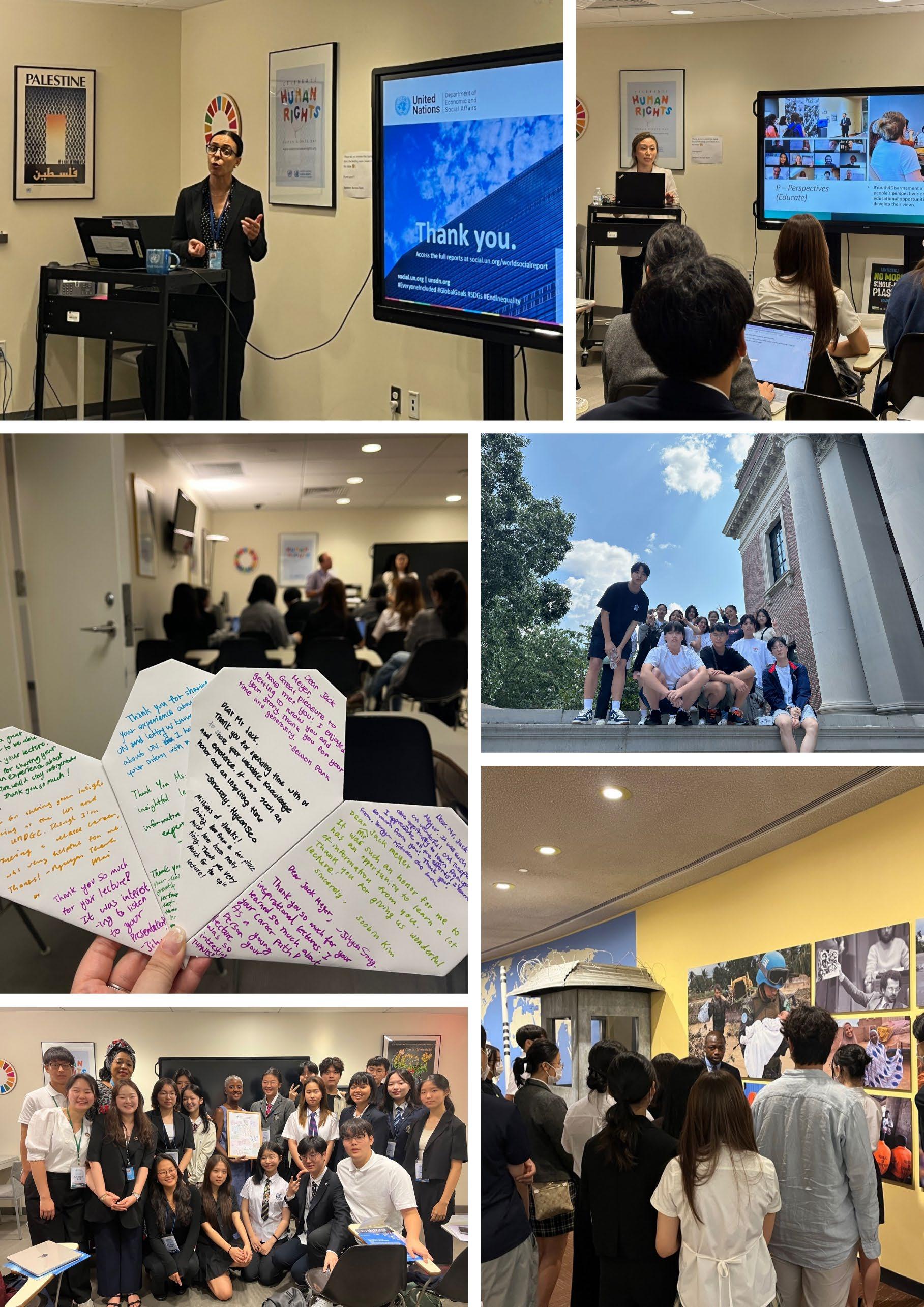
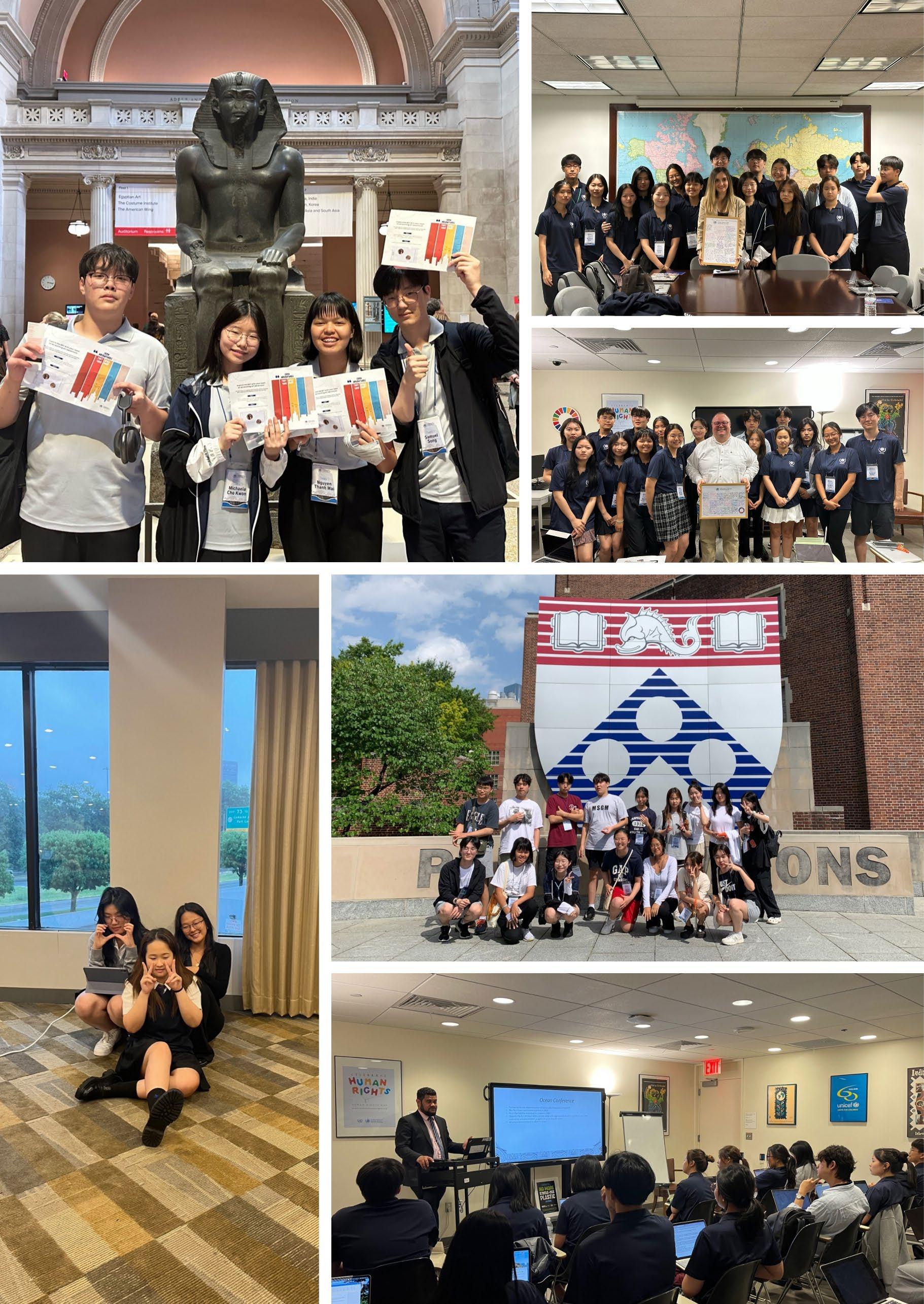

Status CSO Representative at the United Nations Department of Global Communications (UNDGC)

Program
International Understanding Education Programs and Sustainable Sponsorship Programs providing a platform for youth to discuss and explore international issues, including the United Nations Agenda, in both domestic and international levels
Website www.hopetofuture.org
Email webmaster@hopetofuture.org
Contact +82-2-6952-1616
Hope to the Future Association (HFA) is a non-profit organization registered under the Ministry of Foreign Affairs of the Republic of Korea. HFA is also associated with the United Nations Department of Global Communications (UN DGC) as a Civil Society Organization since 2014. In 2018, HFA expanded its scope as an educational institution by registering as an official member of United Nations Academic Impact (UNAI) Korea.

HFA's mission is to foster global competence and raise awareness about the importance of global citizenship education and international development among domestic and international youth. HFA provides guidance and academic inspiration with a global focus, empowering young people to become active global citizens who can positively impact their communities and the world.
Fostering global competence by raising awareness of the importance of international development among young people
Promoting global citizenship education through understanding and valuing different cultures, perspectives, and ways of life
Providing guidance and academic inspiration for the global youth by developing skills, knowledge, and confidenc
Building partnerships with various stakeholders such as governments, NGOs, and academic institutions to maximize the impact
Below are the main projects:
(1) Training Program at the United Nations Headquarters (New York/Geneva)
Academic youth training at UN Headquarters in New York and Geneva
Expert lectures by UN high officials and International Experts
Developing expertise in SDGs and vital global issues within the UN's scope
Visiting the Permanent Missions of UN member states and discussions with ambassadors
(2) International Model United Nations
Partnership with Yale MUN Secretariat since February 2018 for organizing YMUN Korea
Mock MUN sessions with diverse topics suggested by Ivy League Colleges
Representing South Korea in international MUN competitions
Engaging in MUN training led by UN Ambassadors and global experts
(3) Global Youth Forum on the United Nations
Worldwide online forum accessible for students globally
Four-day educational program enhancing understanding of the UN and international organizations
Focus on the theme 'Sustainable Development Goals and Peace'
(4) Global Leadership English Challenge
International English speaking and essay competition since 2012
Participants range from primary school to upper secondary school from more than 8 different countries
Theme revolves around the UN's global agenda such as the Sustainable Development Goals

(5) UN SDG Book Club Korea
Inaugural UN-affiliated book club in Korea initiated in 2020 via UN Publications proposal
Unique and specialized book discussions (Korean/English) organized by the Secretariat
Engages with UN-curated recommended books
Features expert lectures on literature and Sustainable Development Goals
(6) Youth Solidarity Magazine 'Global Citizen'
Showcases interviews with former ambassadors, international organization professionals, ESG entrepreneurs
Includes content and articles authored by youth journalists
(7) Donation Campaign for Children in Africa - 'Container of Hope'
Sending a 40ft container stocked with translated English books, shoes, and school supplies to developing countries in Africa
Contributions collected through student-led donation campaigns
Below are details of the cooperation organizations:
The inception of the Observer Mission of the Republic of Korea to the United Nations dates back to November 1951, marking the initial steps of engagement. This diplomatic engagement evolved into a fully established Permanent Mission to the United Nations in September 1991, coinciding with the Republic of Korea's accession to the UN.


A pivotal milestone in November 1999 led to the relocation of the Korean Mission to its present address, situated at 335 East 45th Street in New York City. Notably, the Mission's impressive 11-story building was conceptualized by the esteemed architect, Mr. I. M. Pei. Designed as a tribute to Korean tradition, this architectural masterpiece houses exhibition rooms, an outdoor garden, and a conference room, all thoughtfully infused with a distinct Korean essence. This close-knit partnership underscores the Republic of Korea's dedicated engagement with the United Nations and its continuous efforts to contribute effectively within the global arena.
See more: https://overseas.mofa.go.kr/un-en/index.do
The story of the Permanent Mission of Greece to the United Nations traces back to its establishment, serving as the Observer Mission of Greece in the early stages. This Observer Mission later evolved into a full-fledged Permanent Mission upon Greece's official accession to the United Nations.

Situated at the heart of diplomatic affairs, the Mission operates within the international landscape with dedication and distinction. It plays an active role in advocating for Greece's interests, promoting global harmony, and fostering constructive dialogues. The Mission's commitment to enhancing bilateral and multilateral relations is reflected in its engagement on a myriad of global issues, while also contributing to the sustainable development goals set by the United Nations. This enduring partnership underscores Greece's unwavering commitment to diplomacy and collaboration, making its voice heard within the global community.
See more: https://www.mfa.gr/missionsabroad/en/un-en
The trajectory of the Permanent Mission of Grenada to the United Nations is one rooted in diplomatic excellence and commitment. Originally established as the Observer Mission of Grenada, the mission transitioned into a fully recognized Permanent Mission in accordance with Grenada's membership in the United Nations.
Situated within the vibrant tapestry of international diplomacy, the Mission operates as a crucial link between Grenada and the global community. With a focus on advocating for Grenada's interests, the Mission actively engages in multilateral forums, contributing insights on key global issues. Through its diplomatic endeavors, the Mission promotes Grenada's cultural heritage, fosters economic cooperation, and addresses pressing global challenges. This partnership underscores Grenada's dedication to meaningful diplomacy and its aspiration to shape a better world for all.
See more: https://grenadaembassyusa.org/directory/permanent-mission-ofgrenada-to-the-united-nations/

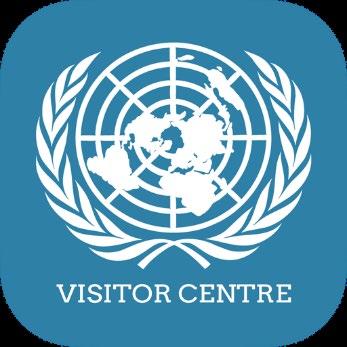

At the heart of effective global communication, the United Nations Department of Global Communications plays a pivotal role in conveying the United Nations' values, messages, and initiatives to the world. Through its multifaceted efforts, including media campaigns, public engagement, and information dissemination, the department bridges the gap between the United Nations and diverse audiences. By utilizing a variety of communication channels, including traditional media and digital platforms, the department ensures that the UN's work and its global impact are understood and accessible to a global audience. With a mission to create awareness, inspire action, and foster understanding, the United Nations Department of Global Communications serves as a conduit for global cooperation, knowledge-sharing, and collective progress.
The Department of Global Communications, previously known as the Department of Public Information (DPI), was established in 1946, by General Assembly resolution 13 (I), to promote global awareness and understanding of the work of the United Nations. In 2019, The department changed its title from the Department of Public Information to the Department of Global Communications.
See more: https://www.un.org/en/visit
ⓒ HOPE TO THE FUTURE ASSOCIATION 2023. All Rights Reserved.
All images included in this report are copyrighted to Hope to the Future Association, except for particular images noted with references on the pages. Materials can be freely used for informational purposes only.
Publish Date August 31, 2023
Publisher Hope to the Future Association
Address 4F, Dana Bldg., Bongeunsa-ro 176, Gangnam-gu, Seoul, Republic of Korea 06125
Tel +82-2-6952-1616
Fax +82-2-538-5928
Website www.hopetofuture.org
Facebook www.facebook.com/hopetothefutureassociation
Email webmaster@hopetofuture.org

